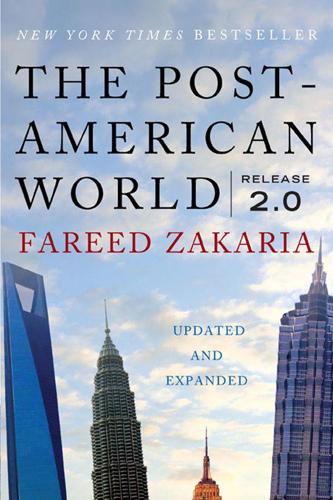
The Post-American World: Release 2.0
by
Fareed Zakaria
Published 1 Jan 2008
Benjamin Schwarz, review of Stephen E. Ambrose, The Good Fight, in Atlantic Monthly, June 2001, p. 103. 9. Naazneen Barma et al., “The World without the West,” National Interest, no. 90 (July/Aug. 2007): 23–30. 10. See a survey from the Economist on “The New Titans” in the Sept. 14, 2006, issue. 11. Jim O’Neill and Anna Stupnytska, The Long-term Outlook for the BRICs and N-11 Post Crisis (Goldman Sachs, Global Eonomics Paper no. 192, Dec. 4, 2009). 12. Thomas L. Friedman, The World Is Flat: A Brief History of the Twenty-first Century (New York: Farrar, Straus and Giroux, 2006), 226. Andy Grove’s statement is quoted in Clyde Prestowitz, Three Billion New Capitalists: The Great Shift of Wealth and Power to the East (New York: Basic Books, 2005), 8. 13.
…
Conde, “Asean and China Sign Trade and Services Accord,” International Herald Tribune, Jan. 14, 2007. 17. “Out of Their Silos; China and America,” Economist, June 10, 2006. 18. Joshua Cooper Ramo, “The Beijing Consensus” (Foreign Policy Centre, London, 2004). 5. The Ally 1. Jim O’Neill and Anna Stupnytska, The Long-term Outlook for the BRICs and N-11 Post Crisis (Goldman Sachs, Global Eonomics Paper no. 192, Dec. 4, 2009). 2. “GM to triple parts sourcing from India,” Times of India, Nov. 20, 2007. 3. Jahangir Aziz and Steven Dunaway, “China’s Rebalancing Act,” Finance & Development 44, no. 3 (Sept. 2007). 4.
…
Now, look at something like trade negotiations, and you see the developing world acting with greater and greater force. Where they might once have taken any deal offered by the West or ignored the process altogether, countries like Brazil and India play hardball until they get the deal of their choice. They have heard Western CEOs explain where the future lies. They have read the Goldman Sachs BRIC report. They know that the balance of power has shifted. The Kyoto accord (now treated as sacred because of President George W. Bush’s cavalier rejection of it) is in fact a treaty marked by its adherence to the old worldview. Kyoto assumed that if the West came together and settled on a plan, the Third World would adopt the new framework and the problem would be solved.

The Ascent of Money: A Financial History of the World
by
Niall Ferguson
Published 13 Nov 2007
From Empire to Chimerica 1 Dominic Wilson and Roopa Purushothaman, ‘Dreaming with the BRICs: The Path to 2050’, Goldman Sachs Global Economics Paper, 99 (1 October 2003). See also Jim O’Neill, ‘Building Better Global Economic BRICs’, Goldman Sachs Global Economics Paper, 66 (30 November 2001); Jim O’Neill, Dominic Wilson, Roopa Purushothaman and Anna Stupnytska, ‘How Solid are the BRICs?’, Goldman Sachs Global Economics Paper, 134 (1 December 2005). 2 Dominic Wilson and Anna Stupnytska, ‘The N-11: More than an Acronym’, Goldman Sachs Global Economics Paper, 153 (28 March 2007). 3 Goldman Sachs Global Economics Group, BRICs and Beyond (London, 2007), esp. pp. 45-72, 103-8. 4 The argument is made in Kenneth Pomeranz, The Great Divergence: China, Europe and the Making of the Modern World Economy (Princeton / Oxford, 2000).
…
The Chinese economy has achieved extraordinary feats of growth in the past thirty years, with per capita GDP increasing at a compound annual growth rate of 8.4 per cent. But in recent times the pace has, if anything, intensified. When O’Neill and his team first calculated projections of gross domestic product for the so-called BRICs (Brazil, Russia, India and China, or Big Rapidly Industrializing Countries), they envisaged that China could overtake the United States in around 2040.1 Their most recent estimates, however, have brought the date forward to 2027.2 The Goldman Sachs economists do not ignore the challenges that China undoubtedly faces, not least the demographic time bomb planted by the Communist regime’s draconian one-child policy and the environmental consequences of East Asia’s supercharged industrial revolution.3 They are aware, too, of the inflationary pressures in China, exemplified by soaring stock prices in 2007 and surging food prices in 2008.
…
As we have seen, this crisis also originated in the United States as millions of American households discovered they could not afford to service billions of dollars’ worth of subprime mortgages. There was a time when American crises like these would have plunged the rest of the global financial system into recession, if not depression. Yet at the time of writing Asia seems scarcely affected by the credit crunch in the US. Indeed, some analysts like Jim O’Neill, Head of Global Research at Goldman Sachs, say the rest of the world, led by booming China, is ‘decoupling’ itself from the American economy. If O’Neill is correct, we are living through one of the most astonishing shifts there has ever been in the global balance of financial power; the end of an era, stretching back more than a century, when the financial tempo of the world economy was set by English-speakers, first in Britain, then in America.
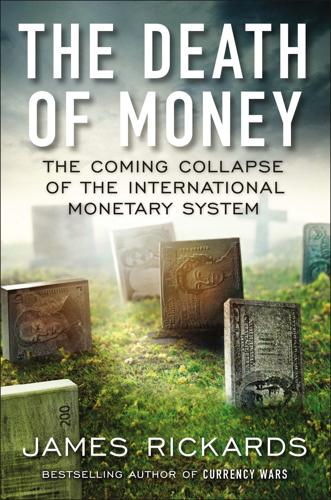
The Death of Money: The Coming Collapse of the International Monetary System
by
James Rickards
Published 7 Apr 2014
In 2010 the original BRIC group of Brazil, Russia, India, and China invited South Africa to join its ranks, and the acronym was changed to BRICS. In April 2011 South Africa attended its first BRICS leaders’ summit as a full member in Sanya, China. O’Neill has consistently downplayed the idea that South Africa should be among the BRICS, because the size of its economy and population coupled with its unemployment problem do not put it in the first rank of developing economies. This is true economically, but ironically South Africa’s addition vindicates O’Neill’s original thesis that the BRIC project was more political than economic.
…
. : Matina Stevis, “Euro Zone Closes In on Bank Plans,” Wall Street Journal, June 13, 2013, http://online.wsj.com/article/SB10001424127887323734304578542941134353614.html. Chapter 6: BELLs, BRICS, and Beyond The original term BRIC was created . . . : Jim O’Neill, “Building Better Global Economic BRICs,” Goldman Sachs, Global Economics Paper no. 66, November 30, 2001, http://www.goldmansachs.com/our-thinking/archive/archive-pdfs/build-better-brics.pdf. “The other members would need to recognise . . .”: Ibid., p. S11. He attributes economic success in the Baltics . . . : Anders Åslund, “Southern Europe Ignores Lessons from Latvia at Its Peril,” Peterson Institute for International Economics, Policy Brief no.
…
India has growth and great promise but has not come close to realizing its potential because its world-class red-tape raj stifles innovation. Among the BRICS, Brazil and South Africa come closest to being “real” economies in the sense that growth is sustainable, corruption is not completely rampant, and entrepreneurship has room to breathe. Yet there is no denying the success of the BRICS moniker. The original term BRIC was created by Jim O’Neill and his colleagues at Goldman Sachs in 2001 to highlight the group’s share of global GDP and higher growth rates compared to established large economy groups such as the G7.

50 Future Ideas You Really Need to Know
by
Richard Watson
Published 5 Nov 2013
the condensed idea The world runs out of water timeline 2003 Washing cars with water banned in Sydney, Australia 2008 70 percent of major Chinese cities water stressed 2010 India suspects China of water theft after it builds new dam 2011 Welsh organic water for sale in Los Angeles 2021 Sana’a in Yemen becomes first major city to run out of water 2032 Las Vegas runs out of water 2038 Water labeling of all consumer products 2050 Global pricing for a barrel of water (150 liters) 05 Wane of the West In 2001 Goldman Sachs, a global investment bank, listed Brazil, Russia, India and China as the four (BRIC) countries that would dominate the global economy by 2041. China has already replaced Japan as the world’s second-largest economy and may overtake the United States as early as 2027. Jim O’Neill, Chief Economist of Goldman Sachs, coined the acronym “BRICs” in a briefing paper issued in London on November 30, 2001. The briefing (Building Better Economic BRICs) described how Brazil, Russia, India and China, all chosen on the basis of population, economic development and attitudes toward globalization, were reshaping the world in terms of economic power.
…
However, despite the cynicism, nobody to date has managed to shoot the BRIC tag down. In fact, following the global recession that started in 2007/8, the concept seems stronger than ever. Asian and southern economic power is still rising and, with the arguable exception of Russia, all of the BRIC nations have emerged from the Global Financial Crisis (GFC) stronger economically than their Western counterparts, which are suffering varying degrees of decline. Goldman now predicts that China will eclipse the USA economically by 2027 and that the BRIC bloc will overtake the six leading Western nations by 2031—ten years sooner than originally predicted.
…
Moreover, the BRIC concept isn’t a purely intellectual exercise. For example, since China has now become the world’s leading car market, this has implications for demand for Brazilian copper. Thus asset prices can be adjusted. Goldman’s estimate that by 2030 there will be 2 billion new middle-class consumers living on the planet boosts demand for other resources, commodities and products ranging from oil, gas, coal, potash and water to lithium, copper, cardboard and even cheese. “Consider the past and you shall know the future.” Chinese proverb Test of strength So, will the BRICs keep growing or could some cracks start to appear in the bloc?
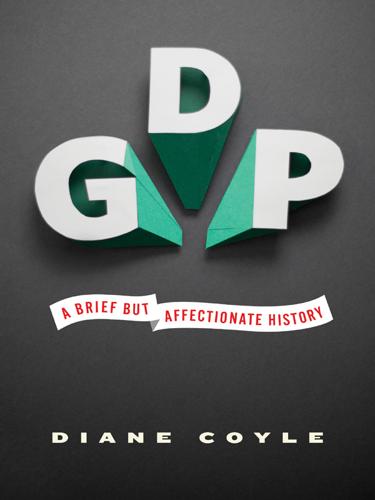
GDP: A Brief but Affectionate History
by
Diane Coyle
Published 23 Feb 2014
The message was: this is an uncomfortable ride but deal with it because global capitalism is sweeping the whole world before it. Yet some doubts started to emerge even before the onset of the financial crisis in late 2007. There was, for example, not just the rise of the BRICs, but the prospect of their overtaking the West. The economist Jim O’Neill of Goldman Sachs coined the BRIC acronym. In 2001 he first published a report noting the rapid growth of these large emerging economies and their potential to overtake some of the leading developed economies in terms of the size of GDP. Maddison’s historical data on GDP over the centuries showed that GDP per capita in China had been similar to that of the leading economies of the time, Britain, France, and the Netherlands, in 1800.
…
Despite the crisis, this remains true, and other countries have joined the ranks of so-called emerging markets, such as Indonesia, Nigeria, Ghana, and Mozambique. Still, the continuing expansion of GDP in the developed world during the mid-2000s, as well as astoundingly rapid growth in the BRIC economies (Brazil, Russia, India, and China) and, to a lesser extent, in other emerging markets, fed the arrogance of the financial markets. There was said to be a “New Paradigm” of economic growth thanks to technology-driven increases in productivity. This was the era of books with titles like Dow 36,000 and what Alan Greenspan famously described as “irrational exuberance.”1 Some economists warned early that the bubble would end disastrously.2 Many more found it easier to assume that the buoyancy of financial markets would be sustained than to stick their necks out and predict economic cataclysm—it takes courage to stand out from the pack and make an extreme and unwelcome pronouncement.
…
Abramowitz, Moses, 113 Africa, 31–33, 72, 93, 138 Anders, William, 68 art, 127–28, 132 assets, contributing to sustainability, 134–35, 137 austerity measures, 23 Australia, 73, 109, 118 automation, 128–29 Bangladesh, 53 base year, in GDP calculations, 31, 33–34 Baumol, William, 127 Benford’s Law, 3, 143n3 Berners-Lee, Tim, 81 Bhalla, Surjit, 53 Bhutan, 112 Bos, Frits, 47–48 Boskin Commission, 35, 88 Brazil, 94, 125 Bretton Woods system, 48 BRIC economies, 94, 96 Brynjolfsson, Erik, 128–30 Burundi, 73 business, purpose of, 95 Campaign for Happiness, 112 Canada, 73, 89, 109 capabilities, 72–73, 134 capital consumption, 131 capitalism: 1970s crisis of, 59–75; 2008 crisis of, 93–118; achievements of, 5–6; innovation as hallmark of, 91; investment and depreciation, 131–33 capital widening, 132 Carson, Rachel, Silent Spring, 69 centrally planned economies, 46–47, 56, 60, 66–68 Central Statistical Office (United Kingdom), 18 Chad, 73 chain-weighted price indexes, 33–34 China: economic growth of, 94, 96–97; economic limitations of, 96–97; GDP of, 51–53, 96, 97; living standards in, 51, 57, 96; manufacturing and exporting in, 82, 97, 125; U.S. relations with, 97 Christophers, Brett, 104, 105 circular flow, 26–27, 27f, 57, 63 Clark, Colin, 12, 13, 17, 50, 84 Clean Water Act (1972), 69 Clegg, Nick, 110 Cobb, John, 116 Cold War, 46–47, 60, 66 communications technology, 81–82 communism, 46–47, 60, 66–68, 96 compound arithmetic, 64, 83, 130–31 comprehensive wealth, 133, 135 computers, 80–82, 87–88 conspicuous consumption, 112 consumerism, 45, 112 consumer spending (C), 27–28, 45 consumer surplus, 130 customization, of goods and services, 123–25 Cuyahoga River, 69 Daly, Herman, 116 Darling, Alastair, 102 dashboard approach, 118, 136 data collection, 33, 37, 51–53, 137–38 Data Resources, Incorporated (DRI), 21 Davenant, Charles, 8 David, Paul, 79 Defense Advanced Research Projects Agency (DARPA), 81 defense spending, 14–16 deferred stock options, 37 deflators, 31 Defoe, Daniel, 9 DeLong, Brad, 86, 117 Democratic Republic of Congo, 54, 73 Deng Xiao Ping, 96 depreciation, 25, 30, 131–33 developed/high-income countries: GDP of, 72, 93; informal economy in, 107 developing/low-income countries: economic growth/stagnation in, 61, 71–72; GDP of, 32–33, 51, 71–72; informal economy in, 107, 109; and PPP, 50–53 development aid, 72, 74 digital products and services, 129–31 disasters, GDP growth after, 43 Domar, Evsey, 55 double-entry bookkeeping, 8 Easterlin, Richard, 111 Eckstein, Otto, 21 econometric models, 20–21, 23 economic growth: critiques of, 60; in eighteenth and nineteenth centuries, 12; lack of, in developing countries, 61; meanings and measures of, 15; meanings of, 123; potential rate of, 82–83; problems arising from, 63–64; real, 30–31; significance of, 135–36; sustainable, 71, 116, 137; theories/models of, 55–57, 78–81; virtuous circle of, 57, 59, 64, 73, 79; well-being and welfare aided by, 135 economics, challenges to conventional, 59–61 economic welfare.
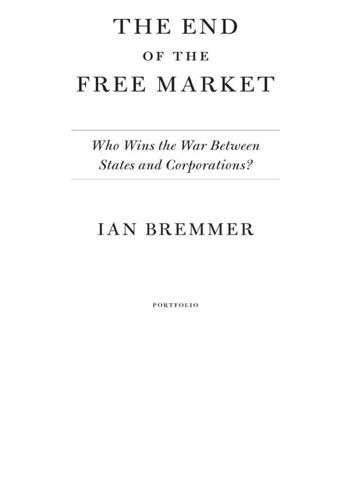
The End of the Free Market: Who Wins the War Between States and Corporations?
by
Ian Bremmer
Published 12 May 2010
In a Global Economics paper titled “Dreaming with BRICs: The Path to 2050,” published in 2003, the firm’s economists argued that, given sound political decision making and good luck, “in less than 40 years, the BRICs economies together could be larger than the original G6 [the United States, United Kingdom, Germany, France, Italy, and Japan] in dollar terms.”37 With sustained long-term economic growth comes new political clout. Once Brazil, Russia, India, and China wield greater influence over the rules governing global financial flows, intellectual-property rights, and trade issues, the United States, Europe, and Japan will face a very different set of political challenges than they do today. But the Goldman Sachs analysts argued that the BRICs would hit their long-term targets only if their political leaders committed themselves to “maintain policies and develop institutions that are supportive of growth.”
…
These risks will grow over time. Since a team of Goldman Sachs economists first coined the term BRIC (Brazil, Russia, India, and China) in 2001, these countries have captured the collective imaginations of multinational companies, the international investment community, and the Western media. In a Global Economics paper titled “Dreaming with BRICs: The Path to 2050,” published in 2003, the firm’s economists argued that, given sound political decision making and good luck, “in less than 40 years, the BRICs economies together could be larger than the original G6 [the United States, United Kingdom, Germany, France, Italy, and Japan] in dollar terms.”37 With sustained long-term economic growth comes new political clout.
…
It was born in part out of frustration that Western international oil companies effectively decided oil prices and production levels and out of a desire among oil-owning governments to control those mechanisms themselves. 37 The acronym BRIC was coined by Jim O’Neill in Goldman Sachs Global Economic Group paper no. 60, “Building Better Global Economic BRICs,” Nov. 2001. Goldman’s predictions for BRIC and other emerging markets’ growth rates were revised upward by Dominic Wilson and Roopa Purushothaman in “Dreaming with BRICs: The Path to 2050,” Global Economics Paper no. 99, Oct. 2003, and upward again in BRICs and Beyond, Nov. 2007, http://www2.goldmansachs.com/ideas/brics/book/BRIC-Full.pdf. 38 Medvedev Confident in His Bank Accounts Despite Crisis: Report, Agence France Presse, Oct. 29, 2008, http://afp.google.com/article/ALeqM5jJGwiNtdVPcD3GapKrTdLV1AGdlw.
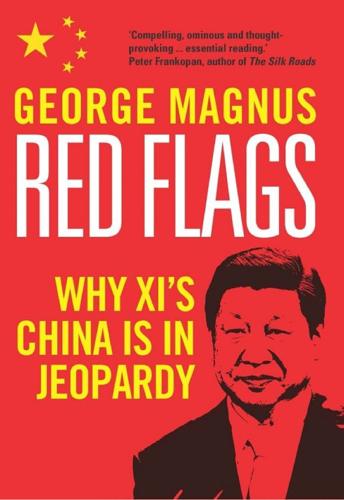
Red Flags: Why Xi's China Is in Jeopardy
by
George Magnus
Published 10 Sep 2018
In a now well-known 2001 economic research paper called ‘Building Better Global Economic BRICs’, the US investment bank Goldman Sachs argued, in the immediate aftermath of the 9/11 terror attacks in the US, that the structure of the global economy was going to change radically over the next fifty years, courtesy of sustainably faster growth in Brazil, Russia, India and China (later South Africa too) than in advanced economies.5 The bank embraced the acronym, which became a major marketing coup, and common parlance around the world for about a decade or so. The concept was catchy, but inherently flawed. China is the only BRICS country to have enjoyed steady economic success.
…
Xu Huang and Michael Harris Bond, Edward Elgar Publishing, 2012 Yasheng Huang, Capitalism with Chinese Characteristics: Entrepreneurship and the State, MIT Press, 2008 INDEX Unattributed entries, for example geography, refer to the book’s metatopic, China. 1st Five-Year Plan (i) 1st Party Congress (Chinese Communist Party) (i) 5G networks (i) 9/11 (i) 11th Central Committee, third plenum (i) 11th Party Congress (i) 13th Five-Year Plan advanced information and digital systems (i) aims of (i) BRI incorporated into (i) manufacturing and technology (i) pension schemes (i) transport (i) 14th Party Congress (i) 15th Party Congress (i) 18th Party Congress (i), (ii) third plenum (i), (ii), (iii), (iv) 19th Party Congress ‘central contradiction’ restated (i) supply-side reforms (i) Xi addresses (i), (ii), (iii) 21st-Century Maritime Silk Road see Belt and Road Initiative 2000 Olympic Games (i) 2008 Olympic Games (i), (ii) Abe, Shinzō (i) Acemoglu, Daron (i) Action Plan (AI) (i) Addis Ababa (i), (ii) Africa Admiral Zheng (i) BRI concept and (i) Chinese interest in (i) colonialist criticism (i) Japan and (i) loans to (i) metal ore from (i) Silk Road (i) Sub-Saharan Africa (i) ageing trap (i) see also population statistics birth rate (i) consequences of ageing (i) demographic dividends (i), (ii) family structures (i) healthcare (i) ‘iron rice bowl’ (i) mortality rates (i) non-communicable disease (i) old-age dependency ratios (i), (ii), (iii) pensions (i) retirement age (i) Agricultural Bank of China (i) Agricultural Development Bank of China (i) agriculture (i), (ii), (iii) Agriculture and Rural Affairs, Ministry of (i) AI (i), (ii), (iii) AI Innovation and Development Megaproject (i) AI Potential Index (i) Air China (i) Airbus (i), (ii) Aixtron SE (i) Alibaba (i), (ii), (iii), (iv) Alphabet (i) AlphaGo (i), (ii) Alsace-Lorraine (i) Amoy (i) Anbang Insurance (i), (ii), (iii) Angola (i) Angus Maddison project (i) Ant Financial (i), (ii) anti-corruption campaigns 2014 (i) in financial sector (i) Ming dynasty (i) Xi launches (i), (ii), (iii) Apple (i), (ii), (iii) Arab Spring (i) Arabian Sea (i) Arctic (i) Argentina (i), (ii), (iii) Armenia (i) Article IV report (IMF) (i) see also IMF ASEAN (Association of South East Asian Nations) (i), (ii) Asia China the dominant power (i), (ii) Global Innovation Index (i) Obama tours (i) Paul Krugman’s book (i) ‘Pivot to Asia’ (i) state enterprises and intervention (i) Asia-Pacific Economic Cooperation (i) Asian Development Bank (i), (ii) Asian Financial Crisis (1997–98) (i), (ii), (iii), (iv) Asian Infrastructure Investment Bank (i), (ii), (iii), (iv) Asian Tiger economies (i), (ii), (iii), (iv) Atatürk, Mustafa Kemal (i) Australia Chinese investment in (i) Chinese seapower and (i) free trade agreement with (i) immigration rates and WAP (i) innovation statistics (i) pushing back against China (i), (ii) Renminbi reserves (i) Austria (i), (ii) Austria-Hungary (i) automobiles (i), (ii) Babylonia (i) bad debt see debt bad loans (i), (ii) Baidu (i), (ii) Balkans (i) Baltic (i) Baluchistan (i) Bandung (i), (ii) Bangladesh heavy involvement with (i) Indian sphere of influence (i) low value manufacturing moves to (i), (ii) Padma Bridge project (i) Bank of China (i), (ii) Bank for International Settlements (i) banks (i) see also debt and finance; WMPs (wealth management products) assets growth, effects of (i) bad loans problem (i) bank failures (i) central bank created (i) major banks see individual entries non-performing loans (i), (ii), (iii), (iv), (v), (vi) regulators step in (i) repo market (i), (ii) shadow banks (i), (ii), (iii), (iv), (v), (vi), (vii), (viii), (ix) n18 smaller banks at risk (i) Baoneng Group (i) Baosteel (i) BBC (i) Bear Stearns (i) Beijing see also Peking 1993 (i) central and local government (i), (ii), (iii) Mao arrives (i) Olympics (i) pollution (i) price rises (i) US delegation (i) water supply (i) Beijing-Hangzhou Grand Canal (i) Belarus (i) Belgrade (i) Bell (i) Belt and Road Initiative (BRI) (i) debt problems in recipient nations (i) description, size and nature (i) economic drivers (i) financing and funding (i), (ii) first Forum (i) geopolitical drivers and disputes (i) Marshall Plan and (i), (ii) project investment (i), (ii) reordering of Indo-Pacific (i) Silk Road and (i), (ii), (iii) ways of looking at (i), (ii) benevolent dictators (i) Bering Strait (i) big data (i) birth rate (i) see also population statistics Bloomberg (i) Bo Xilai (i) Boeing (i), (ii) bond markets (i) Bosphorus Strait (i) Boxers (i), (ii) Brazil BRICS (i), (ii), (iii) middle income, example of (i), (ii), (iii) US steel imports (i) Bretton Woods (i) Brexit (i), (ii) BRICS (i) ‘Building Better Global BRICs’ (Goldman Sachs) (i) BRICS Bank (i), (ii) Britain (i) Boxer Rebellion (i) Brexit (i), (ii) Hong Kong (i) new claims (i) Renminbi reserves (i) Broadcom (i) Brunei Darussalam (i), (ii), (iii) Brzezinski, Zbigniew (i) Budapest (i) budget constraints (i), (ii) Bulgaria (i) Bund, the (Shanghai) (i) Bundesbank (i) bureaucracy (i), (ii), (iii), (iv) Bush, George W.
…
See ‘Company 0001, the first foreign company in Shenzhen’, Nikkei Asian Review, 18 December 2016, <https://asia.nikkei.com/Business/Dhanin-Chearavanont-18-Company-0001-the-first-foreign-company-in-Shenzhen>. 4. Peter Nolan, Re-Balancing China, Anthem Press, 2015, p. 32. 5. Goldman Sachs, ‘Building Better Global Economic BRICs’, <http://www.goldmansachs.com/our-thinking/archive/archive-pdfs/build-better-brics.pdf>. 6. Xinhua News, <http://news.xinhuanet.com/english/2007-03/16/content_5856569.htm>, 16 March 2007. 7. ‘China’s ‘‘Authoritative” Warning on Debt: People’s Daily Excerpts’, Bloomberg, 9 May 2016, <https://www.bloomberg.com/news/articles/2016-05-09/china-s-authoritative-warning-on-debt-people-s-daily-excerpts>. 1 Echoes 1.
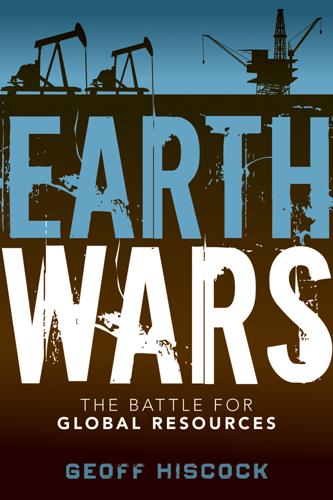
Earth Wars: The Battle for Global Resources
by
Geoff Hiscock
Published 23 Apr 2012
Ibid., p. 36. 7. HSBC, “The World in 2050,” Hong Kong, January 2011. 8. Goldman Sachs, “BRICs and Beyond,” 23 November 2007. 9. Remarks at Prime Minister Yoshihiko Noda’s press conference, 2 September 2011. 10. Son, Masayoshi, “Tsunami Clears Way for Solar-Powered Japan,” Asia Times, 23 September 2011. 11. Prof. Kazunari Domen, “Development of Photocatalysts for Energy Conversion,” www.domen.t.u-tokyo.ac.jp/english/index_framepage_E.html. CHAPTER 13 BRACQK (Brazil, Russia, Australia, Canada, Qatar, Kazakhstan) Is the New BRIC Russia cannot be great and will not remain a great power if we do not develop the Far East region.
…
Energy Information Administration strikes a cautionary note on Indonesian exports and the development of new mines there, citing infrastructure and environmental concerns and whether domestic coal consumption might be given preference over exports. Indonesia is one of the Next-11 economies identified by investment bank Goldman Sachs as likely to follow the high-growth path set by Brazil, Russia, India, and China. Exhibit 6.4 Countries with biggest coal reserves, proven reserves at end of 2009 (billions of tonnes) * primarily lignite (brown coal) Source: World Coal Association Coal’s Technological Response Although there is no doubt coal and other fossil fuels such as oil and gas will remain a key part of the world’s energy supply over the next 20 years, coal’s contribution to global warming has evoked a technological response.
…
Investment Door Chapter 12: Japan after the Deluge Political Shifts in North Asia Player of Consequence Equity Partners around the Globe JX Holdings Builds Energy, Metals Business SoftBank’s “New Energy” Vision Renewable Potential Chapter 13: BRACQK (Brazil, Russia, Australia, Canada, Qatar, Kazakhstan) Is the New BRIC Uncertainty for Foreign Investment Brazil’s Pre-Salt Independence Australia’s Foot on the Gas Canada’s Athabasca Challenge Qatar Fires up Its LNG Trains Kazakhstan’s Fields of Dreams Chapter 14: The Up and Comers Turkey: A Pivotal Position Iran: Rich in Oil and Gas, but Lacking Technology and International Friends Indonesia: Growing Spending Power Mexico: Exploiting the Potential Chapter 15: What Happens Next Significant Developments Ahead Survive and Prosper Challenges for China, India Replicated Conclusion Bibliography Acknowledgments About the Author Index Copyright © 2012 John Wiley & Sons Singapore Pte.
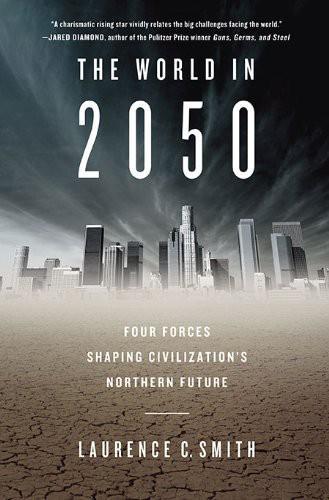
The World in 2050: Four Forces Shaping Civilization's Northern Future
by
Laurence C. Smith
Published 22 Sep 2010
The transformation is being fueled by a globalizing economy, marked by an historic shift of relative wealth and economic power from West to East, and by the increasing weight of new players—especially China and India. China and India—along with Brazil and Russia—are considered such economic giants-in-waiting that they’ve won their own acronym, the “BRICs” (from the first letters of Brazil, Russia, India, and China), first coined in 2003 by the global financial services company Goldman Sachs.66 According to econometric model projections by Goldman Sachs, PricewaterhouseCoopers, the Japan Center for Economic Research, the International Monetary Fund, and others, the BRICs are on pace to displace current economic leaders faster than you might think, thus redrawing the map of global economic power over the next forty years.67 The world’s three biggest economies today are the United States, Japan, and Germany.
…
.: RFF Press, 2002), 160 pp. 101 Matthew R. Simmons, Twilight in the Desert: The Coming Saudi Oil Shock and the World Economy (Hoboken, N.J.: John Wiley & Sons, 2005), 428 pp. 102 A very detailed analysis comes from the National Institute for Materials Science in Tsukuba, Japan. The authors use the Goldman Sachs BRICs and G6 economic projections discussed in Chapter 2 to project future demand for twenty-two metals. K. Halada, M. Shimada, K. Ijima, “Forecasting of the Consumption of Metals up to 2050,” Materials Transactions 49, no. 3 (2008): 402-410. 103 J. B. Legarth, “Sustainable Metal Resource Management—the Need for Industrial Development: Efficiency Improvement Demands on Metal Resource Management to Enable a Sustainable Supply until 2050,” Journal of Cleaner Production 4, no. 2 (1996): 97-104; see also C.
…
Asia’s rising cities demand that the economies of China and India grow many times over, and this will also multiply per capita incomes in these countries. However, that progress in personal wealth will still be relative to the extremely low per capita incomes of today (averaging less than $3,000 per year for both countries in 2010). With the sole exception of Russia,72 personal incomes in BRIC countries are not expected to surpass those of France, Germany, Italy, Japan, the United Kingdom, or the United States by 2050. An average Indian today makes less than one-thirtieth the income of an average Brit. In 2050 she or he will make less than one-third .73 That’s a tenfold improvement, to be sure, but still a yawning divide.

The Quest: Energy, Security, and the Remaking of the Modern World
by
Daniel Yergin
Published 14 May 2011
This pension fund thought it was acting as a prudent investor, hedging its portfolio against disruption and allocating among assets to protect its retirees. But, by the definition of the futures market, it was a speculator.9 THE “BRICs”: THE INVESTMENT OPPORTUNITY OF A GENERATION Putting money to work in oil-based financial instruments was also seen as a way to participate on the greatest economic trend of a generation: globalization and economic growth in China, India, and other emerging markets. In November 2001 an economist at Goldman Sachs, Jim O’Neill, put out a research paper hatching a new concept: “the BRICs”—Brazil, Russia, India, and China. These four large-population economies, he said, were destined to grow faster than the main industrial economies.
…
future development of new biological perspective for vision of see also ethanol biological weapons biomass energy density of heating of biotechnology bitumen Black Sea Blair, Dennis Blair, Tony Blancard, Jean Blavatnik, Len Blue Stream BMW Bodman, Samuel Boeing Boesi, Tito Bogdanov, Vladimir Bohr, Niels Bolin, Bert Bolívar, Simón Bolshevik Revolution (1917) Bonga Bono, Sonny Borderless World, The Borjomi mineral water Borzhomi springs Bosporus Strait Boston Harbor Bouazizi, Mohammed “boutique gasoline” regulation Bowlin, Michael BP Amoco deal of ARCO and biofuels and BTC pipeline and Deepwater Horizon and green credentials and LNG and Mobil merger attempt of in Russia BP Amoco, ARCO purchased by BP Solar Brandeis, Louis Brandt, Willy Bransby, David Brazil as BRIC climate change and economy of electricity in ethanol of hydropower in oil of Bremer, L. Paul, III Brent Breyer, Stephen BRICs (Brazil, Russia, India, and China) British Antarctic Survey British Association for the Advancement of Science British Columbia British Gas Council broadband revolution Broussard, Martha Lou Brown, Gordon Brown, Jerry Brown, Scott Browne, John Browner, Carol Brunei Brush, Charles Bryson, John Buenos Aires Buffalo Forge Company Buffett, Warren Buick buildings conservation and efficiency by design and energy efficiency and gadgiwatts and mind-set and patent number 808897 and bunkering Bunsen, Robert Bureau of Land Management, U.S.
…
Senate Subcommittee on Energy and Water Development, June 25, 2008; Wall Street Journal, April 26, 2004 (“guidelines,” “curious,” “skeptically”). 4 IHS CERA, “Capital Costs Analysis Forum—Upstream,” January 2009. 5 Ke Tang and Wei Xiong , “Index Investment and the Financialization of Commodities” January 2011, p. 13 (“co-move”). 6 Daniel O’Sullivan, Black Gold, Paper Barrels and Oil Price Barrels (London: Harriman House, 2009). 7 Joe Roeber, The Evolution of Oil Markets: Trading Instruments and Their Role in Oil Price Formation (Royal Institute of International Affairs, 1993). 8 CME Group, “2010 Commodities Trading Challenge: Competition Rules and Procedures” (“anticipating”). 9 Interview. 10 Jim O’Neill to author; Jim O’Neill, “Building Better Global Economic BRICs, Goldman Sachs Global Economics Paper No. 66, November 30, 2001; Financial Times, January 15, 2010. 11 Interview with Mark Fisher. 12 Interview with Robert Shiller. Shiller’s definition of a speculative bubble: “A situation in which news of price increases spur investor enthusiasm, which spreads by psychological contagion from person to person, in the process amplifying stories that might justify the price increases and bringing in a larger and larger class of investors, who, despite doubts about the real value of an investment, are drawn to it partly through envy of others’ successes and partly through a gambler’s excitement.”
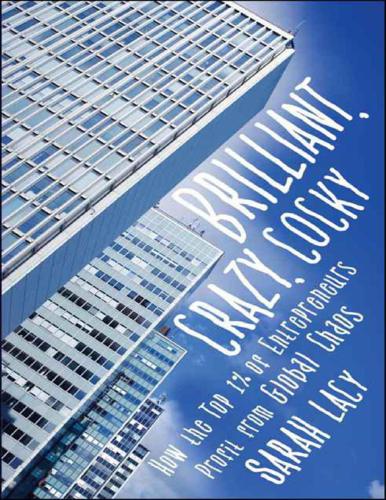
Brilliant, Crazy, Cocky: How the Top 1% of Entrepreneurs Profit From Global Chaos
by
Sarah Lacy
Published 6 Jan 2011
Americans may wish the next few decades’ growth was in the American heartland where the demise of manufacturing has left mil ions unemployed and local economies sputtering, but it’s not. It’s in emerging markets. Goldman Sachs first argued this point to Wal Street in 2001 with a paper entitled “Building Better Global Economic BRICs,”2 in which the investment bank predicted that Brazil, Russia, India, and China would make up more than 10 percent of the world GDP by 2010. By 2007, it was already 15 percent. So much for the al - important G7 nations of Canada, France, Germany, Italy, Japan, the United Kingdom, and the United States; by the middle of this century, the seven largest economies in the world wil be China, the United States, India, Brazil, Mexico, Russia, and Indonesia.3 In these countries, growing middle classes are driving that growth, not simply the luxury purchases of the wealthy or corporate and government spending.
…
The United States made itself a superpower through its entrepreneurial spirit, and that same self-reliance is propel ing the best sectors of Brazil’s nascent entrepreneur ecosystem some 50 years later. There are even some advantages to being ignored by the West. Just ask entrepreneurs in Indonesia, a country larger than Brazil that is so ignored it doesn’t even make it into Goldman Sach’s BRIC moniker. And Indonesia is a country where the legacy effects of colonization on entrepreneurship loom even larger. aSarah Lacy is currently the editor-at-large for TechCrunch. Indonesia Chapter 9 The Emerging World’s Big Secret When Ciputra was in his late twenties, he sent a letter to Walt Disney.
…
Perlman, “Redemocratization Viewed from Below: Urban Poverty and Politics in Rio de Janeiro, 1968–2005,” in Peter R. Kingstone and Timothy J. Power, eds., Democratic Brazil Revisited (Pittsburgh, PA: University of Pittsburgh Press, 2008), p. 265. 2. Jim O’Neil , “Building Better Global Economic BRICs,” (New York: Goldman Sachs, November 30, 2001). 3. Jim O’Neil , “The N-11: More Than an Acronym,” BRICs and Beyond (New York: Goldman Sachs, 2007), p. 140. 4. Paul Krugman, “The Big Zero,” The New York Times, December 27, 2009. 5. Gary P. Pisano, “The U.S. is Outsourcing Away Its Competitive Edge,” (Harvard Business Review Blogs, October 1, 2009). 6.

The Age of Stagnation: Why Perpetual Growth Is Unattainable and the Global Economy Is in Peril
by
Satyajit Das
Published 9 Feb 2016
The growth in trade and cross-border investment that underpinned prosperity and development is weaker, removing a key driver of economic growth. In 2001 Goldman Sachs's Jim O’Neill coined the term BRIC, for Brazil, Russia, India, and China. He predicted that these nations would overtake the six largest Western economies by 2041 (later revised to 2039 then 2032), arguing that there would be a corresponding decline in the economic status and power of the developed world. When he launched the idea of BRIC, O’Neill had little firsthand knowledge of these economies. He was looking for something big with which to establish himself as the newly appointed sole head of the investment bank's economics unit.
…
In 2010, Jim O'Neill introduced a new acronym for favored markets—CIVETS (Colombia, Indonesia, Vietnam, Egypt, Turkey, and South Africa). A competitor coined the term MIST (Mexico, Indonesia, South Korea, and Turkey). Online humorists manufactured other acronyms for attractive investment opportunities: one was ANARCHY (Albania, Nauru or North Korea, Afghanistan, Romania, Chad, Haiti, and Yemen). In early 2011, as North Africa and the Middle East were rent apart by political uprisings, an anonymous blogger wrote that emerging market investors were hunting in the MIST for CIVETS with only BRICS. Notwithstanding their long-term potential, emerging markets increasingly resembled Potemkin villages.
…
Even the neat acronym was derivative of earlier formulations: LDCs (less developed countries), NICs (newly industrialized countries), EM (emerging markets), and FM (frontier markets). But O’Neill's forecast that the BRICs had potential for rapid growth captured attention. The glib term became synonymous with an economic future driven by emerging nations. Businesses rushed to develop their BRIC strategy. Even rivals capitulated, creating dedicated funds to invest in the BRICs. The countries themselves slowly embraced the idea, initiating regular summits. Invited by China, South Africa joined in 2010, converting the group into BRICS. In 2014, it announced plans for a new development bank, with US$50 billion in capital to finance infrastructure and a US$100 billion Contingent Reserve Arrangement to assist members in financial difficulties.
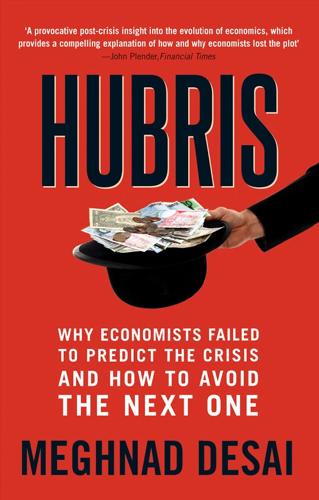
Hubris: Why Economists Failed to Predict the Crisis and How to Avoid the Next One
by
Meghnad Desai
Published 15 Feb 2015
Even the developing economies, previously victims of crises and often dismissed as problems, now became known as emerging economies as they benefited from continuous growth of the developed economies and the benevolent effects of the WTO. Jim O’Neill of Goldman Sachs coined the acronym BRIC to represent Brazil, Russia, India and China as a group of four high-growth economies. Later, South Africa was added to the list to make it BRICS. The creation of the acronym signified the shifting center of global economic activity eastward and southward. China had notched up double-digit GDP growth for nearly 20 years by then and had emerged as a potential giant soon to rival Japan and the US in size of total GDP.
…
abolition of slavery (i) absolute poverty (i) accelerator principle (i) accounting, concealing problems (i) accumulation, of profit (i) adaptive expectations (i), (ii) Adelman, Frank and Irma (i) aggregate demand curve (i), (ii) equation (i) price (i) aggregate effective demand (i), (ii) aggregate supply curve (i), (ii) equation (i) price (i) aggressive lending (i) agrarian unrest (i) agricultural prices (i) alternative narrative long perspective (i) merits (i) optimism/pessimism (i) overview (i) America, post-revolution (i) see also United States American Keynesianism (i), (ii) American Revolution (i) Anglo-French War (i), (ii), (iii), (iv) animal spirits (i), (ii) anti-communism (i) Arab-Israeli War, 1973 (i) Aristotle, view of money (i) Arrow, Kenneth (i) Asian countries, foreign exchange (i) Asian Crisis, 1997 (i), (ii) Attwood, Thomas (i) August 15, 2007 (i), (ii) Austrian capital theory (i) Austro-Hungarian Empire (i) average costs (i) Baby Boom (i) bank credit access to (i) as driver of investment (i) Bank of England (i), (ii), (iii) Bank of International Settlements (BIS), warnings of crisis (i) Bank of the United States (i) banking (i) deregulation (i) growth in (i), (ii) political debate (i) banking system, as root of cycles (i) banknotes convertibility (i), (ii) excess (i) issuing (i) non-convertible (i) bankruptcy, prediction of (i) banks Great Depression (i) Great Recession (i) lending (i) recapitalization (i) regulation (i) rescue programs (i) run on (i) Baring Brothers (i), (ii) Bastard Keynesianism (i), (ii) Battle of Beachy Head (i) Battle of Waterloo (i) Bear Stearns (i), (ii) bell-shaped distribution (i) Berlin Wall (i) Bernanke, Ben (i) Big Bang (i) Black, Fisher (i), (ii), (iii) Black Swan event (i) Black Thursday (i) Board of Trade (i) Böhm-Bawerk, Eugene (i) bonds (i), (ii), (iii) boom and bust (i), (ii), (iii) boom, post–World War II (i) borrowing (i), (ii) beyond capacity (i) brokers (i) as cause of recession (i) as response to recession (i) bourgeoisie (i) Brazil (i) bread, production and supply (i) Bretton Woods system (i), (ii), (iii) BRICS countries (i) Britain post-war status (i) see also United Kingdom Brookings-SSRC Econometric Model of the US Economy (i) Brown, Gordon (i), (ii) Bryan, William Jennings (i) bubbles (i) budget deficit, US (i) built-in stabilizers (i) bull run (i) Bullion Report (i) Bundesbank (i) Burns, Arthur (i), (ii) business attracting capital (i) dependence on credit (i) Butler, R.
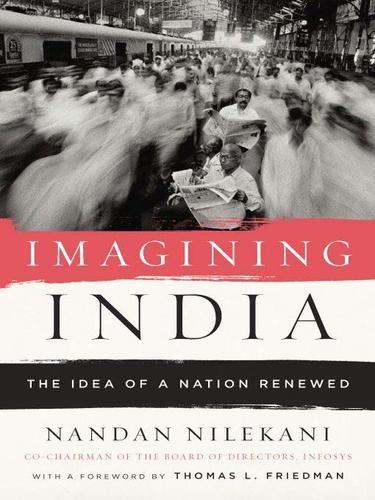
Imagining India
by
Nandan Nilekani
Published 25 Nov 2008
In its strengths, India is a jigsaw piece that is falling perfectly into place in the landscape of the global economy. The single biggest advantage in this context is India’s demographic dividend, which is well-known thanks to the landmark Goldman Sachs BRICs report that came out in 2003. I discuss this demographic opportunity with Roopa Purushothaman, the brilliant and precocious economist—she was twenty-five at the time of the BRICs analysis—who coauthored the report. “We didn’t realize at the time the impact these projections would have,” Roopa tells me, “but the report created waves, and it drew a lot of attention to the potential effects of India’s demographic dividend.”
…
Pollard, The Genesis of Modern Management, 1965, cited in Keith Grint, The Sociology of Work, Polity Publishers, 2005. 21 Sunil Amrith, “Political Culture of Health in India: A Historical Perspective,” Economic and Political Weekly, January 2007. 22 Helen (Hong) Qiao, “Will China Grow Old Before Getting Rich?,” in Goldman Sachs BRICs Report, 2006. 23 Valerie Hudson and Andrea den Boer, Bare Branches: The Security Implications of Asia’s Surplus Male Population. BCSIA Studies in International Security, MIT Press, 2004. 24 Myron Weiner and Michael S. Teitelbaum, Political Demography, Demographic Engineering, Berghahn Books, 2001. 25 Ibid. 26 Dominic Wilson and Roopa Purushothaman, “Dreaming with BRICs: The Path to 2050,” Global Economics Paper No. 99, Goldman Sachs, October 2003. 27 P. N. Mari Bhat, “Demographic Scenario, 2025,” Study #S-15, Research Projects on India—2025 conducted by Centre for Policy Research, New Delhi, July 2003. 28 Tim Dyson, “India’s Population: The Future,” in Twenty-First Century India: Population, Economy, Human Development, and the Environment, edited by Tim Dyson, Robert Cassen and Leela Visaria, Oxford University Press, 2004. 29 P.
…
Gandhi, Rahul Gandhi, Rajiv Gandhi, Sanjay Gandhi, Shailesh gas Gas Authority of India Ltd (GAIL) Gates, Bill Gates, Melinda Gates Foundation Gawli, Arun General Committee of Public Instruction General Motors George III, King of England George V, King of England Ghosh, Amitav Ghosh, Jayati Giuliani, Rudolph global information system (GIS) maps global warming Godrej Storwel cupboards Gokhale, Gopal Krishna gold Golden Quadrilateral project Goldman Sachs BRICs report Good Capitalism, Bad Capitalism (Baumol, Litan and Schramm) goods and services tax (GST) Gopalaswami, N. Gopinath, Captain Gorbachev, Mikhail Goswami, Omkar government, Indian: autocratic ; bureaucracy of ; corruption in ; decentralized; employment in ; reform of ; regulation by ; rural ; state and local ; top-down approach to transparency in ; urban Government of India Act (1935) government schools Govinda Gowalkar, M.

Extreme Money: Masters of the Universe and the Cult of Risk
by
Satyajit Das
Published 14 Oct 2011
Only the fact that the piece is attributed to the analyst (for personal recognition) and the company (for marketing value) is important. It helps to come up with the big idea. In 2001, Jim O’Neill, an analyst with Goldman Sachs, came up with the BRIC (Brazil, Russia, India, and China) economies. CRIB was rejected as infantile. It was marketing genius. The now ubiquitous acronym pithily captured the increasing power of emerging countries in the global economy. As investors and companies flooded into the BRIC economies, Goldmans, the thought leaders, earned large fees from providing advice, raising money, and investing it. In India in 2007, when a fund management company was listed on the Mumbai Stock Exchange, its share price went up sharply because one of the management team had worked with O’Neill on the BRIC research.
…
According to him, “global think” will usher in a new age of endless prosperity and wealth for all denizens of the blue planet, driven by free market economics, democracy, and global trade. “The state of markets” turns out to be a Nobel-Prize laureate economist who reports “sound prospects,” “dampened risk,” and “subdued volatility.” The BRIC (Brazil, Russia, India, and China) economies will power the world with endless demand for commodities and “stuff,” interest rates will remain low and stock markets will always go up. “The state of mind” is Swami Muktinanda, who strides on to the stage in saffron robes finished off with elegant Gucci loafers. He urges the audience to harness the spiritual energy of the cosmos, trying to get everyone to levitate.
…
Treasury, 87, 174 VADM (very accurately defined maturity), 178 Bonfire of the Vanities, 239 bonuses, 317-318 books, financial, 96-98 boom and bust cycles, 305 Booth School of Business, 116 Borges, Jorge Luis, 210 Born, Brooksley, 300 borrowing levels, increase in, 265, 267-268 Boston Post, 34 Bottomley, Horatio, 89 Bourdieu, Pierre, 308 Bouton, Daniel, 227 Bowers, David, 357 Bowie Bonds, 168 Bowie, David, 157, 168, 186 Bowsher, Charles, 272 Boy, John, 330 BP (British Petroleum), Gulf of Mexico oil spill, 361 Braddock, Ben, 308 Brandenburg Gate, Ronald Reagan’s speech at, 101 Brazilian reals, 21 Breeden, Richard, 292, 296 Bretton Woods, 29-30 BRIC (Brazil, Russia, India, and China), 90 bridges, 150, 158 Bridgewater, 327 Bright-Sided: How the Relentless Promotion of Positive Thinking Has Undermined America, 186 British Aluminum (BA), 57 British pound sterling, 22 Brodsky, Joseph, 44 brokers money, 22 mortgages, 186 Brown, Gordon, 81, 342, 347 Brown, Ian Harold, 35 Bryan, William Jennings, 26, 324 bubbles, 277-278 economies, 39, 54 end of, 329 price, 299 Buckely, Christopher, 98 budget deficits, 1970s, 104 Buffett, Warren, 154, 202, 276, 325-326 bonuses, 319 compensation, 316 derivatives, 211, 225, 236 end of bubble, 329 Financial Times, 206 Gen Re Securities, 231 GE stock, 344 hedge funds, 261 ownership percentage of Moody’s, 283 purchase of, 322 bugs, gold, 28 Bulletin of Atomic Scientists, 34 bullion, gold.
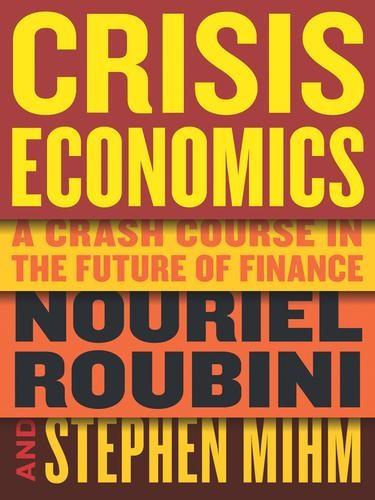
Crisis Economics: A Crash Course in the Future of Finance
by
Nouriel Roubini
and
Stephen Mihm
Published 10 May 2010
271-75. 283 shoulders a gross public debt: See, for example, Organisation for Economic Co-Operation and Development, “Economic Survey of Japan 2009,” September 30, 2009, online at http://www.oecd.org/document/37/0,3343,en_2649_34595_43783525_1_1_1_1,00.html. 284 “an economy of the people”: Ian Bremmer and Nouriel Roubini, “Why Japan Needs a Hatobama,” Wall Street Journal, December 30, 2009, online at http://online.wsj.com/article/SB10001424052748704779704574553491570666698.html. 285 robust medium-term growth: International Monetary Fund, World Economic Outlook, July 8, 2009, online at http://www.imf.org/external/pubs/ft/weo/2009/update/02/index.htm. 285 The BRICs—Brazil, Russia, India, and China: Nouriel Roubini, “Another BRIC in the Wall?” Project Syndicate, October 15, 2009, online at http://www.project-syndicate.org/commentary/roubini18/English. 290 “mother of all carry trades”: Nouriel Roubini, “Mother of All Carry Trades Faces an Inevitable Bust,” Financial Times, November 1, 2009. 292 The threat of default now looms over advanced economies: Nouriel Roubini, “The Risky Rich,” Project Syndicate, January 18, 2010, online at http://www.project-syndicate.org/commentary/roubini21/English.
…
Nonetheless, the growing interest in expanding its role highlights the degree to which China and many other emerging markets want to replace the dollar with something a bit more stable and resistant to crisis and collapse. But that’s not going to happen without international cooperation. So one of the other institutions that emerged from that fateful 1944 conference will have to be reformed: the IMF. Global Governance The swift rise of the economically powerful BRICs—Brazil, Russia, India, and China—and other emerging market economies has underscored the need to reform global economic governance. The original G-7—the United States, Japan, Germany, France, the United Kingdom, Canada, and Italy—cannot possibly claim to speak for the rest of the world. In order to resolve global imbalances, other players must sit at the table.
…
First, these economies aren’t self-sufficient; they have extensive trading and financial ties to more advanced economies and cannot fully decouple from their problems. An anemic recovery in the United States will inevitably act as a drag on even the most dynamic emerging markets. The emerging economies include dozens of nations. The BRICs—Brazil, Russia, India, and China—are the biggest of the bunch, and China is the undisputed king. But China faces serious challenges. While it has weathered the crisis, its all-too-effective response may set it up for problems in the medium term. For example, China has reacted to the crisis with state-directed credit growth.
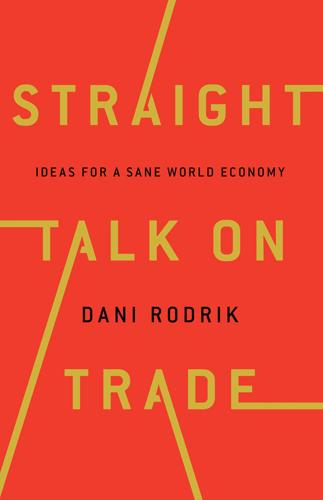
Straight Talk on Trade: Ideas for a Sane World Economy
by
Dani Rodrik
Published 8 Oct 2017
It will be easier to tell apart those countries that have truly strengthened their economic and political fundamentals from those that have coasted on false narratives and the strength of investor appetite for emerging markets. What the World Needs from Developing Nations In 2001 Goldman Sachs’s Jim O’Neill famously coined the term BRIC to characterize the world’s four largest developing economies—Brazil, Russia, India, and China.3 Nearly two decades later, just about the only thing that these four have in common is that they are the only ones ranked among the world’s fifteen biggest (measured in purchasing-power adjusted dollars) that are not members of the Organization of Economic Cooperation and Development (OECD).
…
Gaaitzen de Vries, Marcel Timmer, and Klaas de Vries, “Structural Transformation in Africa: Static Gains, Dynamic Losses,” University of Groningen Growth and Development Centre, GGDC Research Memorandum 136, http://www.ggdc.net/publications/memorandum/gd136.pdf. See also Xinshen Diao, Margaret McMillan, and Dani Rodrik, “The Recent Growth Boom in Developing Economies: A Structural-Change Perspective,” Harvard University, unpublished paper, January 2017. 3. Jim O’Neill, “The World Needs Better Economic BRICs,” Global Economic Paper Series, November 30, 2001. 4. “Statement by BRICS Leaders on the Establishment of the BRICS-Led Development Bank,” Durban, South Africa, March 27, 2013. 5. “Arvind Subramanian on what is holding back investments in India,” Rediff Business, October 1, 2015, http://www.rediff.com/business/report/arvind-subramanian-on-what-is-holding-back-investments-in-india/20151001.htm. 6.
…
And as Joe Nye has written, Russia is a superpower in decline while China and (less markedly) the others are on the rise. Yet in a strange case of life imitating fantasy, BRICS—the original four countries now joined by South Africa—have formed a grouping of their own with regular meetings and policy initiatives. Their most ambitious effort to date is the establishment of a development bank in 2014. The “New Development Bank” focuses on infrastructure development. Infrastructure investment in developing countries, BRICS leaders have said, is constrained by “insufficient long-term financing and foreign direct investment.” They have pledged to make an initial capital contribution to the bank that would be “substantial and sufficient for the bank to be effective in financing infrastructure.”

Plutocrats: The Rise of the New Global Super-Rich and the Fall of Everyone Else
by
Chrystia Freeland
Published 11 Oct 2012
The world was also being dramatically transformed by the rise of the emerging markets, in particular the four behemoths that Jim O’Neill, then chief economist at Goldman Sachs, dubbed the BRICs: Brazil, Russia, India, China. In the book Mr. O’Neill launched at his January party, The Growth Map: Economic Opportunity in the BRICs and Beyond, he argues that the BRIC concept “has become the dominant story of our generation” and introduces readers to “the next eleven” emerging markets, which are joining the BRICs in transforming the world. The group of Goldman executives who toasted Mr. O’Neill in New York are in the vanguard of one of the consequences of the powerful economic forces he describes—the rise, in the developed Western economies, of the 1 percent and the creation of what many are now calling a new gilded age.
…
The two gilded ages can also get in each other’s way See Mark Landler, “Chinese Savings Helped Inflate American Bubble,” New York Times, December 25, 2008. “In the long run, we are in good shape” CF interview with John Van Reenen, January 13, 2012. “This is an exciting story” Jim O’Neill, The Growth Map: Economic Opportunity in the BRICs and Beyond (Penguin, 2011), pp. 251–52. “Wealth will be created but also spent” Reader feedback on “The Second Economy,” McKinsey Quarterly Facebook post, November 1, 2011. http://www.facebook.com/note.php?note_id=10150536805679908. “I only hope you are right” Ibid.
…
Globalization may widen inequality within certain national borders, but on a global basis it has been a huge force for good, narrowing inequality among people on an unprecedented scale. Tens of millions of people from the BRICs and beyond are being taken out of poverty by the growth of their economies. While it is easy to focus on the fact that China has created so many billionaires, it should not be forgotten that in the past fifteen or so years, 300 million or more Chinese have been lifted out of poverty. . . . We at Goldman Sachs estimate that 2 billion people are going to be brought into the global middle class between now and 2030 as the BRIC and N-11 economies develop. . . . Rather than be worried by such developments, we should be both encouraged and hopeful.
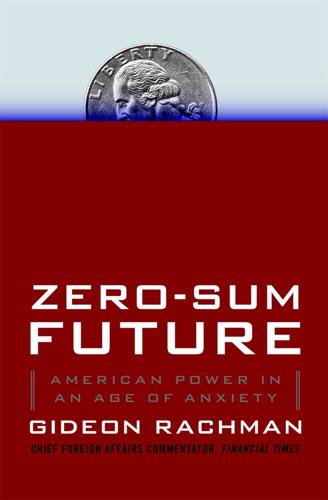
Zero-Sum Future: American Power in an Age of Anxiety
by
Gideon Rachman
Published 1 Feb 2011
INDEX Abalkin, Leonid, 56–57 Adelman, Kenneth, 167 Afghanistan, 55, 174, 199, 208–12, 244, 251–56, 258 as failed state, 10, 132, 181 U.S. war in, 96, 165, 167, 169, 174, 181, 185, 209–10, 212, 230, 233, 239, 240, 249, 252–53, 254, 268, 272, 273, 314n Africa, 7, 96, 195, 228, 235, 247, 274, 283, 289 global problems and, 205–8 African National Congress, 36, 69 African Union force, 210 Aganbegyan, Abel, 56–57 Age of Anxiety, 11, 171–292 Age of Optimism, 6, 11, 85, 91–170, 173–75, 183, 188, 191, 194, 195, 208, 231, 246–49, 259–62, 271, 272, 277, 280, 281, 286 antiglobalization movement and, 96, 153, 155–62 democracy and, 99–105 the East and, 135–43 Europe and, 145–53, 290 new world order in, 87, 93, 95–96, 230 peace and, 103, 118, 126–34, 140, 304n power and, 93, 96, 118, 162–70 progress and, 118–26 prosperity and, 107–18, 133, 134, 140, 173, 194 Age of Transformation, 11, 13–90 agriculture, 56, 125, 195, 206, 290 in China, 23, 25, 294n Ahmadinejad, Mahmoud, 197, 227, 242, 244, 248 Ahmed, Kamal, 313n AIG, 201 air-traffic controllers, 39 Albright, Madeleine, 166 Aliber, Robert, 265 Allende, Salvador, 74 al-Qaeda, 10, 96, 156–57, 161–62, 210, 252, 256 American Enterprise Institute (AEI), 39, 163–64, 167–68 Angola, 43, 131, 205, 247 Annan, Kofi, 132 antiglobalization movement, 96, 153, 155–62 antitrust cases, 120 apartheid, 69, 70 Apple, 120, 261 Aquino, Corazon, 43 Arab world, 269 Argentina, 77, 78, 188 democracy in, 17, 71, 72 Falklands War and, 34, 73, 76 military regime in, 73, 75, 76 Arizona, 211, 260 Asia, 24, 66, 94, 110, 111, 114, 117, 134–43, 157, 184, 195, 200, 205, 217, 245, 256, 274, 279 democracy in, 18, 85, 94, 283 economic crisis in (1997–98), 6, 107–8, 141–43, 159, 218, 269 rise of, 4, 6, 8, 9, 46, 59–60, 73, 80, 95, 137–40, 143, 146, 173, 262 see also East Asia; specific places Asian values, 138 Aslund, Anders, 221 Audacity of Hope, The (Obama), 170 Austria, 68, 269 authoritarianism, 9, 75–76, 124, 138, 140, 174, 175–76, 233–49, 257, 283, 284 global government and, 220, 221, 223, 231 Axis of Hugo, 241–42, 249 Baghdad, 124, 125, 148, 253–54 bailouts, 113, 142, 188–89, 195 Balkan wars, 125, 130–33, 145, 146 Balls, Ed, 3 Baltic states, 58–59, 235 Bangalore, 84–85, 141 banks, 142, 159, 191–92, 200 see also investment banks BBC, 108, 279 Beijing, 15, 25, 27, 65, 137, 190, 202–3, 206, 234–38, 240, 261, 268, 305n Tiananmen Square massacre in, see China, Tiananmen Square massacre in Belarus, 59 Belgrade, U.S. bombing of Chinese embassy in, 268 Berlin, East, 65 Berlin, West, 63 Berlin Wall, fall of, 11, 43, 63, 67, 68, 69, 73, 143, 146, 147, 149, 150, 152, 165, 180, 312n-13n Bernanke, Ben, 116–17 Bezos, Jeff, 120 Bhutto, Benazir, 211, 252 Blair, Tony, 43–44, 114–15, 118, 132, 201–2, 279–80 Bloom, Allan, 99, 100, 104 Boeing, 6, 155 Bolivia, 72, 78, 242 Bonfire of the Vanities, The (Wolfe), 40 Boot, Max, 146, 167, 168 Bosnia, 131, 132, 133, 231 Branden, Nathaniel, 109 Brazil, 17, 71, 73, 75–78, 176, 244, 245, 246, 286 in BRICs, 76–77, 196 global government and, 217, 219, 226, 227 zero-sum future and, 262, 276 Bremmer, Ian, 193 Bretton Woods, 9 Brezhnev, Leonid, 54, 64 Brezhnev Doctrine, 64, 67 Brickell, Mark, 112–13 BRICs (Brazil, Russia, India, and China), 76–77, 196 Bright, John, 128 Brookings Institution, 139, 256 Brown, Gordon, 3, 114, 117 Brussels, 213, 215, 311n Buchanan, Pat, 42, 157–58, 260 Bulgaria, 145–48 Burma, 160, 227, 274, 275 Bush, George H.
…
But the United States now looks set for a long period with a weaker economy as consumers pay down debt and the government wrestles with its fiscal deficit. The European Union is also facing an age of austerity. Slower growth in the United States and Europe would mean slower growth for the world as a whole. Even if the BRICs (Brazil, Russia, India, and China) successfully manage to decouple their economic fortunes from those of the United States and to forge ahead without the need for strong American demand, the world economy will still feel very different. With the United States and the European Union growing more slowly than developing nations, it will be harder to make the case that this is a win-win world, in which all major powers are getting richer together and have an incentive to cooperate and to keep their markets open.
…
By 2010, Brazil, with a population of close to 200 million and the tenth-largest economy in the world, was widely recognized as a key emerging global power. Goldman Sachs, the investment bank, helped to confer this status by making Brazil one of the BRICs—the four emerging powers that Jim O’Neill, the bank’s chief economist, argued would help define the next century. Unworthy suspicions that Goldman had included Brazil alongside Russia, India, and China simply to make a catchier acronym were shelved as Brazil’s growing international status became more apparent. In June 2009, the BRICs held their first ever summit meeting in Russia—a rare example of an investment bank’s research paper provoking geopolitical change.14 Another plausible reason why Latin America’s role in the story of globalization has been downplayed is that the economic record of free-market reforms there is much patchier—and so less interesting and alarming to North Americans and Europeans than the seemingly inexorable rise of China and India.
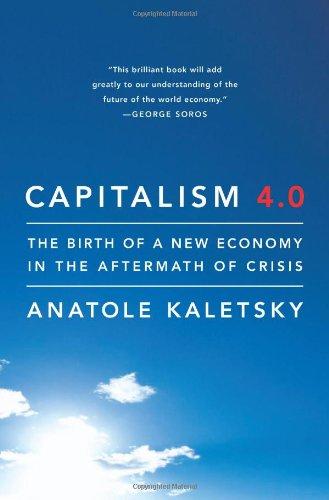
Capitalism 4.0: The Birth of a New Economy in the Aftermath of Crisis
by
Anatole Kaletsky
Published 22 Jun 2010
Chapter Nineteen 1 For a detailed discussion of the growth potential of the biggest developing countries, the BRICs—Brazil, Russia, India, and China, plus smaller developing countries coming up behind them—see Dominic Wilson and Roopa Purushothaman, “Dreaming with BRICs: The Path to 2050,” Global Economics Paper No. 99, Goldman Sachs Global Research, October 2003. Available from http://www2.goldmansachs.com/ideas/brics/book/99-dreaming.pdf. See also Goldman Sachs Global Economics Group, BRICs and Beyond, November 2007. Available from http://www2.goldmansachs.com/ideas/brics/book/BRIC-Full.pdf. 2 Summarizing the conclusions of April 2009 G20 summit in London Gordon Brown declared: “The old Washington Consensus is over.”
…
Cambridge, MA: National Bureau of Economic Research, 2003. Goldin, Claudia, and Lawrence Katz. “Transitions: Career and Family Life Cycles of the Educational Elite.” American Economic Review: Papers and Proceedings 98:2 (2008): 363-369. Goldman Sachs Global Economics Group. BRICs and Beyond. New York: Goldman Sachs Global Research Centre, November 2007. Available from http://www2.goldmansachs.com/ideas/brics/book/BRIC-Full.pdf. Goodhart, C.A.E. “Monetary Relationships: A View from Threadneedle Street.” Papers in Monetary Economics, vol. 1. Sydney: Reserve Bank of Australia, 1975. Greenspan, Alan. “The Challenge of Central Banking.”
…
“From the Hindu Rate of Growth to the Hindu Rate of Reform.” Working Paper #144. Center for Research on Economic Development and Policy Reform. Palo Alto: Stanford University, 2002. Wilson, Dominic, and Roopa Purushothaman. “Dreaming with BRICs: The Path to 2050.” Global Economics Paper No. 99. New York: Goldman Sachs Global Research Centre, October 2003. Available from http://www2.goldmansachs.com/ideas/brics/book/99-dreaming.pdf. Wolf, Martin. Why Globalization Works. New Haven: Yale University Press, 2004. Wood, John Cunningham, and Michael McLure, eds. Vilfredo Pareto: Critical Assessments. New York: Routledge, 1999.
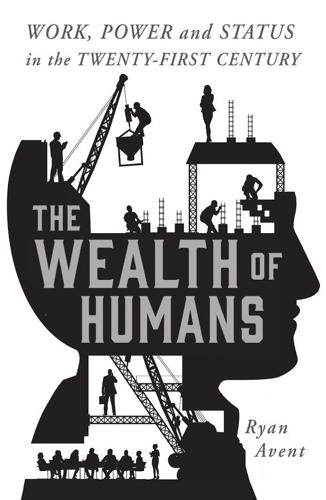
The Wealth of Humans: Work, Power, and Status in the Twenty-First Century
by
Ryan Avent
Published 20 Sep 2016
Those that did caught up at a snail’s pace, growing only about 1.5 percentage points faster per year, according to one estimate.9 From the late 1990s, however, close to 75 per cent of emerging economies experienced catch-up growth and at a scorching pace, growing about 3.3 percentage points faster than rich economies. This was the BRIC era; in 2001 Goldman Sachs economist Jim O’Neill identified the big emerging markets, Brazil, Russia, India and China, as countries likely to reshape the global economy and financial markets, thanks to their extremely rapid growth.10 Yet the growth acceleration extended right across most of the developing world. What happened? The answer seems simple enough: China happened.
…
Lucas, Robert E., Jr, ‘On the Mechanics of Economic Development’, Journal of Monetary Economics, 1988. 9. Subramanian and Kessler, ‘The Hyperglobalization of Trade and its Future’. 10. Terence James ‘Jim’ O’Neill, Baron O’Neill of Gatley (1957–), is a British economist and the former chairman of Goldman Sachs Asset Management. He is best known for coining BRIC, the acronym that stands for Brazil, Russia, India and China – the four rapidly developing countries that have come to symbolize the shift in global economic power away from the developed G7 economies. 11. Baldwin, Richard, ‘Trade and Industrialization after Globalization’s Second Unbundling: How Building and Joining a Supply Chain are Different and Why it Matters’ in Feenstra, Robert C., and Taylor, Alan M., eds., Globalization in an Age of Crisis: Multilateral Economic Cooperation in the Twenty-First Century (Chicago, IL: University of Chicago Press, 2014). 12.
…
Acemoglu, Daron ageing populations agency, concept of Airbnb Amazon American Medical Association (AMA) anarchism Andreessen, Marc Anglo-Saxon economies Apple the iPhone the iPod artisanal goods and services Atkinson, Anthony Atlanta, Georgia austerity policies automation in car plants fully autonomous trucks of ‘green jobs’ during industrial revolution installation work as resistant to low-pay as check on of menial/routine work self-driving cars and technological deskilling automobiles assembly-line techniques automated car plants and dematerialization early days of car industry fully autonomous trucks self-driving cars baseball Baumol, William Belgium Bernanke, Ben Bezos, Jeff black plague (late Middle Ages) Boston, Massachusetts Brazil BRIC era Bridgewater Associates Britain deindustrialization education in extensions of franchise in financial crisis (2008) Great Exhibition (London 1851) housing wealth in and industrial revolution Labour Party in liberalization in political fractionalization in real wages in social capital in surpassed by US as leading nation wage subsidies in Brontë, Charlotte Brynjolfsson, Erik bubbles, asset-price Buffalo Bill (William Cody) BuzzFeed Cairncross, Frances, The Death of Distance (1997) capital ‘deepening’ infrastructure investment investment in developing world career, concept of cars see automobiles Catalan nationalism Central African Republic central banks Chait, Jonathan Charlotte chemistry, industrial Chicago meat packers in nineteenth-century expansion of World’s Columbia Exposition (1893) China Deng Xiaoping’s reforms economic slow-down in era of rapid growth foreign-exchange reserves ‘green jobs’ in illiberal institutions in inequality in iPod assembly in technological transformation in wage levels in Chorus (content-management system) Christensen, Clayton Cisco cities artisanal goods and services building-supply restrictions growth of and housing costs and industrial revolution and information membership battles in rich/skilled and social capital clerical work climate change Clinton, Hillary Coase, Ronald Columbia University, School of Mines communications technology communism communities of affinity computing app-based companies capability thresholds cloud services cycles of experimentation desktop market disk-drive industry ‘enterprise software’ products exponential progress narrative as general purpose technology hardware and software infrastructure history of ‘Moore’s Law’ and productivity switches transistors vacuum tubes see also digital revolution; software construction industry regulations on Corbyn, Jeremy Corliss steam engine corporate power Cowen, Tyler craft producers Craigslist creative destruction the Crystal Palace, London Dalio, Ray Dallas, Texas debt deindustrialization demand, chronically weak dematerialization Detroit developing economies and capital investment and digital revolution era of rapid growth and industrialization pockets of wealth in and ‘reshoring’ phenomenon and sharp slowdown and social capital see also emerging economies digital revolution and agency and company cultures and developing economies and distance distribution of benefits of dotcom tech boom emergence of and global imbalances and highly skilled few and industrial institutions and information flows investment in social capital niche markets pace of change and paradox of potential productivity and output and secular stagnation start-ups and technological deskilling techno-optimism techno-pessimism as tectonic economic transformation and trading patterns web journalism see also automation; computing; globalization discrimination and exclusion ‘disruption’, phenomenon of distribution of wealth see inequality; redistribution; wealth and income distribution dotcom boom eBay economics, classical The Economist education in emerging economies during industrial revolution racial segregation in USA and scarcity see also university education electricity Ellison, Glenn Ellison, Sara Fisher emerging economies deindustrialization economic growth in education in foreign-exchange reserves growth in global supply chains highly skilled workers in see also developing economies employment and basic income policy cheap labour as boost to and dot.com boom in Europe and financial crisis (2008) ‘green jobs’ low-pay sector minimum wage impact niche markets in public sector ‘reshoring’ phenomenon as rising globally and social contexts and social membership as source of personal identity and structural change trilemma in USA see also labour; wages Engels, Friedrich environmental issues Etsy euro- zone Europe extreme populist politics liberalized economies political fractionalization in European Union Facebook face-recognition technology factors of production land see also capital; labour ‘Factory Asia’ factory work assembly-line techniques during industrial revolution family fascism Federal Reserve financial crisis (2008) financial markets cross-border capital flows in developing economies Finland firms and companies Coase’s work on core competencies culture of dark matter (intangible capital) and dematerialization and ‘disruption’ ‘firm-specific’ knowledge and information flows internal incentive structures pay of top executives shifting boundaries of social capital of and social wealth start-ups Ford, Martin, Rise of the Robots (2015) Ford Motor Company fracking France franchise, electoral Friedman, Milton Fukuyama, Francis Gates, Bill gender discrimination general purpose technologies enormous benefits from exponential progress and skilled labour supporting infrastructure and time lags see also digital revolution Germany ‘gig economy’ Glaeser, Ed global economy growth in supply chains imbalances lack of international cooperation savings glut and social consensus globalization hyperglobalization and secular stagnation and separatist movements Goldman Sachs Google Gordon, Robert Gothenburg, Sweden Great Depression Great Depression (1930s) Great Exhibition, London (1851) Great Recession Great Stagnation Greece ‘green jobs’ growth, economic battle over spoils of boom (1994-2005) and classical economists as consistent in rich countries decline of ‘labour share’ dotcom boom emerging economies gains not flowing to workers and industrial revolution Kaldor’s ‘stylized facts of’ and Keynes during liberal era pie metaphor in post-war period and quality of institutions and rich/elite cities rich-poor nation gap and skilled labour guilds Hansen, Alvin Hayes, Chris, The Twilight of the Elites healthcare and medicine hedge funds and private equity firms Holmes, Oliver Wendell Hong Kong housing in Bay-Area NIMBY campaigns against soaring prices pre-2008 crisis zoning and regulations Houston, Texas Huffington Post human capital Hungary IBM identity, personal immigration and ethno-nationalist separatism and labour markets in Nordic countries and social capital income distribution see inequality; redistribution; wealth and income distribution India Indonesia industrial revolution automation during and economic growth and growth of cities need for better-educated workers and productivity ‘second revolution’ and social change and wages and World’s Fairs inequality and education levels between firms and housing wealth during industrial revolution during liberal era between nations pay of top executives rise of in emerging economies and secular stagnation in Sweden wild contingency of wealth see also rich people; wealth and income distribution inflation in 1970s hyperinflation information technology see computing Intel interest rates International Space Station (ISS) iRobot ISIS Italy Jacksonville, Florida Jacquard, Joseph Marie Japan journalism Kaldor, Nicholas Keynes, John Maynard Kurzweil.
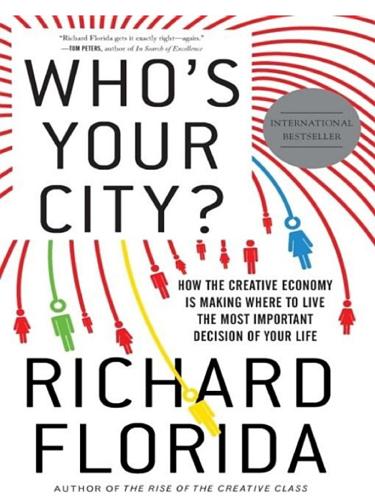
Who's Your City?: How the Creative Economy Is Making Where to Live the Most Important Decision of Your Life
by
Richard Florida
Published 28 Jun 2009
In Thailand, the Bangkok megaregion is home to 19 million people, producing $100 billion in economic output. Megas in the Emerging Economies Megaregions play an even larger role in the economic development of the so-called emerging economies. Some years ago, Goldman Sachs researchers coined the acronym “BRIC” to identify the rapidly growing emerging economies of Brazil, Russia, India, and China.10 But growth and development in the BRIC nations and other emerging economies from Mexico to Malaysia are far from uniform, geographically speaking. Powering the growth of these emerging economies are large megaregions. Some of these megas are experiencing rapid economic growth, while others are growing more slowly if at all, attracting large population influxes from rural areas and giving rise to destitute global slums.
…
As Chapter 3 details, the world’s forty largest megaregions, which account for about 18 percent of global population, produce two-thirds of global economic output and more than 8 in 10 of the world’s innovations. The trend is most pronounced in the emerging economies, particularly the BRIC nations (Brazil, Russia, India, and China), where megaregions literally are the economy. The Rio de Janeiro-São Paulo megaregion is home to 10 percent of Brazil’s population but creates 40 percent of its output. China’s megaregions account for more than two-thirds of the country’s total economic output.4 Place remains the central axis of our time—more important to the world economy and our individual lives than ever before.
…
For more on this methodology, see Florida, Gulden, and Mellander, “Rise of the Mega-region.” 8 “The Texas Triangle as Megalopolis,” Federal Reserve Bank of Dallas, Houston Branch, April 2004, www.dallasfed.org/research/houston/2004/hb0403.html. 9 On Montreal, see Kevin Stolarick and Richard Florida, “Creativity, Connections, and Innovation: A Study of Linkages in the Montréal Region,” Environment and Planning A, 38, 10, 2006, pp. 1799-1817. 10 Dominic Wilson and Roopa Purushothaman, “Dreaming with BRICs: The Path to 2050,” Global Economics Paper no. 99, Goldman Sachs, October 1, 2003. Chapter 4 1 Robert Lucas, “On the Mechanics of Economic Development,” Journal of Monetary Economics 22, 1988, pp. 3-42. 2 Adam Smith, The Wealth of Nations, Bantam, 2003 (1st ed., 1776). 3 David Ricardo, Principles of Political Economy and Taxation, Cosimo Classics, 2006 (1st ed., 1817). 4 Joseph Schumpeter, Theory of Economic Development, Harvard University Press, 1934 (1st ed., 1911); Schumpeter, Capitalism, Socialism, and Democracy, Harper, 1975 (1st ed., 1942).
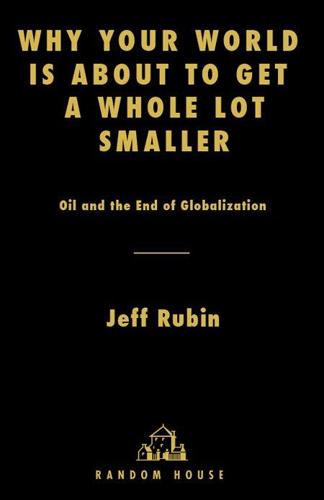
Why Your World Is About to Get a Whole Lot Smaller: Oil and the End of Globalization
by
Jeff Rubin
Published 19 May 2009
King Hubbert’s quips: “So long as oil is used as a source of energy, when the energy cost of recovering a barrel of oil becomes greater than the energy content of the oil, production will cease no matter what the monetary price may be” (www.hubbertpeak.com/Hubbert/). CHAPTER 2: DEMAND SHIFT p. 57: To get a glimpse of the extravagance of Ski Dubai, go to skidxb.com. p. 63: The “BRIC” moniker first appeared in the 2003 Goldman Sachs report, “Dreaming With the BRICs” (www2.goldmansachs.com/ideas/brics/book/99-dreaming.pdf). The crucial idea was that the economies of Brazil, Russia, India and China will soon overtake those of the more developed countries by their sheer size. p. 65: For an analysis of how OPEC’s own consumption growth is eating into its export capacity, and the attendant implications for world oil supply see Jeff Rubin and Peter Buchanan “OPEC’s Growing Call On Itself,” September 10, 2007 (research.cibcwm.com/res/Eco/EcoResearch.html).
…
North America may be the land of the car, but that’s very much a rearview mirror on where car sales are growing today. Whereas even in the best of economic times, car sales in mature markets like the US and Western Europe grew at a miserly 1 to 2 percent per year, if that, they grew at ten to twenty times that pace in Brazil, Russia, India and China (the so-called BRIC countries, identified as the economic titans of the coming decades by Goldman Sachs in 2001). In early 2009 China’s car market surpassed the US market, which is likely to come out of the recession about half the size it went in. And China was by no means the only place outside of the OECD where car sales were booming.
…
Incomes rose globally, and at historically impressive rates. Because we wanted to pay less for shoes, someone in Vietnam moved from the rice fields to a factory. He or she may not have lived in luxury, but then societies don’t go from subsistence farming to first-world prosperity in one ambitious step—though, as the growth rates of the BRIC countries and the so-called Asian Tigers show, it is possible to move up the economic ladder in a hurry in a global economy. But rising energy costs will soon decouple that factory in Vietnam from its North American or European market. As North American and European markets return to local sourcing, they will sever their trade links with the developing world and force that world to find another way to grow.

The Innovation Illusion: How So Little Is Created by So Many Working So Hard
by
Fredrik Erixon
and
Bjorn Weigel
Published 3 Oct 2016
The rise of the BRIC countries (Brazil, Russia, India, and China) and other economies was central to globalization. Sluggish Western economies that had lost their economic strengths of the past were again ignited. A new “global division of labor” emerged – with raw materials from Brazil and Russia, service and back-office operations in India, the factory floor in China, and high-skilled labor and technology from advanced economies. By putting Adam Smith’s economy of specialization to work, every country could accelerate growth. That period is now a distant memory. The fantasy that enveloped the BRIC economies, the notion of perennially fast and almost infinite growth, has quietly retreated from the world’s economic psychology.
…
The fantasy that enveloped the BRIC economies, the notion of perennially fast and almost infinite growth, has quietly retreated from the world’s economic psychology. For a decade or more, the BRIC fantasy charmed a lot of people. They became engrossed by the notion that political minions in state-directed economies could control their complex economies like you control the temperature of a house. Goldman Sachs economists, in a paper from 2003 that defined the BRIC era, predicted how these economies would outpace other countries in league tables of income and wealth over the course of the next fifty years.4 It was a move rich in symbolism when Goldman Sachs closed its special BRIC fund in 2015. Having declined by 88 percent since its peak in 2010, it seemed to validate those who had derided BRIC as a Bloody Ridiculous Investment Concept.5 The continental economic awakening in Asia is no doubt real, but the BRIC fantasy neglected a simple lesson of economic history: high-growth eras always come to an end.
…
Having declined by 88 percent since its peak in 2010, it seemed to validate those who had derided BRIC as a Bloody Ridiculous Investment Concept.5 The continental economic awakening in Asia is no doubt real, but the BRIC fantasy neglected a simple lesson of economic history: high-growth eras always come to an end. It is much easier to play economic catch-up than to compete at the frontier of innovation and productivity. Contrast the image of the roaring BRIC countries with current economic realities. Brazil and Russia are hardly inspiring growth examples now that the commodity supercycle has petered out. Both countries have had periods of sustained negative growth in recent years, impoverishing the population.

The Rise and Fall of Nations: Forces of Change in the Post-Crisis World
by
Ruchir Sharma
Published 5 Jun 2016
This storyline began to strain credulity by 2011, when prices for copper and steel started to fall. It collapsed completely in late 2014, when the price of oil dropped by more than half in a span of months. Nothing illustrates the impermanence of global trends better than the fate of the most-hyped emerging nations of the 2000s, Brazil, Russia, India, and China. Marketers rolled them into the acronym BRICs, to capture the idea that these four giants were poised to dominate the global economy. Today the acronym is often qualified with an adjective like broken or crumbling, dismissed as a “bloody ridiculous investment concept,” or reshuffled into a new acronym like CRaBs, to capture how ungainly China, Russia, and Brazil look now.
…
UBS Research, July 21, 2015. Chatterji, Aaron, Edward Glaeser, and William Kerr. “Clusters of Entrepreneurship and Innovation.” National Bureau of Economic Research, Working Paper no. 19013, May 2013. Chaudhary, Latika, Aldo Musacchio, Steven Nafziger, and Se Yan. “Big BRICs, Weak Foundations: The Beginning of Public Elementary Education in Brazil, Russia, India, and China.” National Bureau of Economic Research, Working Paper no. 17852, February 2012. Credit Suisse Demographic Research, n.d. Czaika, Mathias, and Christopher Parsons. “The Gravity of High-Skilled Migration Policies.” International Migration Institute, May 21, 2015.
…
This basic fact did not dampen the hype of the last decade. A combination of forces after 2002 helped trigger an emerging-world boom, which saw growth double over the next five years to an average rate of more than 7 percent for the more than 150 countries tracked by the IMF. Forecasters soon projected that the largest emerging economies—Brazil, Russia, India, and China—would expand at a torrid pace, with their average incomes eventually catching up with those of the developed world. Thus was born the myth of mass “convergence,” a worldwide leveling of incomes. This scenario had a beguiling appeal to all kinds of people, from NGOs rooting for the poor to global investors hoping to capitalize on emerging markets, to pundits eager to identify the next big shift in the global balance of power.
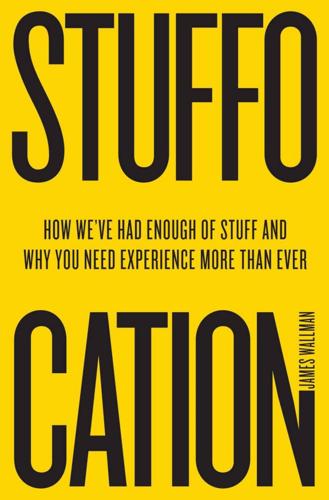
Stuffocation
by
James Wallman
Published 6 Dec 2013
See also, the French Institute of Demographic Studies (Ined)’s forecast that there will be 9.7 billion by 2050, up from just over 7 billion today. The rise of the global middle class Consider, for example, the opening statement in Dominic Wilson, Alex L. Kelston, Swarnali Ahmed, “Is this the BRICs Decade?“, Goldman Sachs’ BRICs Monthly Issue, 10/03, May 2010: “The last decade saw the BRICs make their mark on the global economic landscape. Over the past 10 years they have contributed over a third of world GDP growth and grown from one-sixth of the world economy to almost a quarter (in PPP terms). Looking forward to the coming decade, we expect this trend to continue and become even more pronounced.“ Or consider the final sentence in Catherine Wolfram, “Rising Middle Class Fuels Global Energy Surge“, Bloomberg.com, 17 January 2012: “There is no doubt that the rise of the global middle class is a positive development.
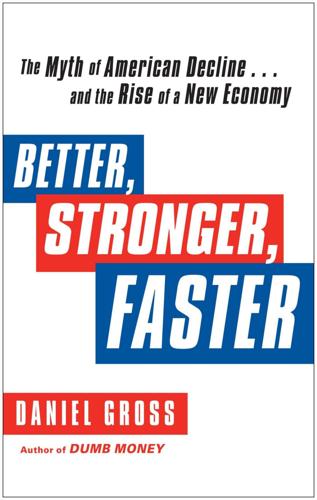
Better, Stronger, Faster: The Myth of American Decline . . . And the Rise of a New Economy
by
Daniel Gross
Published 7 May 2012
The new conventional wisdom, as Floyd Norris of the New York Times wrote in the spring of 2011, holds, “It is hard to see how the euro zone can be undone, but it is even harder to see how it will prosper.”8 In his 2008 book, The Post-American World, Fareed Zakaria, editor of Newsweek International, convincingly asserted that the developing world will play a greater role in the global economy and in geopolitical affairs. But as impressive as the growth of the BRIC nations—Brazil, Russia, India, and China—has been, they are still way behind the United States, and they are still extremely poor. With a combined population of 2.85 billion, the BRIC countries had a combined GDP of $11 trillion in 2010, about $3,860 per person. The United States, with 311 million people, managed to produce nearly $15 trillion in GDP in 2010, or $48,000 per capita. The gap between the United States and these developing economies is so vast that they will need a few more decades of uninterrupted growth before their citizens’ standard of living truly matches that of Americans.
…
But the bailouts, stimulus, and private-sector restructuring efforts got the country back on the path to growth, unsatisfying as it has been. In fact, U.S. companies and consumers, with an assist from policymakers, proved adept at restructuring rapidly and shucking debt. Jim O’Neill, the London-based Goldman Sachs economist who coined the term BRIC, hasn’t given up on the United States. “Crucially, the post–credit bubble collapse doesn’t seem to have left some other powerful attributes of the U.S. economy severely damaged,” he wrote in the Financial Times in January 2011. “Another wonderful attribute of the U.S. is the decisiveness of policymaking, despite frequent evidence to the contrary in Congress.”
…
But perhaps the rest of the country should strive to become a little more like North Dakota, in its ability to tap internal resources, to produce as well as consume, to engage with the world, and to reverse decline. The North Dakota miracle starts with some very good geological fortune and the application of a new technology to make much more of an existing internal resource. The boom in the state, whose economy grew a BRIC-esque 7 percent in 2010, is being led by oil.3 First discovered in the 1950s, the oil fields in western North Dakota declined in the 1980s and 1990s. Oil production peaked at about 150,000 barrels per day in the late 1970s, and in 2001 it fell to a relative trickle of 85,000 barrels per day. But starting in the middle of the 2000s, new techniques were brought to bear in the Bakken Shale, the stratum of rock that lies under about 15,000 square miles of scrubland in the western part of the state.
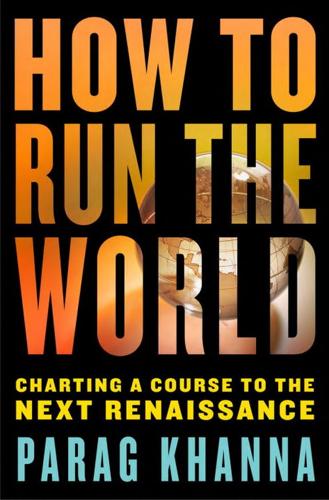
How to Run the World: Charting a Course to the Next Renaissance
by
Parag Khanna
Published 11 Jan 2011
Nothing Succeeds Like Success China is the world’s factory floor, India its back office, Russia its gas station, and Brazil its farm. These are the “BRICs”: Brazil, Russia, India, and China. You’ve been told already that if you’re not invested there, you’re missing the future. And yet they didn’t get to this vaunted position by following Western prescriptions; they did just one thing well and have expanded from there. Brazil is now an industrial and energy power also; Russia is growing its agricultural production; India has become a major player in steel, manufacturing, and biotechnology; and China has moved up the value chain to semiconductors and satellites. The growing spending power of BRIC middle classes has Western retail brands scrambling, while the success of BRIC companies has blurred the traditional boundaries between North and South and realigned global economic relations faster than any multilateral negotiation.
…
The growing spending power of BRIC middle classes has Western retail brands scrambling, while the success of BRIC companies has blurred the traditional boundaries between North and South and realigned global economic relations faster than any multilateral negotiation. They are now part of every conversation about how to run the world. Since Goldman Sachs first coined the term “BRIC,” corporate labels have captured investors’ imagination, reminding us that credit-rating agencies often have more influence over a country’s prospects than the World Bank does. Indonesia, Egypt, and other countries now clamor to earn such labels that increase their visibility and attractiveness to investors from the United States, Saudi Arabia, and China.
…
We can admire the boundless creativity of human ingenuity all we want. Better diplomacy is how to harness it. If you can afford to buy this book, or have the technology to order it, you have no excuse not to contribute to the new mega-diplomacy. The future of global governance is not as simple as talking about the “BRIC” countries. Instead, it is a bricolage of movements, governance arrangements, networks, soft law codes, and other systems at the local, regional, and global level. Some experts are skeptical that a world of connected but self-governing communities of various sizes—and many more transcending space altogether—can be more than the sum of their parts.
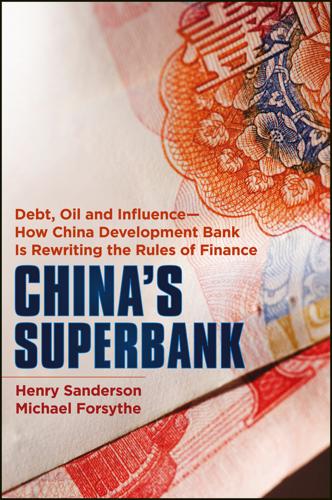
China's Superbank
by
Henry Sanderson
and
Michael Forsythe
Published 26 Sep 2012
Bolívar, Simón Bonderman, David Bosnian power station Boston Consulting Group Bo Xilai (Communist Party boss of Chongqing) Bo Yibo (Bo Xilai’s father) Bradford University (UK) Brady, Nicholas (US Treasury secretary) Brady Plan Brautigam, Deborah (China–Africa relations) Brazil CDB loan ($10 billion) to Petrobras for development of offshore oil deposits tied to oil shipments of 150,000 barrels/day and then 200,000 barrels/day one year later Chinese oil equipment, commitment to purchase $3 billion in oil-for-loans program Petróleo Brasileiro SA Brazil, Russia, India, and China (BRIC) Brazil, Russia, India, China, and South Africa (BRICS) Brazilian Development Bank (BNDES) bribes and corruption BRIC countries. See Brazil, Russia, India, and China (BRIC) BRICS. See Brazil, Russia, India, China, and South Africa (BRICS) Brilliance Auto British Commonwealth Development Corporation C CADF. See China-Africa Development Fund (CADF) Caofeidian LGFV Caparusso, John (Citigroup analyst) Carnegie Endowment for International Peace (Washington) Castro, Cipriano (Venezuelan President) Castro, Fidel CDB.
…
“They come with a lot of strings, and the procedure for accessing the credit goes through quite a bit of rigmarole, and so it’s not easy. We still continue to rely for multilateral funding on the World Bank and the IMF. But we still [need] quite some massive amount of money for investment in infrastructure and we find it’s easier to go to the BRIC countries [Brazil, Russia, India, and China].” The rate on the CDB loan is competitive, he said, and it would not be possible to get the same terms on a loan from the West. “With the World Bank and the IMF you will get credit for, say, shoring up your foreign reserves, which is a good thing,” he said. “Now, what we’re looking for is investment in building our economic infrastructure.
…
Zhu Xinqiang, speaking at the Latin America China Investors Forum conference, Beijing, September 2011. 39. Sebastian Mallaby, The World’s Banker: A Story of Failed States, Financial Crises, and the Wealth and Poverty of Nations (New Haven, CT: Yale University Press, 2005). 40. Nkunde Mwase, Yongzheng Yang, “BRICs’ Philosophies for Development Financing and Their Implications for LICs,” International Monetary Fund, IMF Working Paper No. 12/74, March 2012. 41. Dambisa Moyo, Dead Aid: Why Aid Is Not Working and How There Is a Better Way for Africa (New York: Farrar, Straus & Giroux, 2009). 42. Mallaby, The World’s Banker, p. 45. 43.
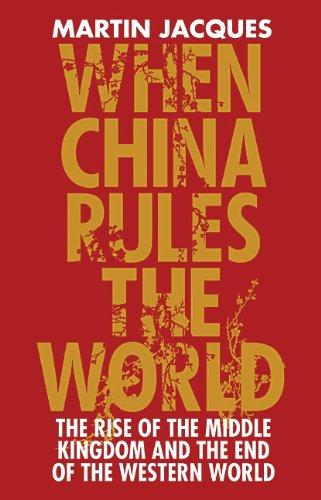
When China Rules the World: The End of the Western World and the Rise of the Middle Kingdom
by
Martin Jacques
Published 12 Nov 2009
The most dramatic change was the rising share of global GDP accounted for by Asia, which, excluding Japan, increased from 16.4% in 1973 to 30.9% in 2001, while its share of the world’s population rose from 54.6% in 1973 to 57.4% in 2001.112 This picture will change even more dramatically over the next few decades. It is estimated that by 2032 the share of global GDP of the so-called BRICs, namely Brazil, Russia, India and China, will exceed that of the G7, namely the US, Canada, the UK, Germany, France, Italy and Japan. And by 2027 it is projected that China will overtake the United States to become the world’s largest economy.113 To illustrate how increasingly diverse the world is likely to become, it is envisaged that the combined GDP of another eleven developing countries (Bangladesh, Egypt, Indonesia, Iran, Korea, Mexico, Nigeria, Pakistan, the Philippines, Turkey and Vietnam) could reach two-thirds of the level of the G7 by 2050.114 Meanwhile, the developing world’s share of the global population will steadily rise, though Asia’s will remain relatively constant at just below 60%, with that of India and China, the two most populous countries in the world, enjoying a combined share of 37.3% in 2001,115 projected to fall very slightly.
…
For the developing world, including the most populous countries, poverty has meant marginalization or effective exclusion from global decision-making; economic power, in contrast, is a passport to global enfranchisement. Or, to put it another way, a global economic regime based on the BRICS (namely Brazil, Russia, India and China), together with other developing countries, will be inherently more democratic than the Western regime that has previously prevailed. Furthermore, the fact that China, as the top dog, is so numerous will in itself introduce a more democratic element, albeit in the crudest sense, to the global polity.
…
Lampton, ‘China’s Rise in Asia Need Not Be at America’s Expense’, in Shambaugh, Power Shift, p. 312. 34 . Kim, ‘East Asian New Regionalism’, p. 65. 35 . Zhang and Tang, ‘China’s Regional Strategy’, pp. 52-3. 36 . Michael Yahuda, ‘The Evolving Asian Order: The Accommodation of Rising Chinese Power’, in Shambaugh, Power Shift, p. 349. 37 . Jim O’Neill et al., ‘China and Asia’s Future Monetary System’, Goldman Sachs Global Economics Paper, 129 (12 September 2005), p. 11; for details of the Chiang Mai Initiative, see www.unescap.org/pdd/publications/bulletin2002/ch8.pdf. 38 . Zhang Yunling, East Asian Regionalism and China, p. 54. 39 . Ibid., p. 29; also Martin Wolf, ‘Asia Needs the Freedom of Its Own Monetary Fund’, Financial Times, 19 May 2004. 40 .
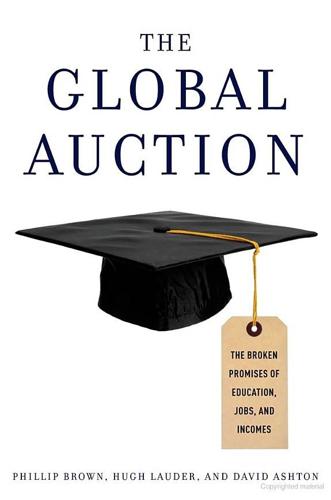
The Global Auction: The Broken Promises of Education, Jobs, and Incomes
by
Phillip Brown
,
Hugh Lauder
and
David Ashton
Published 3 Nov 2010
Equally, enrollment figures do not tell us how many actually enter the global job market on an annual basis due to high levels of dropouts in some countries. But it does show that the expansion of higher education has not been limited to Organisation for Economic Co-operation and Development (OECD) member states or the BRIC nations of Brazil, Russia, India, and China. Ukraine and Mexico have more people enrolled in higher education than the United Kingdom, with Poland and Turkey making rapid gains, almost doubling their participation rates between 1996–2007. Diana Farrell and colleagues at the McKinsey Global Institute also found that “Poland has nearly as many suitable engineers as does much more populous Russia.
…
See also labor arbitrage aristocracy of talent, 161–62 Asia, 44 brain circulation, 22 brain drain, 39, 92 brainpower, 16, 18, 30, 99, 124 branding, 95–96 Asian financial crisis, 58, 151 Braverman, Harry, 80 Asian Tigers, 8, 10, 18, 32, 36–40 The Atlantic Magazine, 151 auto industry, 49–50, 54–55, 59–60, 66, 70–71, 83–84, 101–2, 105–6, 111, 174n27, 174–75n34 Brazil, 32, 182n43 BRIC (Brazil, Russia, India, and China) nations, 35, 152, 181n41 Brint, Steven, 173n9 Britain, 21, 116, 122, 124, 134, 139–40, baby boomers, 19 backlash, 149 151, 153, 158, 183n18. See also United Kingdom Brown, Gordon, 23 bailout, 111, 148, 151 Batra, Ravi, 178n21 Baumol, William, 152 Becker, Gary, 122–23 Brown, Phillip, 143, 182n3 Buchanan, James, 134 build to order, 101–2 Bush administration, 111–12 business processes, 51–52, 72, 74–76, 77, 79 Bussolo, Maurizio, 130–31 recessions, 148 reverse engineering, 42 riots, 10 call centers, 51–52, 73, 81 Callahan, David, 144 Cambridge University, 134 Canada, 30, 91 Cao, Cong, 44 technology transfer, 41 telecommunications industry, 54 trade imbalance, 108–9, 151 unemployment, 41, 47 wage rate increase, 59 Capco Consulting, 77 capital (defined), 162–63, 187n30 capitalism, 4–6, 10–11, 17, 23–26, 54, 67–68, 110–11, 113, 115, 151, 157, 161, 180n25, war for talent, 88–89 WTO (World Trade Organization), 41 Christian, Parenti, 174n33 classical economics theory, 100 187n26 casino economy, 187n31 club of rich nations, 30, 32, 168n2 cold-callers, 74 CFO Magazine, 79 Chambers, John, 85 Chanel, 114 collective bargaining, 17, 125, 160 colleges and universities, 6, 7–9, 25–26, 30, 31, 32, 40–41, 46–47, 87–88, 93–95, 116, childhood, 11–12, 143–46, 160 China.
…
See also United Kingdom Brown, Gordon, 23 bailout, 111, 148, 151 Batra, Ravi, 178n21 Baumol, William, 152 Becker, Gary, 122–23 Brown, Phillip, 143, 182n3 Buchanan, James, 134 build to order, 101–2 Bush administration, 111–12 business processes, 51–52, 72, 74–76, 77, 79 Bussolo, Maurizio, 130–31 recessions, 148 reverse engineering, 42 riots, 10 call centers, 51–52, 73, 81 Callahan, David, 144 Cambridge University, 134 Canada, 30, 91 Cao, Cong, 44 technology transfer, 41 telecommunications industry, 54 trade imbalance, 108–9, 151 unemployment, 41, 47 wage rate increase, 59 Capco Consulting, 77 capital (defined), 162–63, 187n30 capitalism, 4–6, 10–11, 17, 23–26, 54, 67–68, 110–11, 113, 115, 151, 157, 161, 180n25, war for talent, 88–89 WTO (World Trade Organization), 41 Christian, Parenti, 174n33 classical economics theory, 100 187n26 casino economy, 187n31 club of rich nations, 30, 32, 168n2 cold-callers, 74 CFO Magazine, 79 Chambers, John, 85 Chanel, 114 collective bargaining, 17, 125, 160 colleges and universities, 6, 7–9, 25–26, 30, 31, 32, 40–41, 46–47, 87–88, 93–95, 116, childhood, 11–12, 143–46, 160 China. See also BRIC (Brazil, Russia, India, and China) nations auto industry, 54 Blackstone Group Greater China, 43, Collins, Randall, 139 The Coming of Post-Industrial Society, 18 comparative advantage, 111 180n24 cheating scandal, 144 competencies, 78–79 competition China Development Bank (CDB), 42 China International Marine Containers Group (CIMC), 57–58 academic credentials, 139 Asian Tigers, 18 and education, 40 China Investment Corporation, 42–43 Chinese Academy of Science, 44 elite universities, 95 global auction, 132 Chinese Dragons, 58 education, 7–8, 29–30, 32, 32–35 global auction, 148 global economy, 3 human capital, 18, 106, 161 knowledge economy, 15 government as economic partner, 157–58 green technologies, 157 knowledge wars, 20, 22–23, 30, 47, 164 mass production, 71–72 Harvard Girl Yiting Liu, 145 Higher Education Mega Centre, 29 Human Genome Project, 40 neoliberalism, 24 and prosperity, 154–55 quality-cost revolution, 50 income inequalities, 129 intellectual property rights (IPRs), 53 knowledge wars, 20 middle class, 2, 130 modernization, 157 nanotechnology program, 44 self-interest, 40 STEM subjects studies, 155 supply chains, 104–5 transnational companies, 99–100 trust relations, 107 war for talent, 87, 89–93 opportunity trap, 137 Project 211, 33 quality-cost revolution, 50, 55, 60–61 R&D (research and development), 42–43, 53, 157 190 119, 121, 133–34, 136, 140, 153, 162, 177n26 Index winner-takes-all, 11, 165n7 computer industry, 42, 56, 66, 72–77, 81, 89, 100–102, 174n27.

The Looting Machine: Warlords, Oligarchs, Corporations, Smugglers, and the Theft of Africa's Wealth
by
Tom Burgis
Published 24 Mar 2015
Some of the money spent on the Nkandla residence was diverted from the Department of Public Works’ budget for inner-city regeneration, the body charged with remoulding the physical legacy of apartheid. South Africa aspires to be part of the vanguard of a new world order. Alongside Brazil, Russia, India and China, it belongs to the so-called BRICS nations, a grouping of fast-growing industrial economies that began as an acronym of the five countries, coined by the Goldman Sachs economist Jim O’Neill, and has evolved into a club that has its own summits and, as of 2014, its own bank, a counterweight to the World Bank and the IMF. At the BRICS summit in Brazil in July 2014, Zuma told his fellow heads of state that he recognized that the South African economy ‘needs to be more inclusive, more dynamic, with the fruits of growth shared equitably’.
…
Foster, ‘Africa Infrastructure Country Diagnostic’. 12. Vivien Foster and Cecilia Briceño-Garmendia, ‘Africa’s Infrastructure: A Time for Transformation’, World Bank, 2010, http://siteresources.worldbank.org/INTAFRICA/Resources/aicd_overview_english_no-embargo.pdf. 13. Simon Freemantle and Jeremy Stevens, ‘BRIC and Africa: New Partnerships Poised to Grow Africa’s Commercial Infrastructure’, Standard Bank, 15 October 2010; ‘China-Africa Economic and Trade Cooperation’, Information Office of the State Council, Beijing, August 2013, www.safpi.org/sites/default/files/publications/China-AfricaEconomicandTradeCooperation.pdf. 14.
…
Abacha, Sani, 191, 195 Abubakar, Atiku, 204 Achebe, Chinua, 207, 208 Africa Confidential, 37–38 Africa (overview) armed forces and, 234 complicity in exploitation, 234, 244, 245–247 Dutch Disease, 70–71 electricity, 136 ‘emerging markets’ vs., 70 GDP vs. human development scores, 211–212 imperialism today and, 149 migrants from, 245 poverty causes theories/solutions, 3–4 resource rent economy, 72, 136 UN Human Development Index, 162, 212 weapons trade, 84–85, 87, 147 See also specific countries; specific individuals Africa Progress Panel, 52, 53 African Development Bank/index, 148, 165, 171 African Union/headquarters, 137 Akerele, Richard, 71–72 Al-Bashir, Omar, 147 Al-Maktoum, Ahmed bin Saeed, 242 Al-Qaeda, 79, 142, 186 Alamieyeseigha, Diepreye, 202 Amaechi, Rotimi, 203 American revolution, 73 Angola China and, 86–87, 92, 93–97, 172, 173 China Sonangol and, 27–28, 92, 95–97, 98, 100, 101–102, 114, 119, 144, 145, 230 civil war, 9, 85, 86, 87, 145, 172, 224, 228 corruption and, 11–12, 17, 19–20, 27, 97, 173 ‘cryptocracy’, 27, 97, 173 diamonds, 48, 105 dissent/protestors against abuses, 23–24 Dutch Disease, 71 economic/political inequalities, 9, 12, 19, 20–25 economy/growth, 9–10 forced relocation, 20–22 GDP/human development score, 212 government spending allocations, 19 IMF and, 172–173 independence and, 10 Kilamba settlement, 22–23, 27 oil/resource rent and, 10–14, 139, 148, 224 See also Futungo (Angola); specific companies/organizations; specific individuals ‘Angolagate’ scandal, 87 Annan, Kofi, 52, 53 Anvil Mining, 38–40, 159–160, 161 Areva and Niger, 132, 139–140, 141, 142, 149, 150, 233 Asari-Dokubo, Mujahid, 176, 178, 197 Avidan, Asher, 110 Babangida, Ibrahim, 180, 186 BAE Systems, 15 Bataglia, Helder background, 87–88 Pa and, 87, 88–89, 90, 92, 94, 101 trip to China, 88–89, 90, 94 Bazoum, Mohamed, 133 BEE (Black Economic Empowerment), South Africa, 213, 214, 216, 231 Bellingham, Henry, 113 Bellzone, 143, 144 Benin, 62, 65 BHP Billiton, 7, 108, 113 Biafra, 63, 184 Biti, Tendai, 221 Biya, Paul, 5 Blair, Tony, 123 Bo Xilai, 91 Bokassa, Jean-Bédel, 138 Boko Haram, 79, 181, 206 Bond, James (World Bank), 156, 157 Bongo, Omar, 139 Bonyongwe, Happyton, 236 Botswana, 70, 212, 226–227 Bout, Viktor, 54, 85 BP, 2, 11, 13, 19, 26, 93, 96, 101, 139, 145 BRICS nations, 218 Briggs, Annkio, 175–176 British pension funds, 52, 245 British Virgin Islands and businesses, 51, 97, 140, 166, 167, 236–237 Bryant, Joe, 13, 14, 17, 19, 25 BSGR, 104, 108–109, 110, 113–114, 123–127, 128, 129 Bunkering (oil), 176–177, 196, 198 Bush, George H. W., 53 Bush, George W., 147, 191 Cabot company, 32 Carlyle, 13, 25 Carson, Johnnie, 78 Chad and oil/corruption, 73, 148, 154–155, 177 Changhui, Zhao, 137 Chávez, Hugo, 89, 90 Chen Tonghai, 99–100 Cheney, Dick, 191 Cheung, Jack, 121 Chevron, 11, 94, 154, 178 China African resources-for-infrastructure deals, 133–137, 140, 143, 148–149 Angola and, 86–87, 94, 172, 173 buying Western companies in Africa, 143 economic growth/new markets, 81 foreign multinationals corruption scandals in, 82 intelligence/spying, 83–84 military/business connections, 84 money available, 137 oil consumption, 11, 81 weapons trade, 87, 147 Western criticism of, 147 vs.
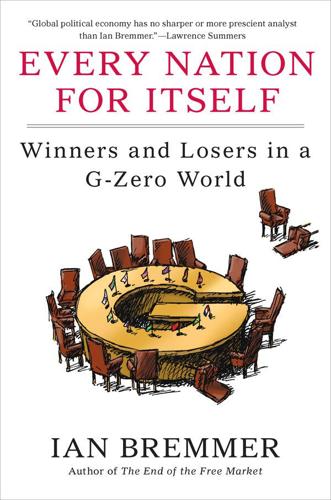
Every Nation for Itself: Winners and Losers in a G-Zero World
by
Ian Bremmer
Published 30 Apr 2012
Still, China and other emerging markets do seem quicker than the United States to recognize the value of closer ties with Africa and the possibilities that the G-Zero can create. That’s one big reason why the BRIC countries invited South Africa to join their club in December 2010. By traditional measures, South Africa’s economy can’t begin to compete with those of the other BRICs (Brazil, Russia, India, and China). The IMF estimated in 2010 that it was less than one-quarter the size of Russia’s, the smallest of the four BRICs, and just 6 percent of China’s.13 But South Africa is a member of the Southern African Development Community, a collection of emerging states that includes Angola, Africa’s second largest oil producer; Botswana, the world’s largest diamond producer; Zambia, the continent’s biggest copper producer; and Mozambique, with enormous untapped reserves of coal.
…
Urges China to Embrace Global Business Standards,” Emerging Markets, September 6, 2011, http://www.emergingmarkets.org/Article/2845846/Asia/US-urges-China-to-embrace-global-business-standards.html. 13. Jon Herskovitz, “Debutante S. Africa Adds Political Cement to BRICS,” Reuters, April 13, 2011, http://www.reuters.com/article/2011/04/13/brics-safrica-idUSL3E7FD16Z20110413. 14. Chironga et al., “Cracking the Next Growth Market.” 15. Unicef, “Viet Nam: Planning and Social Policy,” http://www.unicef.org/vietnam/planning_policy.html. 16. Statistics Canada, “International Trade,” http://www.statcan.gc.ca/pub/11-402-x/2010000/pdf/international-eng.pdf. 17.
…
Yet given the issues that still separate emerging powers from one another, the quick selection of Lagarde reminds us not to exaggerate the speed of that transition or the likelihood that they can work together over the longer term on anything of substance. Another interesting test of emerging-market strength will come with selection of the next World Bank president, a post held since the bank’s founding by an American. Denied the leadership role at the IMF, the BRICS governments (Brazil, Russia, India, China, and South Africa) may feel they have to try to mount a formidable challenge when the World Bank job opens. But this world in transition is not simply an international system divided between established and emerging powers. It’s also one in which little unity of purpose exists among governments within these two groups.

How to Speak Money: What the Money People Say--And What It Really Means
by
John Lanchester
Published 5 Oct 2014
There’s a faint sense of embarrassment and foot shuffling about the term “emerging” in particular, because it sounds so patronizing, like those school prizes for “most improved.” (Or the only prize ever won during her school career by the late Princess Diana, an award for the best-kept hamster.) Developing economies are poorer than emerging ones, but again there is no agreed threshold for the distinction. Brazil, Russia, India, and China, the famous BRICs, are generally seen as emerging economies, and so are Mexico, Indonesia, and Turkey; South Korea is sometimes on these lists, but some other economists regard it as a fully developed economy. It isn’t on the IMF list of emerging economies, which adds the following to the countries already mentioned: Argentina, Bulgaria, Chile, Estonia, Hungary, Latvia, Lithuania, Malaysia, Pakistan, Peru, Philippines, Poland, Romania, South Africa, Thailand, Ukraine, Venezuela.
…
The Bretton Woods system lasted from 1945 until President Nixon unilaterally took the USA off it on 15 August 1971, an event known as the “Nixon shock,” which reintroduced free-floating currencies. Nixon’s reasons for doing that were linked to the pressures on the US economy created by the Vietnam War and the growing trade deficit; his actions allowed the US dollar to drop in value, which was a help to industry and exports. BRIC A term coined by the former Goldman Sachs economist Jim O’Neill, meaning Brazil, Russia, India, China. These are the fastest-growing emerging economies, respectively now the eighth-, ninth-, eleventh-, and third-biggest economies in the world. All of them are marked by sharp levels of recent growth accompanied by sharp levels of rising inequality.
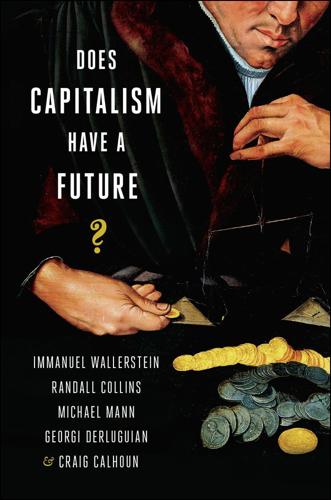
Does Capitalism Have a Future?
by
Immanuel Wallerstein
,
Randall Collins
,
Michael Mann
,
Georgi Derluguian
,
Craig Calhoun
,
Stephen Hoye
and
Audible Studios
Published 15 Nov 2013
But that list of countries who have so far escaped lightly does reinforce the sense that economic power is shifting from the old West to the successfully developing countries of the Rest of the world, including most of Asia. The likeliest scenario in the medium term is a sharing of economic power between the United States, the European Union, and the four BRICs (Brazil, Russia, India and China)–but amid world peace. Since the BRICs’ economies—and especially those of Russia and China—contain more state regulation than most Western countries—and especially the United States—the capitalism of the medium term is likely to be more statist. THE EXHAUSTION OF CAPITALIST MARKETS? Here I shift to the long term.
…
The first decade of the 21st century has also seen the geographic relocation of capital appropriation. The rise of the so-called emergent countries, notably the BRICS (Brazil, Russia, India, China, and South Africa), is the kind of slow reordering of the hierarchy of the modern world-system that has been seen regularly before. However, this presumes that there is room in the system for new productive leading industries, something the generalized profit squeeze seems to counterindicate. Rather, the rise of the BRICS has involved a widening of the numbers of persons involved in partaking of the distribution of world surplus value. This actually reduces, not increases, the possibilities of the endless accumulation of capital, and intensifies rather than counteracts the structural crisis of the world-system.
…
This actually reduces, not increases, the possibilities of the endless accumulation of capital, and intensifies rather than counteracts the structural crisis of the world-system. Furthermore, the austerity measures now so widespread are reducing the customer base for the exports of the BRICS. The most likely financial result of the economic turmoil will be the final eviction of the United States dollar as the world’s reserve currency, followed not by another currency performing this function, but a multicurrency world that allows for the constant fluctuations of exchange rates, a further inducement to the freezing of the financing of new productive activity.
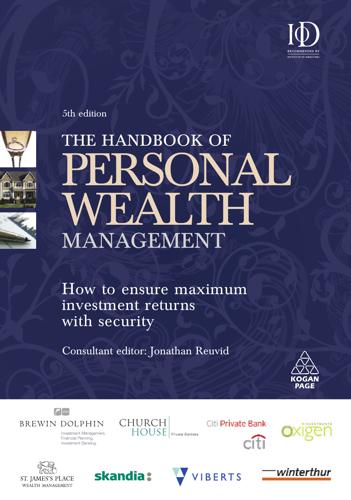
The Handbook of Personal Wealth Management
by
Reuvid, Jonathan.
Published 30 Oct 2011
Given the nature of the beast, that sort of statistic is virtually impossible to come by. At a time when transparency is the new buzz word, the foundation could have a lot to offer. Granted, Anglo-Saxons and old money the world over have grown accustomed to and comfortable with the trust. What about new money? Of the four big economies of the future (Brazil, Russia, India and China, often referred to as BRIC), only India has a legal culture that recognizes the trust. But all four of them understand the concept of the company, from which the foundation is but a short step. Of course transparency means more than not hiding what you are up to. It flows naturally from the confidence of undertaking only business that it is proper for a regulated service provider to conduct.
…
Each of the above are truly global destinations, drawing buyers from ultra-highnet-worth individuals (UHNWIs), defined as those with net assets excluding their principal residence in excess of $10 million. They comprise traditional buyers from the UK, other northern European countries, the United States and the Middle East, and also from the BRIC nations (Brazil, Russia, India and China). ‘High net worths’ do perhaps approach property ownership differently from most, often balancing portfolios and being driven by tax reasons to locations such __________________________________________ THE OVERSEAS PROPERTY MARKET 71 ឣ Table 2.2.1 Winners and losers: Prime global markets, residential price change, year to Q4 2008 and quarter to Q4 2008 Location Country Y on Y Q on Q Bangkok Jakarta Bali Kuala Lumpur Istanbul Moscow Dubai Geneva Verbier Cancun Vancouver Marrakech Shanghai Gstaad Cape Town Limassol Paris Mauritius Seychelles Berlin Johannesburg Monaco Montenegro Rome Milan Bermuda Nice Sao Paulo Cayman Islands St Tropez Cannes St Jean Cap de Ferrat Frankfurt Lake Como Golden Triangle Forte dei Marmi San Francisco Florence Madrid New York (Manhattan) Tokyo Courchevel Chianti Thailand Indonesia Indonesia Malaysia Turkey Russia UAE Switzerland Switzerland Mexico Canada Morocco China Switzerland South Africa Cyprus France Mauritius Seychelles Germany South Africa Monaco Montenegro Italy Italy Bermuda France Brazil Cayman Islands France France France Germany Italy Portugal Italy USA Italy Spain USA Japan France Italy 22.5% 17.7% 16.7% 15.8% 14.3% 13.1% 10.8% 8.5% 7.6% 7.3% 5.6% 5.5% 5.2% 4.4% 4.3% 3.9% 3.8 3.7 3.6 3.1 2.9 2.1 2.1 1.4 1.2 0.1 0.0 0.0 0.0 0.0 0.0 0.0 –0.7 –1.4 –2.0 –3.0 –3.1 –3.6 –3.8 –4.1 –5.4 –7.5 –8.2 3.4% 3.0% 3.7% 2.3% 2.1% –5.6% –19.1% 1.1% 0.5% 1.1% 0.0% 0.9% –3.9% 0.0% 0.5% –0.5 0.0 0.6 0.5 0.0 –1.0 –10.7 –0.5 0.4 0.2 –0.3 –5.0 0.0 0.0 –5.0 –3.0 –5.0 –0.7 –0.9 –1.0 –2.0 –0.7 –2.5 –2.6 –3.2 –4.4 –5.0 –5.0 ឣ 72 REAL ESTATE AND FORESTRY ______________________________________________ Table 2.2.1 continued Location Country Melbourne Mallorca Venice Sydney Mumbai Barbados Dordogne Singapore Marbella London Hong Kong Australia Spain Italy Australia India Barbados France Singapore Spain United Kingdom China Y on Y –8.5 –10.0 –10.5 –11.9 –12.5 –14.3 –14.5 –14.6 –15.0 –16.9 –24.5 Q on Q –1.9 –5.0 –6.5 –6.4 –6.2 –5.3 –5.0 –2.2 –5.7 –9.4 –26.6 as Monaco, Switzerland and the Caribbean rather than by, say, the frequency of public flights that might be more critical in lower-price locations.
…
Today, the market for fine and decorative art trade in 42 countries refers to paintings and drawings (British, Scottish, Irish, European, American, Australian, Canadian, German, Austrian, Greek, Scandinavian, Spanish, Swiss, Israeli, Latin American, Orientalist, Indian, Chinese, Russian, South-East Asian, plus Old Masters, 19th century, Victorian and Edwardian, 20th century, Impressionist and modern, contemporary plus marine and nautical, sporting), prints and multiples, sculpture, statues and figures, furniture and lighting (English, French, European, American plus 19th century, 20th century plus folk), installation and video art, rugs 25,000,000,000 1997 25,000,000,000 1998 1999 15,000,000,000 2000 2001 2002 10,000,000,000 2003 2004 5,000,000,000 2005 2006 rts po ex al To t re po rte rs y ce an m er G er th 2007 O nd Fr an K U la SA U er itz Sw To t al im po rts rs a re rte Ko h re er th O po y na hi C ut So ce an m an Fr er G n n pa Ja nd ai Sp K U la er Sw itz U SA 0 Source: United Nations Figure 4.2.3 International trade in works of art, collectors’ pieces and antiques by country (US $) ឣ 144 PLEASURABLE INVESTMENT ______________________________________________ and carpets, decorations and tapestries, ceramics, glass, silver and objets de vertu (English, European, American, Russian), clocks, watches and barometers, jewellery, jewels and diamonds, icons, works of art (antiquities, Chinese, Judaica, Islamic, Indian, Aboriginal, African and Oceanic, pre-Columbian, American Indian, Japanese, Korean) and garden statuary. The smaller market for collectables loosely refers to old cars, postage stamps, numismatic coins, banknotes, stock certificates, scripts, medals, musical instruments, textiles and costume, vintage wines and spirits, cigars, photographs, playing cards, objets de vertu, bric-a-brac, scientific instruments, books and manuscripts (English, Continental, American plus Medieval, natural history, maps, travel, children’s), sporting memorabilia, arms and armour, dolls and toys, games and teddy bears, luggage and other memorabilia. Formulating an art investment strategy: the pros and cons Art’s value is one of the weightiest, most indispensable and mystifying concepts.
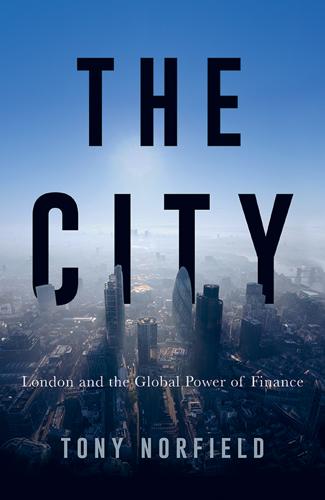
The City
by
Tony Norfield
It provides an alternative source of funds for countries not favoured by the World Bank and the IMF and, more recently, it has played a key role in setting up a ‘New Development Bank’ (NDB), with Brazil, Russia, India and South Africa, in July 2014. This grouping of countries was prompted as much by the publicity arising from an article published in 2001, by an analyst from Goldman Sachs, as by their economic or political ties. He predicted that Brazil, Russia, India and China (South Africa, ‘S’, was added later to make BRICS) would likely play such a big role in the future world economy that they should be added to the structures of global decision-making, rather than being sidelined as unimportant countries compared to the established G7. This appealed to their national pride, and was also a means by which Goldman could tout for more business, particularly in China.
…
That is not saying much, but it at least shows that these countries now have an alternative to the existing financial structures. Equally, although they do have some shared interests, the BRICS countries do not act consistently as a group of alternative powers. The US, for example, has used India as a counterweight to China in the Asian region, and has supported India’s nuclear policy, taking advantage of the border disputes between the two countries. Cooperation among the BRICS countries will nevertheless still likely facilitate China’s evolution as a key world player. The levels of 2013 nominal GDP and population give a simple guide to the potential status of these countries.
…
It pointed to the ‘intensification of a number of troubling trends’.37 Later reports have continued in the same vein, with the November 2013 report arguing that China’s ‘military modernization is altering the security balance in the Asia Pacific, challenging decades of US military pre-eminence in the region’.38 These challenges to US hegemony cannot simply be dismissed as exaggerations by the US political and military establishment. Chapter 9 will cover China’s challenge to the US in the financial sphere in more detail, but it is worth briefly noting some important developments here. In 2014, Brazil, Russia, India, China and South Africa established the New Development Bank, otherwise known as the BRICS bank, funded mainly by China. Its headquarters is in Shanghai, the world’s largest city and busiest container port, and mainland China’s financial centre. The same year also saw the formation of the China-led Asian Infrastructure Investment Bank, which the US failed to prevent its political allies from joining.
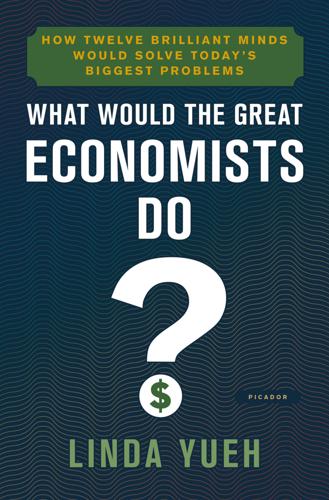
What Would the Great Economists Do?: How Twelve Brilliant Minds Would Solve Today's Biggest Problems
by
Linda Yueh
Published 4 Jun 2018
Its average income during the 1980s was less than $3,000 per capita, which ranked it as a lower middle-income country. By the 2010s, a couple of decades after the end of apartheid, incomes had doubled and propelled South Africa to become an upper-middle-income country. And it became part of the BRICS, the ‘S’ to Brazil, Russia, India and China. South Africa is one of the five large emerging economies highlighted by financial markets. Its popularity with investors seeking higher returns signalled its arrival as one of the new players in the global economy. This is not to suggest that South Africa doesn’t have challenges.
…
I am immensely grateful to have had so many opportunities to hear and discuss the impact of economic policies. Finally, I would like to thank all of you – the readers of this book – for being interested in the big economic challenges of our time. It is only through your engagement that we can go about crafting a better economic future for us all. Glossary BRIC economies The acronym stands for Brazil, Russia, India and China, a term coined by investment bank Goldman Sachs to identify the large emerging markets with good growth potential. current account deficit/surplus The difference between the value of traded goods and services, and portfolio capital, flowing into and out of the country.
…
The British government wants to rely less on financial services, given the banking bust of a few years ago, but manufacturing accounts for only around a tenth of the economy, while the services sector accounts for the bulk of national output. Also, Britain, which until recently exported more to Ireland than to the emerging markets dubbed the BRICs (Brazil, Russia, India, China) combined, wants to reorient more towards developing economies and help its companies access the fastest growing markets in the world. If it is to succeed in this endeavour, it clearly needs to be peddling the right stuff abroad. However, Britain’s trade deficit – the difference between the value of imported and exported goods and services – widened precipitously and hit record highs in the years after 2008.
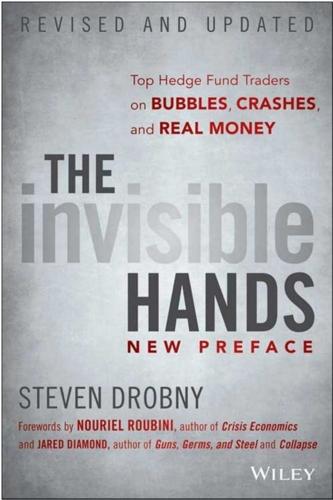
The Invisible Hands: Top Hedge Fund Traders on Bubbles, Crashes, and Real Money
by
Steven Drobny
Published 18 Mar 2010
Many times it does end up being fortuitous, but I find it tends to be more fortuitous when resources are allocated to an idea that is on the cusp of coming to fruition. How important is China in the commodity world? Quantitatively, China is dramatically more important than it was before 2000. It is worth broadening the answer to the growing importance of the emerging markets and especially the BRICs (Brazil, Russia, India, and China), but with China as the cornerstone. Before 2000, metals demand in the developed economies was roughly equivalent to that in the emerging economies, whereas after 2000, emerging markets demand for metals grew at 8 percent, while developed world demand was flat. As you can see, the Asian influence is very important.
…
Index Absolute return, generation Accounting leverage, economic leverage (contrast) Active management, passive management (combination) Active managers, search process Active risk allocation, importance Active risk management, dedication Adaptability call Agricultural commodities, prices Agricultural futures (1977-2009) AIG, bailout Alchemy of Finance, The (Soros) Allocators, future adaptability Alpha beta, contrast central bank source extraction, zero-sum game generation policy change, impact providing, policy error (usage) risk-adjusted measure Alpha-seeking macro fund Alternative energy source, supply (increase) Annual cash demands, short-term constraints Annual cash flows, importance AOL-Time Warner deal Armageddon scenario, extrapolation Asia crisis (1997) repeat Asia crisis (1998-1999) Asia currencies, bullishness Asian equities impact perspective Asia performance Asset-backed securities index (ABX), problem Asset/liability matching Assets allocation, function collapse deflation, renewal expected return generation purchase (Buffett) Asymmetric bet example structure Back tests Backwardation Bacow, Larry Bailouts, usage Balance sheets availability strength Baltic dry shipping rate (1998-2009) Bank capital ratios, Basel II framework (usage) Bank of International Settlements (BIS), turnover data Banks balance sheets, problems implosion leverage ratios Bayesian methods Bear market Bear Stearns bailout government bond leverage change perspective (Bernanke) Beauty contest, concept Benchmark Beneficiaries, payments (impact) Bernanke, Ben actions Bear Stearns perspective debt deflation perspective success/error Beta alpha, contrast correlation portfolio Beta-plus domination Big Oil Black box applications, naivete Black swan Bolton, Anthony Bond option positions, leverage Bond repurchase agreement (repo) Bonds attractiveness Bond Trader perspective collapse fixed interest markets, rout (1994) perspective (Drobny Global Conference) portfolio purchase, leverage (usage) traders vigilantes Bond Trader, The capital allocation determination central banks, alpha source diversification firm-level risk management fixed income trading hedge fund/prop desk, contrast inputs, usage interview liquidity, measurement process market change focus positioning, importance money managers, meeting options, usage performance positions, scaling sizing determination time horizon traders control hiring trades consideration miss worst-case scenario trading ideas wealth maximization Brazil, Russia, India, and China (BRIC) Break-even inflation Brent crude British Telecom, pension fund (Commodity Trader hiring) Bubbles. See Credit bubble creation future Bond Trader prediction Professor prediction neutrality Buffett, Warren diversification Reader’s Digest franchise S&P index performance prediction California Public Employees’ Retirement System (CalPERS) contribution levels, increase equities allocation Equity Trader operation flexibility, impact fund, formula hedge funds, in-house operation investment performance, improvement target, increase methodology 1% effect peak-to-trough drawdown Pensioner control pension problems portfolio construction, assumption Predator operation unlevered pension fund CalPERS Model Cambridge Endowment, asset management Capital accumulation adequacy ratios allocation, determination availability compounding inflows, attraction loss, avoidance management tactical asset allocation models, usage pools preservation raising total destruction unlevered pool Capital Asset Pricing Model (CAPM) confusion Capitalism, stability Cash balance holding importance leverage, relationship obligations, meeting (difficulty) valuation quality Catastrophe risk options CDX generic credit spreads Central banker talent, Bond Trader perspective Central banks, alpha source Charitable foundation, running (example) China commodity market manipulation Commodity Super Cycle, importance Commodity Trader perspective decoupling examination FDI fiscal stimulus foreign exchange reserves future G7 demand reliance GDP GDP (2000-2008) global reserves acquisition growth rates, achievement importance, Commodity Investor perspective investment-to-GDP ratios Plasticine Macro Trader perspective problems renminbi (2005-2009) superpower Church of England, pension fund assets Client risk Closet dollar exposure Cocoa (1970-2009) Cohen, Abbey Joseph Collateralized debt obligations (CDOs) Commodities bearish view collapse, Commodity Hedger anticipation Commodity Investor focus curves pricing susceptibility equities Commodity Investor perspective exposure definition, application indices, usage impact investor participation long/short, ease meltdown options markets, liquidity price-induced inflation prices collapse financial flows, impact risk, equity risk (contrast) space, active manager search Commodities and oil (2008) Commodity Hedger, The big moves Cargill employment commodities collapse exposure, indices (usage) discipline endowment process full-risk positions, risk collars (requirement) globalization, meaning human bias, impact information arbitrage information flow, absence interview investment process investor focus lessons leverage, usage liquidity management valuation process market entry mistakes passive commodity indices, avoidance peak oil belief portfolio construction price dislocation identification real asset perspective real money fund operation redemptions, absence risk collars function impact risk management tactical approach tail hedging, impact time horizon, shortening trader development trades examination, events/news (impact) example execution hurdles/shortage ideas, origination one-year time horizon problems trading history volatility, dampening Commodity Investor, The active/tactical pension fund manager annual returns China, importance commodities/commodity equities focus cyclical/secular macro/micro thought process deferred oil trade downside risk, mitigation export land model false confidence hedge fund interaction hedge fund manager skill hyperinflation, worry ideas, trading interview investment process lessons liquidity, examination liquid net worth long-term investment horizon macro/micro domination macro theme mines, purchase oil fields, purchase pension fund, base currency philosophy positions, scaling process real money manager scenario resource nationalism risk-taking ability sovereign wealth fund, control speculative flows spot shortages/outages state pension fund, control tactical approach trade, problem trends triangulated conviction uncertainty, risk Commodity markets China manipulation Commodity Trader approach factors pricing structure stress test Commodity Super Cycle importance initiation trade selection Commodity Trader, The career trades China perspective commodities long/short, ease perspective trades global book, running global energy positions hedge fund money management inflation perspective interview liquidity, absence market coverage entry options, usage prop trader, hedge fund manager (contrast) prop trading, customer flow (impact) risk management failure second order effects short side Commodity trading advisers (CTAs), impact Constraints Consuelo Mack WealthTrack (Swensen) Consumer Price Index (CPI) Consumer price inflation (CPI) number, investment Contango Conundrum Speech (Greenspan) Convenience yield Copper (1989-2009) Core inflation, headline inflation (contrast) Core positions trading, indices/options (usage) Corn, yield expectations (increase) Corner solution Corn futures (2006-2009) Corn futures (2007) Corporate bonds, risky assets Corporate pensions funds, PBGC guarantees NLRB ruling Correlations analysis movement risk, increase Corruption Perceptions Index (CPI) Counterparty risk importance Country-related Eurobonds, usage Coxe, Don Crash (2008) banks, problems foresight CRB (2004-2009) CRB Commodity Index (2001) CRB Index (2009) Credit bubble future recognition trades Credit default swaps (CDSs) levels, examination payment usage Credit indices, tranches Credit pricing, example Credit spreads, tightness Crop yields, pollution (impact) Cross-correlation misunderstanding risk management Cross-sectional data sets Crowded positions, identification Crowding factor issue pervasiveness Crude oil inventory Cumulative returns (1990-2009) Currency hedge Currency valuation Cyclical analysis Data mining techniques, contrast Datastream, usage Debt.
…
My recommendation would be Norway, Sweden, Euroland, U.S., and U.K. inflation-linked bonds—countries with credible inflation indices and institutions. The remaining 30 percent should be in other real assets in emerging markets, which, if they go to zero, the coupon instruments would compensate. Thus, I would invest half of the remainder in some weighted basket of BRIC inflation-linked bonds and the other half in BRIC equities, currency unhedged. If everything is currency unhedged and your friend is based in the U.S., then a large dollar rally is a big risk, no? It is and it isn’t. Because such a large percentage of the portfolio is in linkers, a massive U.S. dollar rally means that other currencies have depreciated.
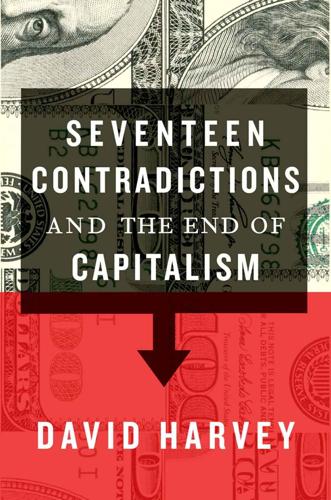
Seventeen Contradictions and the End of Capitalism
by
David Harvey
Published 3 Apr 2014
Growth that goes much above 5 per cent, on the other hand, is typically taken in ‘mature economies’ (that is, not contemporary China) as a sign of ‘overheating’, which always comes with the threat of runaway inflation. In recent times, even across the ‘crash’ years of 2007–9, global growth kept fairly steady, close to 3 per cent or so, though most of it was in emerging markets (such as Brazil, Russia, India and China – the BRIC countries in short). The ‘advanced capitalist economies’ fell to 1 per cent growth or below from 2008 to 2012. In 1820, Maddison calculates, global output was worth $694 billion in 1990 constant dollars (‘billion’ on the US scale, meaning 1,000 million). By 1913 it had risen to $2.7 trillion (on the US scale a trillion is 1,000 billion); in 1973 it stood at $16 trillion and by 2003 nearly $41 trillion.
…
N., Process and Reality, New York, Free Press, 1969 Wolff, R., Moore, B., and Marcuse, H., A Critique of Pure Tolerance: Beyond Tolerance, Tolerance and the Scientific Outlook, Repressive Tolerance, Boston, Beacon Press, 1969 Wright, M., Disposable Women and Other Myths of Global Capitalism, New York, Routledge, 2006 Index Numbers in italics indicate Figures. 2001: A Space Odyssey (film) 271 A Abu Ghraib, Iraq 202 acid deposition 255, 256 advertising 50, 121, 140, 141, 187, 197, 236, 237, 275, 276 Aeschylus 291 Afghanistan 202, 290 Africa and global financial crisis 170 growth 232 indigenous population and property rights 39 labour 107, 108, 174 ‘land grabs’ 39, 58, 77, 252 population growth 230 Agamben, Giorgio 283–4 agglomeration 149, 150 economies 149 aggregate demand 20, 80, 81, 104, 173 aggregate effective demand 235 agribusiness 95, 133, 136, 206, 247, 258 agriculture ix, 39, 61, 104, 113, 117, 148, 229, 239, 257–8, 261 Alabama 148 Algerian War (1954–62) 288, 290 alienation 57, 69, 125, 126, 128, 129, 130, 198, 213, 214, 215, 263, 266–70, 272, 275–6, 279–80, 281, 286, 287 Allende, Salvador 201 Althusser, Louis 286 Amazon 131, 132 Americas colonisation of 229 indigenous populations 283 Amnesty International 202 anti-capitalist movements 11, 14, 65, 110, 111, 162 anti-capitalist struggle 14, 110, 145, 193, 269, 294 anti-globalisation 125 anti-terrorism xiii apartheid 169, 202, 203 Apple 84, 123, 131 apprenticeships 117 Arab Spring movement 280 Arbenz, Jacobo 201 Argentina 59, 107, 152, 160, 232 Aristotelianism 283, 289 Aristotle 1, 4, 200, 215 arms races 93 arms traffickers 54 Arrighi, Giovanni 136 Adam Smith in Beijing 142 Arthur, Brian: The Nature of Technology 89, 95–9, 101–4, 110 artificial intelligence xii, 104, 108, 120, 139, 188, 208, 295 Asia ‘land grabs’ 58 urbanisation 254 assembly lines 119 asset values and the credit system 83 defined 240 devalued 257 housing market 19, 20, 21, 58, 133 and predatory lending 133 property 76 recovery of 234 speculation 83, 101, 179 associationism 281 AT&T 131 austerity xi, 84, 177, 191, 223 Australia 152 autodidacts 183 automation xii, 103, 105, 106, 108, 138, 208, 215, 295 B Babbage, Charles 119 Bangkok riots, Thailand (1968) x Bangladesh dismantlement of old ships 250 factories 129, 174, 292 industrialisation 123 labour 108, 123, 129 protests against unsafe labour conditions 280 textile mill tragedies 249 Bank of England 45, 46 banking bonuses 164 electronic 92, 100, 277 excessive charges 84 interbank lending 233 and monopoly power 143 national banks supplant local banking in Britain and France 158 net transfers between banks 28 power of bankers 75 private banks 233 profits 54 regional banks 158 shell games 54–5 systematic banking malfeasance 54, 61 Baran, Paul and Sweezy, Paul: Monopoly Capitalism 136 Barcelona 141, 160 barrios pobres ix barter 24, 25, 29 Battersea Power Station, London 255 Battle of Algiers, The (film) 288 Bavaria, Germany 143, 150 Becker, Gary 186 Bernanke, Ben 47 Bhutan 171 billionaires xi, 165, 169, 170 biodiversity 246, 254, 255, 260 biofuels 3 biomedical engineering xii Birmingham 149 Bitcoin 36, 109 Black Panthers 291 Blade Runner (film) 271 Blankfein, Lloyd 239–40 Bohr, Niels 70 Bolivia 257, 260, 284 bondholders xii, 32, 51, 152, 158, 223, 240, 244, 245 bonuses 54, 77, 164, 178 Bourdieu, Pierre 186, 187 bourgeois morality 195 bourgeois reformism 167, 211 ‘Brady Bonds’ 240 Braudel, Fernand 193 Braverman, Harry: Labor and Monopoly Capital 119 Brazil a BRIC country 170, 228 coffee growers 257 poverty grants 107 unrest in (2013) 171, 243, 293 Brecht, Bertolt 265, 293 Bretton Woods (1944) 46 brewing trade 138 BRIC countries 10, 170, 174, 228 Britain alliance between state and London merchant capitalists 44–5 banking 158 enclosure movement 58 lends to United States (nineteenth century) 153 suppression of Mau Mau 291 surpluses of capital and labour sent to colonies 152–3 welfare state 165 see also United Kingdom British Empire 115, 174 British Museum Library, London 4 British Petroleum (BP) 61, 128 Buffett, Peter 211–12, 245, 283, 285 Buffett, Warren 211 bureaucracy 121–2, 165, 203, 251 Bush, George, Jr 201, 202 C Cabet, Étienne 183 Cabral, Amilcar 291 cadastral mapping 41 Cadbury 18 Cairo uprising (2011) 99 Calhoun, Craig 178 California 29, 196, 254 Canada 152 Cape Canaveral, Florida 196 capital abolition of monopolisable skills 119–20 aim of 92, 96–7, 232 alternatives to 36, 69, 89, 162 annihilation of space through time 138, 147, 178 capital-labour contradiction 65, 66, 68–9 and capitalism 7, 57, 68, 115, 166, 218 centralisation of 135, 142 circulation of 5, 7, 8, 53, 63, 67, 73, 74, 75, 79, 88, 99, 147, 168, 172, 177, 234, 247, 251, 276 commodity 74, 81 control over labour 102–3, 116–17, 166, 171–2, 274, 291–2 creation of 57 cultural 186 destruction of 154, 196, 233–4 and division of labour 112 economic engine of 8, 10, 97, 168, 172, 200, 253, 265, 268 evolution of 54, 151, 171, 270 exploitation by 156, 195 fictitious 32–3, 34, 76, 101, 110–11, 239–42 fixed 75–8, 155, 234 importance of uneven geographical development to 161 inequality foundational for 171–2 investment in fixed capital 75 innovations 4 legal-illegal duality 72 limitless growth of 37 new form of 4, 14 parasitic forms of 245 power of xii, 36, 47 private capital accumulation 23 privatisation of 61 process-thing duality 70–78 profitability of 184, 191–2 purpose of 92 realisation of 88, 173, 192, 212, 231, 235, 242, 268, 273 relation to nature 246–63 reproduction of 4, 47, 55, 63, 64, 88, 97, 108, 130, 146, 161, 168, 171, 172, 180, 181, 182, 189, 194, 219, 233, 252 spatiality of 99 and surplus value 63 surpluses of 151, 152, 153 temporality of 99 tension between fixed and circulating capital 75–8, 88, 89 turnover time of 73, 99, 147 and wage rates 173 capital accumulation, exponential growth of 229 capital gains 85, 179 capital accumulation 7, 8, 75, 76, 78, 102, 149, 151–5, 159, 172, 173, 179, 192, 209, 223, 228–32, 238, 241, 243, 244, 247, 273, 274, 276 basic architecture for 88 and capital’s aim 92, 96 collapse of 106 compound rate of 228–9 and the credit system 83 and democratisation 43 and demographic growth 231 and household consumerism 192 and lack of aggregate effective demand in the market 81 and the land market 59 and Marx 5 maximising 98 models of 53 in a new territories 152–3 perpetual 92, 110, 146, 162, 233, 265 private 23 promotion of 34 and the property market 50 recent problems of 10 and the state 48 capitalism ailing 58 an alternative to 36 and capital 7, 57, 68, 115, 166, 218 city landscape of 160 consumerist 197 contagious predatory lawlessness within 109 crises essential to its reproduction ix; defined 7 and demand-side management 85 and democracy 43 disaster 254–5, 255 economic engine of xiii, 7–8, 11, 110, 220, 221, 252, 279 evolution of 218 geographical landscape of 146, 159 global xi–xii, 108, 124 history of 7 ‘knowledge-based’ xii, 238 and money power 33 and a moneyless economy 36 neoliberal 266 political economy of xiv; and private property rights 41 and racialisation 8 reproduction of ix; revivified xi; vulture 162 capitalist markets 33, 53 capitalo-centric studies 10 car industry 121, 138, 148, 158, 188 carbon trading 235, 250 Caribbean migrants 115 Cartesian thinking 247 Cato Institute 143 Central America 136 central banks/bankers xi–xii, 37, 45, 46, 48, 51, 109, 142, 156, 161, 173, 233, 245 centralisation 135, 142, 144, 145, 146, 149, 150, 219 Césaire, Aimé 291 CFCs (chloro-fluorocarbons) 248, 254, 256, 259 chambers of commerce 168 Chandler, Alfred 141 Chaplin, Charlie 103 Charles I, King 199 Chartism 184 Chávez, Hugo 123, 201 cheating 57, 61, 63 Cheney, Dick 289 Chicago riots (1968) x chicanery 60, 72 children 174 exploitation of 195 raising 188, 190 trading of 26 violence and abuse of 193 Chile 136, 194, 280 coup of 1973 165, 201 China air quality 250, 258 becomes dynamic centre of a global capitalism 124 a BRIC country 170, 228 capital in (after 2000) 154 class struggles 233 and competition 150, 161 consumerism 194–5, 236 decentralisation 49 dirigiste governmentality 48 dismantlement of old ships 250 dispossessions in 58 education 184, 187 factories 123, 129, 174, 182 famine in 124–5 ‘great leap forward’ 125 growth of 170, 227, 232 income inequalities 169 industrialisation 232 Keynesian demand-side and debt-financed expansion xi; labour 80, 82, 107, 108, 123, 174, 230 life expectancy 259 personal debt 194 remittances 175 special economic zones 41, 144 speculative booms and bubbles in housing markets 21 suburbanisation 253 and technology 101 toxic batteries 249–50 unstable lurches forward 10 urban and infrastructural projects 151 urbanisation 232 Chinese Communist Party 108, 142 Church, the 185, 189, 199 circular cumulative causation 150 CitiBank 61 citizenship rights 168 civil rights 202, 205 class affluent classes 205 alliances 143, 149 class analysis xiii; conflict 85, 159 domination 91, 110 plutocratic capitalist xiii; power 55, 61, 88, 89, 92, 97, 99, 110, 134, 135, 221, 279 and race 166, 291 rule 91 structure 91 class struggle 34, 54, 67, 68, 85, 99, 103, 110, 116, 120, 135, 159, 172, 175, 183, 214, 233 climate change 4, 253–6, 259 Clinton, President Bill 176 Cloud Atlas (film) 271 CNN 285 coal 3, 255 coercion x, 41–4, 53, 60–63, 79, 95, 201, 286 Cold War 153, 165 collateralised debt obligations (CDOs) 78 Collins, Suzanne: The Hunger Games 264 Colombia 280 colonialism 257 the colonised 289–90 indigenous populations 39, 40 liberation from colonial rule 202 philanthropic 208, 285 colonisation 229, 262 ‘combinatorial evolution’ 96, 102, 104, 146, 147, 248 commercialisation 262, 263, 266 commodification 24, 55, 57, 59–63, 88, 115, 140, 141, 192, 193, 235, 243, 251, 253, 260, 262, 263, 273 commodities advertising 275 asking price 31 and barter 24 commodity exchange 39, 64 compared with products 25–6 defective or dangerous 72 definition 39 devaluation of 234 exchange value 15, 25 falling costs of 117 importance of workers as buyers 80–81 international trade in 256 labour power as a commodity 62 low-value 29 mobility of 147–8 obsolescence 236 single metric of value 24 unique 140–41 use value 15, 26, 35 commodity markets 49 ‘common capital of the class’ 142, 143 common wealth created by social labour 53 private appropriation of 53, 54, 55, 61, 88, 89 reproduction of 61 use values 53 commons collective management of 50 crucial 295 enclosure of 41, 235 natural 250 privatised 250 communications 99, 147, 148, 177 communism 196 collapse of (1989) xii, 165 communist parties 136 during Cold War 165 scientific 269 socialism/communism 91, 269 comparative advantage 122 competition and alienated workers 125 avoiding 31 between capitals 172 between energy and food production 3 decentralised 145 and deflationary crisis (1930s) 136 foreign 148, 155 geopolitical 219 inter-capitalist 110 international 154, 175 interstate 110 interterritorial 219 in labour market 116 and monopoly 131–45, 146, 218 and technology 92–3 and turnover time of capital 73, 99 and wages 135 competitive advantage 73, 93, 96, 112, 161 competitive market 131, 132 competitiveness 184 complementarity principle of 70 compounding growth 37, 49, 222, 227, 228, 233, 234, 235, 243, 244 perpetual 222–45, 296 computerisation 100, 120, 222 computers 92, 100, 105, 119 hardware 92, 101 organisational forms 92, 93, 99, 101 programming 120 software 92, 99, 101, 115, 116 conscience laundering 211, 245, 284, 286 Conscious Capitalism 284 constitutional rights 58 constitutionality 60, 61 constitutions progressive 284 and social bond between human rights and private property 40 US Constitution 284 and usurpation of power 45 consumerism 89, 106, 160, 192–5, 197, 198, 236, 274–7 containerisation 138, 148, 158 contracts 71, 72, 93, 207 contradictions Aristotelian conception of 4 between money and the social labour money represents 83 between reality and appearance 4–6 between use and exchange value 83 of capital and capitalism 68 contagious intensification of 14 creative use of 3 dialectical conception of 4 differing reactions to 2–3 and general crises 14 and innovation 3 moved around rather than resolved 3–4 multiple 33, 42 resolution of 3, 4 two modes of usage 1–2 unstable 89 Controller of the Currency 120 corporations and common wealth 54 corporate management 98–9 power of 57–8, 136 and private property 39–40 ‘visible hand’ 141–2 corruption 53, 197, 266 cosmopolitanism 285 cost of living 164, 175 credit cards 67, 133, 277 credit card companies 54, 84, 278 credit financing 152 credit system 83, 92, 101, 111, 239 crises changes in mental conceptions of the world ix-x; crisis of capital 4 defined 4 essential to the reproduction of capitalism ix; general crisis ensuing from contagions 14 housing markets crisis (2007–9) 18, 20, 22 reconfiguration of physical landscapes ix; slow resolution of x; sovereign debt crisis (after 2012) 37 currency markets, turbulence of (late 1960s) x customary rights 41, 59, 198 D Davos conferences 169 DDT 259 Debord, Guy: The Society of the Spectacle 236 debt creation 236 debt encumbrancy 212 debt peonage 62, 212 decentralisation 49, 142, 143, 144, 146, 148, 219, 281, 295 Declaration of Independence (US) 284 decolonisation 282, 288, 290 decommodification 85 deindustrialisation xii, 77–8, 98, 110, 148, 153, 159, 234 DeLong, Bradford 228 demand management 81, 82, 106, 176 demand-side management 85 democracy 47, 215 bourgeois 43, 49 governance within capitalism 43 social 190 totalitarian 220, 292 democratic governance 220, 266 democratisation 43 Deng Xiaoping x depressions 49, 227 1930s x, 108, 136, 169, 227, 232, 234 Descartes, René 247 Detroit 77, 136, 138, 148, 150, 152, 155, 159, 160 devaluation 153, 155, 162 of capital 233 of commodities 234 crises 150–51, 152, 154 localised 154 regional 154 developing countries 16, 240 Dhaka, Bangladesh 77 dialectics 70 Dickens, Charles 126, 169 Bleak House 226 Dombey and Son 184 digital revolution 144 disabled, the 202 see also handicapped discrimination 7, 8, 68, 116, 297 diseases 10, 211, 246, 254, 260 disempowerment 81, 103, 116, 119, 198, 270 disinvestment 78 Disneyfication 276 dispossession accumulation by 60, 67, 68, 84, 101, 111, 133, 141, 212 and capital 54, 55, 57 economies of 162 of indigenous populations 40, 59, 207 ‘land grabs’ 58 of land rights of the Irish 40 of the marginalised 198 political economy of 58 distributional equality 172 distributional shares 164–5, 166 division of labour 24, 71, 112–30, 154, 184, 268, 270 and Adam Smith 98, 118 defined 112 ‘the detail division of labour’ 118, 121 distinctions and oppositions 113–14 evolution of 112, 120, 121, 126 and gender 114–15 increasing complexity of 124, 125, 126 industrial proletariat 114 and innovation 96 ‘new international division of labour’ 122–3 organisation of 98 proliferating 121 relation between the parts and the whole 112 social 113, 118, 121, 125 technical 113, 295 uneven geographical developments in 130 dot-com bubble (1990s) 222–3, 241 ‘double coincidence of wants and needs’ 24 drugs 32, 193, 248 cartels 54 Durkheim, Emile 122, 125 Dust Bowl (United States, 1930s) 257 dynamism 92, 104, 146, 219 dystopia 229, 232, 264 E Eagleton , Terry: Why Marx Was Right 1, 21, 200, 214–15 East Asia crisis of 1997–98 154 dirigiste governmentality 48 education 184 rise of 170 Eastern Europe 115, 230 ecological offsets 250 economic rationality 211, 250, 252, 273, 274, 275, 277, 278, 279 economies 48 advanced capitalist 228, 236 agglomeration 149 of dispossession 162 domination of industrial cartels and finance capital 135 household 192 informal 175 knowledge-based 188 mature 227–8 regional 149 reoriented to demand-side management 85 of scale 75 solidarity 66, 180 stagnant xii ecosystems 207, 247, 248, 251–6, 258, 261, 263, 296 Ecuador 46, 152, 284 education 23, 58, 60, 67–8, 84, 110, 127–8, 129, 134, 150, 156, 168, 183, 184, 185, 187, 188, 189, 223, 235, 296 efficiency 71, 92, 93, 98, 103, 117, 118, 119, 122, 126, 272, 273, 284 efficient market hypothesis 118 Egypt 107, 280, 293 Ehrlich, Paul 246 electronics 120, 121, 129, 236, 292 emerging markets 170–71, 242 employment 37 capital in command of job creation 172, 174 conditions of 128 full-time 274 opportunities for xii, 108, 168 regional crises of 151 of women 108, 114, 115, 127 see also labour enclosure movement 58 Engels, Friedrich 70 The Condition of the English Working Class in England 292 English Civil War (1642–9) 199 Enlightenment 247 Enron 133, 241 environmental damage 49, 61, 110, 111, 113, 232, 249–50, 255, 257, 258, 259, 265, 286, 293 environmental movement 249, 252 environmentalism 249, 252–3 Epicurus 283 equal rights 64 Erasmus, Desiderius 283 ethnic hatreds and discriminations 8, 165 ethnic minorities 168 ethnicisation 62 ethnicity 7, 68, 116 euro, the 15, 37, 46 Europe deindustrialisation in 234 economic development in 10 fascist parties 280 low population growth rate 230 social democratic era 18 unemployment 108 women in labour force 230 European Central Bank 37, 46, 51 European Commission 51 European Union (EU) 95, 159 exchange values commodities 15, 25, 64 dominance of 266 and housing 14–23, 43 and money 28, 35, 38 uniform and qualitatively identical 15 and use values 15, 35, 42, 44, 50, 60, 65, 88 exclusionary permanent ownership rights 39 experts 122 exploitation 49, 54, 57, 62, 68, 75, 83, 107, 108, 124, 126, 128, 129, 150, 156, 159, 166, 175, 176, 182, 185, 193, 195, 208, 246, 257 exponential growth 224, 240, 254 capacity for 230 of capital 246 of capital accumulation 223, 229 of capitalist activity 253 and capital’s ecosystem 255 in computer power 105 and environmental resources 260 in human affairs 229 and innovations in finance and banking 100 potential dangers of 222, 223 of sophisticated technologies 100 expropriation 207 externality effects 43–4 Exxon 128 F Facebook 236, 278, 279 factories ix, 123, 129, 160, 174, 182, 247, 292 Factory Act (1864) 127, 183 famine 124–5, 229, 246 Fannie Mae 50 Fanon, Frantz 287 The Wretched of the Earth 288–90, 293 fascist parties 280 favelas ix, 16, 84, 175 feminisation 115 feminists 189, 192, 283 fertilisers 255 fetishes, fetishism 4–7, 31, 36–7, 61, 103, 111, 179, 198, 243, 245, 269, 278 feudalism 41 financial markets 60, 133 financialisation 238 FIRE (finance, insurance and real estate) sections 113 fishing 59, 113, 148, 249, 250 fixity and motion 75–8, 88, 89, 146, 155 Food and Drug Administration 120 food production/supply 3, 229, 246, 248, 252 security 253, 294, 296 stamp aid 206, 292 Ford, Martin 104–8, 111, 273 foreclosure 21, 22, 24, 54, 58, 241, 268 forestry 113, 148, 257 fossil fuels 3–4 Foucault, Michel xiii, 204, 209, 280–81 Fourier, François Marie Charles 183 Fourierists 18 Fourteen Points 201 France banking 158 dirigiste governmentality under de Gaulle 48 and European Central Bank 46 fascist parties 280 Francis, Pope 293 Apostolic Exhortation 275–6 Frankfurt School 261 Freddie Mac 50 free trade 138, 157 freedom 47, 48, 142, 143, 218, 219, 220, 265, 267–270, 276, 279–82, 285, 288, 296 and centralised power 142 cultural 168 freedom and domination 199–215, 219, 268, 285 and the good life 215 and money creation 51 popular desire for 43 religious 168 and state finances 48 under the rule of capital 64 see also liberty and freedom freedom of movement 47, 296 freedom of thought 200 freedom of the press 213 French Revolution 203, 213, 284 G G7 159 G20 159 Gallup survey of work 271–2 Gandhi, Mahatma 284, 291 Gaulle, Charles de 48 gay rights 166 GDP 194, 195, 223 Gehry, Frank 141 gender discriminations 7, 8, 68, 165 gene sequences 60 General Motors xii genetic engineering xii, 101, 247 genetic materials 235, 241, 251, 261 genetically modified foods 101 genocide 8 gentrification 19, 84, 141, 276 geocentric model 5 geographical landscape building a new 151, 155 of capitalism 159 evolution of 146–7 instability of 146 soulless, rationalised 157 geopolitical struggles 8, 154 Germany and austerity 223 autobahns built 151 and European Central Bank 46 inflation during 1920s 30 wage repression 158–9 Gesell, Silvio 35 Ghana 291 global economic crisis (2007–9) 22, 23, 47, 118, 124, 132, 151, 170, 228, 232, 234, 235, 241 global financialisation x, 177–8 global warming 260 globalisation 136, 174, 176, 179, 223, 293 gold 27–31, 33, 37, 57, 227, 233, 238, 240 Golden Dawn 280 Goldman Sachs 75, 239 Google 131, 136, 195, 279 Gordon, Robert 222, 223, 230, 239, 304n2 Gore, Al 249 Gorz, André 104–5, 107, 242, 270–77, 279 government 60 democratic 48 planning 48 and social bond between human rights and private property 40 spending power 48 governmentality 43, 48, 157, 209, 280–81, 285 Gramsci, Antonio 286, 293 Greco, Thomas 48–9 Greece 160, 161, 162, 171, 235 austerity 223 degradation of the well-being of the masses xi; fascist parties 280 the power of the bondholders 51, 152 greenwashing 249 Guantanamo Bay, Cuba 202, 284 Guatemala 201 Guevara, Che 291 Guggenheim Museum, Bilbao 141 guild system 117 Guinea-Bissau 291 Gulf Oil Spill (2010) 61 H Habermas, Jürgen 192 habitat 246, 249, 252, 253, 255 handicapped, the 218 see also disabled Harvey, David The Enigma of Capital 265 Rebel Cities 282 Hayek, Friedrich 42 Road to Serfdom 206 health care 23, 58, 60, 67–8, 84, 110, 134, 156, 167, 189, 190, 235, 296 hedge funds 101, 162, 239, 241, 249 managers 164, 178 Heidegger, Martin 59, 250 Heritage Foundation 143 heterotopic spaces 219 Hill, Christopher 199 Ho Chi Minh 291 holocausts 8 homelessness 58 Hong Kong 150, 160 housing 156, 296 asset values 19, 20, 21, 58 ‘built to order’ 17 construction 67 controlling externalities 19–20 exchange values 14–23, 43 gated communities ix, 160, 208, 264 high costs 84 home ownership 49–50 investing in improvements 20, 43 mortgages 19, 21, 28, 50, 67, 82 predatory practices 67, 133 production costs 17 rental markets 22 renting or leasing 18–19, 67 self-built 84 self-help 16, 160 slum ix, 16, 175 social 18, 235 speculating in exchange value 20–22 speculative builds 17, 28, 78, 82 tenement 17, 160 terraced 17 tract ix, 17, 82 use values 14–19, 21–2, 23, 67 housing markets 18, 19, 21, 22, 28, 32, 49, 58, 60, 67, 68, 77, 83, 133, 192 crisis (2007–9) 18, 20, 22, 82–3 HSBC 61 Hudson, Michael 222 human capital theory 185, 186 human evolution 229–30 human nature 97, 198, 213, 261, 262, 263 revolt of 263, 264–81 human rights 40, 200, 202 humanism 269 capitalist 212 defined 283 education 128 excesses and dark side 283 and freedom 200, 208, 210 liberal 210, 287, 289 Marxist 284, 286 religious 283 Renaissance 283 revolutionary 212, 221, 282–93 secular 283, 285–6 types of 284 Hungary: fascist parties 280 Husserl, Edmund 192 Huygens, Christiaan 70 I IBM 128 Iceland: banking 55 identity politics xiii illegal aliens (‘sans-papiers’) 156 illegality 61, 72 immigrants, housing 160 imperialism 135, 136, 143, 201, 257, 258 income bourgeois disposable 235 disparities of 164–81 levelling up of 171 redistribution to the lower classes xi; see also wages indebtedness 152, 194, 222 India billionaires in 170 a BRIC country 170, 228 call centres 139 consumerism 236 dismantlement of old ships 250 labour 107, 230 ‘land grabs’ 77 moneylenders 210 social reproduction in 194 software engineers 196 special economic zones 144 unstable lurches forward 10 indigenous populations 193, 202, 257, 283 dispossession of 40, 59, 207 and exclusionary ownership rights 39 individualism 42, 197, 214, 281 Indonesia 129, 160 industrial cartels 135 Industrial Revolution 127 industrialisation 123, 189, 229, 232 inflation 30, 36, 37, 40, 49, 136, 228, 233 inheritance 40 Inner Asia, labour in 108 innovation 132 centres of 96 and the class struggle 103 competitive 219 as a double-edged sword xii; improving the qualities of daily life 4 labour-saving 104, 106, 107, 108 logistical 147 organisational 147 political 219 product 93 technological 94–5, 105, 147, 219 as a way out of a contradiction 3 insurance companies 278 intellectual property rights xii, 41, 123, 133, 139, 187, 207, 235, 241–2, 251 interest compound 5, 222, 224, 225, 226–7 interest-rate manipulations 54 interest rates 54, 186 living off 179, 186 on loans 17 money capital 28, 32 and mortgages 19, 67 on repayment of loans to the state 32 simple 225, 227 usury 49 Internal Revenue Service income tax returns 164 International Monetary Fund (IMF) 49, 51, 100, 143, 161, 169, 186, 234, 240 internet 158, 220, 278 investment: in fixed capital 75 investment pension funds 35–6 IOUs 30 Iran 232, 289 Iranian Revolution 289 Iraq war 201, 290 Ireland dispossession of land rights 40 housing market crash (2007–9) 82–3 Istanbul 141 uprising (2013) 99, 129, 171, 243 Italy 51,161, 223, 235 ITT 136 J Jacobs, Jane 96 James, C.L.R. 291 Japan 1980s economic boom 18 capital in (1980s) 154 economic development in 10 factories 123 growth rate 227 land market crash (1990) 18 low population growth rate 230 and Marshall Plan 153 post-war recovery 161 Jewish Question 213 JPMorgan 61 Judaeo-Christian tradition 283 K Kant, Immanuel 285 Katz, Cindi 189, 195, 197 Kenya 291 Kerala, India 171 Keynes, John Maynard xi, 46, 76, 244, 266 ‘Economic Possibilities for our Grandchildren’ 33–4 General Theory of Employment, Interest, and Money 35 Keynesianism demand management 82, 105, 176 demand-side and debt-financed expansion xi King, Martin Luther 284, 291 knowledge xii, 26, 41, 95, 96, 100, 105, 113, 122, 123, 127, 144, 184, 188, 196, 238, 242, 295 Koch brothers 292 Kohl, Helmut x L labour agitating and fighting for more 64 alienated workers 125, 126, 128, 129, 130 artisan 117, 182–3 and automation 105 capital/labour contradiction 65, 66, 68–9, 146 collective 117 commodification of 57 contracts 71, 72 control over 74, 102–11, 119, 166, 171–2, 274, 291–2 deskilling 111, 119 discipline 65, 79 disempowering workers 81, 103, 116, 119, 270 division of see division of labour; domestic 196 education 127–8, 129, 183, 187 exploitation of 54, 57, 62, 68, 75, 83, 107, 108, 126, 128, 129, 150, 156, 166, 175, 176, 182, 185, 195 factory 122, 123, 237 fair market value 63, 64 Gallup survey 271–2 house building 17 housework 114–15, 192 huge increase in the global wage labour force 107–8 importance of workers as buyers of commodities 80–81 ‘industrial reserve army’ 79–80, 173–4 migrations of 118 non-unionised xii; power of 61–4, 71, 73, 74, 79, 81, 88, 99, 108, 118–19, 127, 173, 175, 183, 189, 207, 233, 267 privatisation of 61 in service 117 skills 116, 118–19, 123, 149, 182–3, 185, 231 social see social labour; surplus 151, 152, 173–4, 175, 195, 233 symbolic 123 and trade unions 116 trading in labour services 62–3 unalienated 66, 89 unionised xii; unpaid 189 unskilled 114, 185 women in workforce see under women; worked to exhaustion or death 61, 182 see also employment labour markets 47, 62, 64, 66–9, 71, 102, 114, 116, 118, 166 labour-saving devices 104, 106, 107, 173, 174, 277 labour power commodification of 61, 88 exploitation of 62, 175 generation of surplus value 63 mobility of 99 monetisation of 61 private property character of 64 privatisation of 61 reserves of 108 Lagos, Nigeria, social reproduction in 195 laissez-faire 118, 205, 207, 281 land commodification 260–61 concept of 76–7 division of 59 and enclosure movement 58 establishing as private property 41 exhausting its fertility 61 privatisation 59, 61 scarcity 77 urban 251 ‘land grabs’ 39, 58, 77, 252 land market 18, 59 land price 17 land registry 41 land rents 78, 85 land rights 40, 93 land-use zoning 43 landlords 54, 67, 83, 140, 179, 251, 261 Latin America ’1and grabs’ 58, 77 labour 107 reductions in social inequality 171 two ‘lost decades’ of development 234 lawyers 22, 26, 67, 82, 245 leasing 16, 17, 18 Lebed, Jonathan 195 Lee Kuan-Yew 48 Leeds 149 Lefebvre, Henri 157, 192 Critique of Everyday Life 197–8 left, the defence of jobs and skills under threat 110 and the factory worker 68 incapable of mounting opposition to the power of capital xii; remains of the radical left xii–xiii Lehman Brothers investment bank, fall of (2008) x–xi, 47, 241 ‘leisure’ industries 115 Lenin, Vladimir 135 Leninism 91 Lewis, Michael: The Big Short 20–21 LGBT groups 168, 202, 218 liberation struggle 288, 290 liberty, liberties 44, 48–51, 142, 143, 212, 276, 284, 289 and bourgeois democracy 49 and centralised power 142 and money creation 51 non-coercive individual liberty 42 popular desire for 43 and state finances 48 liberty and freedom 199–215 coercion and violence in pursuit of 201 government surveillance and cracking of encrypted codes 201–2 human rights abuses 202 popular desire for 203 rhetoric on 200–201, 202 life expectancy 250, 258, 259 light, corpuscular theory of 70 living standards xii, 63, 64, 84, 89, 134, 175, 230 loans fictitious capital 32 housing 19 interest on 17 Locke, John 40, 201, 204 logos 31 London smog of 1952 255 unrest in (2011) 243 Los Angeles 150, 292 Louis XIV, King of France 245 Lovelace, Richard 199, 200, 203 Luddites 101 M McCarthyite scourge 56 MacKinnon, Catherine: Are Women Human?
…
Not only do I see nothing wrong with such studies, provided, of course, that the interpretive claims that arise from them are not pressed too far and in the wrong direction, but I also think it imperative that we have much more sophisticated and profound capitalo-centric studies to hand to facilitate a better understanding of the recent problems that capital accumulation has encountered. How else can we interpret the persistent contemporary problems of mass unemployment, the downward spiral of economic development in Europe and Japan, the unstable lurches forward of China, India and the other so-called BRIC countries? Without a ready guide to the contradictions underpinning such phenomena we will be lost. It is surely myopic, if not dangerous and ridiculous, to dismiss as ‘capitalo-centric’ interpretations and theories of how the economic engine of capital accumulation works in relation to the present conjuncture.
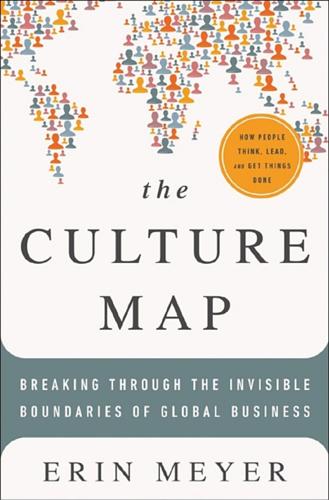
The Culture Map: Breaking Through the Invisible Boundaries of Global Business
by
Erin Meyer
Published 26 May 2014
TRUSTING As you look at the Trusting scale you see the United States positioned far to the left while all BRIC countries (Brazil, Russia, India, and China) fall far to the right. When it comes to building trust, the center of gravity in the global business world has fundamentally shifted over the past fifteen years. Previously, managers working in global business may have felt themselves pulled toward working in a more American manner, because the United States dominated most world markets. Building trust in a task-based fashion was therefore one of the keys to international success. But in today’s business environment, the BRIC cultures are rising and expanding their reach.
…
At the same time, countries in the southern hemisphere such as Indonesia and Saudi Arabia are growing in global weight. All of these countries lie markedly toward the relationship-based end of the Trusting scale. Today if you are a manager aiming for success at an international level and your work brings you to the BRIC cultures or really anywhere in the southern hemisphere, you must learn how to build relationship-based trust with your clients and colleagues in order to be successful. On the other hand, for those who work frequently in North America, you may be skeptical about the accuracy of the United States on the left-hand side of the Trusting scale.
…
trusting scale and, 171 (fig.), 172 Austria, 178 Authority aura of, 122–123 respect and, 139–140 Bacon, Francis, 97 Bacon, Roger, 97 Bae Pak, 112 Belgium, 96–97, 96 (fig.) Bieber, Justin, 93 Brainstorming, 212 Brazil, 31, 233–235 high-context communication and, 39–41, 39 (fig.), 41 (fig.), 55 trust in, 163–165, 170, 175–176 trusting scale and, 171–172, 171 (fig.) BRIC countries, 171–174, 171 (fig.) Brown, David, 32–34 Buddhism, 110–111 Business, 6, 170 leading scale and, 121–122 philosophy and, 97–101 power distance and, 121–122 practice of clarification, 46–47 relationships outside of, 106 thinking, 111–112 Business culture of Americans, 7–10 of France, 7–10, 123 of Israel, 16–18, 17 (fig.)

The Economics of Enough: How to Run the Economy as if the Future Matters
by
Diane Coyle
Published 21 Feb 2011
With their huge populations, the income advances in the two Asian giants carry real weight in the global income distribution. But national averages, which look only at inequality between countries are not fully adequate measures given that there is great inequality within many countries—and especially in the rapidly growing countries of Brazil, Russia, India, and China (called the BRICs), which have made such a big difference in the middle parts of the global income distribution.15 Branko Milanovic reports that about two-thirds of global inequality currently is due to differences in income levels between countries, a big shift from the nineteenth-century pattern, when only 15 percent of measured inequality was due to national differences, and 85 percent due to income inequality within countries.16 Another way of assessing inequality suggested by this pattern is to look at what has happened to individual incomes across the world.17 The incomes of the Forbes Rich List have soared massively ahead of those of people living in the poorest African countries whose economies have been shrinking.
…
See also psychology Bell, Daniel, 230, 235–36 Bentham, Jeremy, 31 Berlin Wall, 182, 226, 239 Bhutan, Kingdom of, 40 Biswas–Diener, Robert, 48 Blackberry phones, 205 black markets, 225 Blake, William, 27 Blinder, Alan, 133, 224 Blueprint for a Safer Planet (Stern), 29 Bono, 194–96, 308n13 bonuses: bankers and, 87–88, 115, 139, 143–44, 193, 221, 223, 277–78, 295; as essential, 88; halting of, 278; lobbyists and, 87–88; penal tax on, 278; policy recommendations for, 277–79, 295–96; reform and, 295 boom–bust cycles, 4, 277, 280, 283; fairness and, 136–37; happiness and, 22, 28; posterity and, 93, 102, 106–9; trust and, 145, 147; values and, 213, 222–23, 233 Booth, Charles, 131 Boskin Commission, 37 Bové, José, 27 Bowling Alone (Putnam), 140–41 Boyle, James, 196 Brazil, 63, 65, 123 BRICs (Brazil, Russia, India, and China), 123, 160, 164, 176–77 British National Health Service, 247 British Social Attitudes, 140–41 Bronk, Richard, 28 Brown, Gordon, 93 Brundtlandt Report, 77 bubbles, 3, 26, 223, 228, 301n1 Buchanan, James, 220, 242 Bundesbank, 99 Burry, Michael, 86 Bush, George W., 127–28 Calculus of Consent, The: Logical Foundations of Constitutional Democracy (Buchanan and Tullock), 242 call centers, 131, 133, 161 Cameron, David, 288 capitalism: China and, 234; communism and, 96, 182–83, 209–13, 218, 226, 230, 239–40; community and, 27, 51, 65, 117–18, 137, 141, 152–54; cultural effects of, 25–29, 230–38; current crisis of, 6–9; democracy and, 230–38; Engels on, 14; fairness and, 134, 137, 149; growth and, 268, 275, 290, 293, 297; happiness and, 25–29, 33, 45, 53–54; historical perspective on, 3, 6, 14; institutions and, 240; market failure and, 226–30; Marx on, 14; measurement and, 182; mercantile economy and, 27–28; nutrition and, 10; profit–oriented, 18; Protestant work ethic and, 13–14; protests against, 211–13; rethinking meaning of, 9; social effects of, 25–26; values and, 209–13, 218, 226, 230–32, 235–36; well-being and, 137–39 carbon prices, 70–71 celebrities, 33 charitable giving, 33, 141 Checkpoint Charlie, 147 China, 161, 262, 280; capitalism and, 234; carbon emissions and, 63; changed demographic structure of, 90; convergence and, 122; declining population in, 98; energy use in, 63, 65; global manufacturing and, 149; inequality and, 125–26; Mao and, 10; middle class of, 125–26; as next major power, 94; one–child policy and, 95–96; population growth and, 95–96; purchasing power parity (PPP) and, 306n19; rise in wealth of, 81, 122–23, 125, 212; savings and, 87, 94, 100, 108; wage penalties and, 133; World Bank influence and, 163 cities, 308n29; face-to-face contact and, 165–68; size and, 165–66; structural changes in, 165–70; urban clustering and, 166 City of London, 147, 221 Clemens, Michael, 81 climate change, 5–7, 17, 24, 90, 238; carbon prices and, 70–71; Copenhagen summit and, 62, 64–65, 68, 162, 292; domestic dissent and, 66–71; future and, 75–83; geological history and, 69; global warming and, 57, 64, 66, 68; greenhouse gases and, 23, 29, 35, 59, 61–63, 68, 70–71, 83; Himalayan glaciers and, 66–67; incandescent light bulbs and, 59–60; InterAcademy Council and, 66–67; Intergovernmental Panel on Climate Change (IPCC) and, 59, 66–69, 82, 297; Kyoto Protocol and, 62–64; lack of consensus on, 66–71; Montreal Protocol and, 59; policy dilemma of, 58–62; policy recommendations for, 267, 280, 297; politics and, 62–65; social welfare and, 71–75; technology and, 59–60, 198 Coachella Value Music Festival, 197 Cobb, John, 36 Coca Cola, 150 coherence, 49 Cold War, 93, 112, 147, 209, 213, 239, 252 Collier, Paul, 77–78, 80, 82 Commerzbank, 87 Commission on the Measurement of Economic Performance and Social Progress, 37–38 communism: Berlin Wall and, 182, 226, 239; capitalism and, 96, 182–83, 209–13, 218, 226, 230, 239–40; Cold War and, 93, 112, 147, 209, 213, 239, 252; fall of, 209–13, 226, 239–40, 252; Iron Curtain and, 183, 239, 252; Leipzig marches and, 239; one-child policy and, 95–96; Velvet Revolution and, 239 community: civic engagement and, 140–41; globalization and, 148–49; intangible assets and, 149–52, 157, 161 (see also trust); public service and, 295; Putnam on, 140–41, 152–54 commuting, 45–47 Company of Strangers, The (Seabright), 148–49, 213–14 comprehensive wealth, 81–82, 202–3, 208, 271–73 consumerism, 22, 34, 45, 138 consumption: conspicuous, 11, 22, 45, 236; consumerism and, 22, 34, 45, 138; cutting, 61; downgrading status of, 11; downshifting and, 11, 55; Easterlin Paradox and, 39–44; global per capita, 72; of goods and services, 7, 10, 24, 35–36, 40, 82, 99, 161, 188, 191, 198, 214, 218, 228–29, 282; green lifestyle and, 55, 61, 76, 289, 293; growth and, 280, 295; happiness and, 22, 29, 40, 45; hedonic treadmill and, 40; increasing affluence and, 12; institutions and, 254, 263; Kyoto Protocol and, 63–64; measurement and, 181–82, 198; missing markets and, 229; natural resources and, 8–12, 58, 60, 79–82, 102, 112, 181–82; nature and, 58–61, 71–76, 79, 82; posterity and, 86, 104–5, 112–13; reduction of, 105; Slow Movement and, 27; trends in, 138; trilemma of, 13–14, 230–36, 275; values and, 229, 236 convergence, 5, 122 Copenhagen summit, 62, 64–65, 68, 162, 292 Crackberry, 205 Crafts, Nicholas, 156–57 credit cards, 2, 21, 136, 138, 283 Csikszentmilhalyi, Mihaly, 45–49 Cultural Contradictions of Capitalism, The (Bell), 230, 235–36 Czechoslovakia, 239 Daly, Herman, 36 Damon, William, 48 Dasgupta, Partha, 61, 73, 77–78, 80, 82 David, Paul, 156 Dawkins, Richard, 118 debit cards, 2 decentralization, 7, 159, 218, 246, 255, 275, 291 defense budgets, 93 democracy, 2, 8, 16, 312n19; capitalism and, 230–38; culture and, 230–38; fairness and, 141; growth and, 268–69, 285–89, 296–97; institutions and, 242–43, 251–52, 262; nature and, 61, 66, 68; posterity and, 106; trust and, 175; values and, 230–35 Denmark, 125 Dickens, Charles, 131 Diener, Ed, 48, 49 Discourse on the Origin and Basis of Inequality among Men (Rousseau), 114 distribution, 29, 306n22; Asian influence and, 123; bifurcation of social norms and, 231–32; consumerism and, 22, 34, 45, 138; Easterlin Paradox and, 39–44; fairness and, 115–16, 123–27, 134, 136; food and, 10, 34; of goods and services, 7, 10, 24, 35–36, 40, 82, 99, 161, 188, 191, 198, 214, 218, 228–29, 282; income, 34, 116, 123–27, 134, 278; inequality and, 123 (see also inequality); institutions and, 253; measurement and, 181, 191–99, 202; paradox of prosperity and, 174; policy recommendations for, 276, 278; posterity and, 87, 94; trust and, 151, 171; unequal countries and, 124–30; values and, 226 Dorling, Danny, 224, 307n58, 308n34 Douglas, Michael, 221 downshifting, 11, 55 downsizing, 175, 246, 255 drugs, 44, 46, 137–38, 168–69, 191, 302n47 Easterlin, Richard, 39 Easterlin Paradox, 39–44 eBay, 198 Economics of Ecosystems and Biodiversity project, The (TEEB), 78–79 economies of scale, 253–58 Economy of Enough, 233; building blocks for, 12–17; first ten steps for, 294–98; growth and, 182; happiness and, 24; institutions and, 250–51, 258, 261–63; living standards and, 13, 65, 78–79, 106, 113, 136, 139, 151, 162, 190, 194, 267; Manifesto of, 18, 267–98; measurement and, 182, 186–88, 201–7; nature and, 59, 84; Ostrom on, 250–51; posterity and, 17, 85–113; values and, 217, 233–34, 238; Western consumers and, 22 (see also consumption) Edinburgh University, 221 efficiency, 2, 7; evidence–based policy and, 233–34; fairness and, 126; Fama hypothesis and, 221–22; happiness and, 9, 29–30, 61; institutions and, 245–46, 254–55, 261; limits to, 13; nature and, 61–62, 69, 82; network effects and, 253, 258; productivity and, 13 (see also productivity); trilemma of, 13–14, 230–36, 275; trust and, 158–59; values and, 210, 215–16, 221–35 Ehrlich, Paul, 70 e-mail, 252, 291 “End of History, The” (Fukuyama), 239 Engels, Friedrich, 14 Enlightenment, 7 Enron, 145 environmentalists.
…
The globalization that occurred in the late nineteenth and early twentieth centuries was an exchange of capital for raw materials, usually on favorable terms for the imperial sources of capital. That of the late twentieth and early twenty-first century has been different in character. Although the majority of cross-border trade and investment so far consists of rich countries increasing their economic links with each other, developing countries, especially the BRICs, account for a rapidly growing share of world production and trade. The OECD countries’ share of world GDP declined from 65 percent in 1975 to 55 percent by 2005. During roughly the same period, its share of world exports declined from 73 percent to 67 percent.21 The geographic scope of production has greatly increased, therefore, both in terms of the growth of trade and investment and its geographic distance.
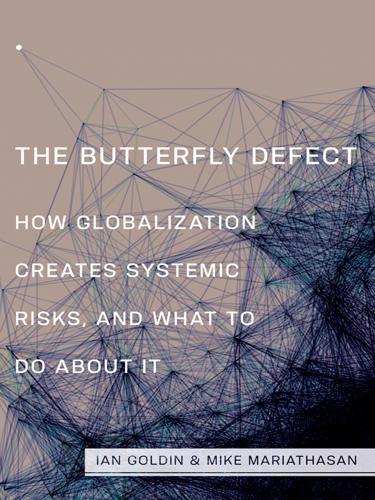
The Butterfly Defect: How Globalization Creates Systemic Risks, and What to Do About It
by
Ian Goldin
and
Mike Mariathasan
Published 15 Mar 2014
Source: Branko Milanović, 2011, “Global Inequality from Class to Location, from Proletarians to Migrants,” Policy Research Working Paper 5820, World Bank, Washington, DC, 15, accessed 3 February 2013, http://www-wds.worldbank.org/servlet/WDSContentServer/WDSP/IB/2011/09/29/000158349_20110929082257/Rendered/PDF/WPS5820.pdf. Used with permission. Figure 7.3. Income distribution, United States versus the BRIC countries, 2005. Based on national household surveys, with people ranked by per capita income or per capita consumption adjusted for price differences between the countries using the most recent purchasing power parity figures. BRIC denotes the emerging market economies of Brazil, Russia, India, and China. Each value on the horizontal axis indicates 5 percent (a ventile) of the population. The value 1 corresponds to the poorest 5 percent, 20 to the richest 5 percent.
…
China, for example, has experienced a moderate but persistent increase in income inequality—as measured by the GINI index—since the 1980s.19 Even India, which has benefited from low and stable levels of inequality over the same time period (with a GINI index hovering around 31.0), exhibits a small increase if the latest (post–financial crisis) data points are included.20 Figure 7.3 highlights some of the within-country income inequalities in the United States as well as in Brazil, Russia, India, and China. Figure 7.2. Economic integration and technological innovations (1980 = 100), 1980–2008. The figure shows the Organisation for Economic Co-operation and Development countries’ averages for developments in trade integration, financial openness, and technologic change and assumes the use of paid workers of working age.
…
Destination cities and corresponding volumes of international passengers arriving from Mexico, 1 March–30 April 2008 157 Figure 7.1. Income inequality in OECD countries, mid-1980s and late 2000s 171 Figure 7.2. Economic integration and technological innovations (1980 = 100), 1980–2008 173 Figure 7.3. Income distribution, United States versus the BRIC countries, 2005 175 Figure 7.4. Global distribution of income and global distribution of income excluding China and India, 1960–2050 178 Figure 7.5. Oil demand and car ownership by income level 184 Figure 7.6. Turnout in elections for the European Parliament (percent), 1979–2009 189 TABLES Table 3.1.
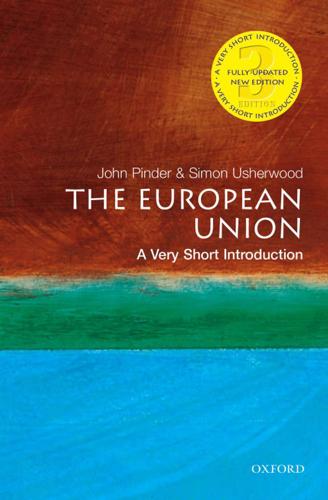
The European Union
by
John Pinder
and
Simon Usherwood
Published 1 Jan 2001
If what follows does not please the reader, it is no fault of theirs. January 2013 John Pinder Simon Usherwood Abbreviations ACP African, Caribbean, Pacific countries AFSJ area of freedom, security, and justice ALDE Alliance of Liberals and Democrats for Europe Benelux Belgium, Netherlands, and Luxembourg BRIC Brazil, Russia, India, and China CAP common agricultural policy CFCs chlorofluorocarbons CFSP Common Foreign and Security Policy CIS Commonwealth of Independent States CJHA Cooperation in Justice and Home Affairs Comecon Council for Mutual Economic Assistance Coreper Committee of Permanent Representatives CSDP Common Security and Defence Policy EAGGF European Agricultural Guidance and Guarantee Fund EC European Community ECB European Central Bank ECJ European Court of Justice (formal title, Court of Justice) Ecofin Council of Economic and Finance Ministers Ecosoc Economic and Social Committee ECR European Conservatives and Reformists ECSC European Coal and Steel Community ecu European Currency Unit (forerunner of euro) EDC European Defence Community EDF European Development Fund EEA European Economic Area EEC European Economic Community EFA European Free Alliance EFD Europe of Freedom and Democracy EFSF European Financial Stability Fund Efta European Free Trade Association ELDR European Liberals, Democrats, and Reformists EMS European Monetary System Emu Economic and Monetary Union ENP European Neighbourhood Policy EPC European Political Cooperation EPP–ED European People’s Party and European Democrats ERDF European Regional Development Fund ERM Exchange Rate Mechanism ESCB European System of Central Banks ESDP European Security and Defence Policy ESF European Social Fund ESM European Stability Mechanism ETS Emissions Trading Scheme EU European Union Euratom European Atomic Energy Community Gatt General Agreement on Tariffs and Trade (forerunner of WTO) GDP Gross Domestic Product GNI Gross National Income GNP Gross National Product GSP Generalized System of Preferences GUE/NGL European United Left/Nordic Green Left IGC Intergovernmental Conference Ind Independent MEP Member of the European Parliament Nato North Atlantic Treaty Organization NTBs non-tariff barriers OECD Organization for Economic Cooperation and Development OLP Ordinary Legislative Procedure OMC Open method of coordination OSCE Organization for Security and Cooperation in Europe PES Party of European Socialists PHARE Poland and Hungary: aid for economic reconstruction (extended to other Central and East European countries) QMV qualified majority voting (in the Council) SEA Single European Act SGP Stability and Growth Pact TACIS Technical Assistance to the CIS TEC Treaty establishing the European Community TEU Treaty on European Union TFEU Treaty on the Functioning of the European Union TSCG Treaty on Stability, Coordination, and Governance in the Economic and Monetary Union UN United Nations UNFCCC UN Framework Convention on Climate Change VAT value-added tax WEU Western European Union WTO World Trade Organization List of boxes 1 The Treaties 2 Structural funds and objectives 3 States’ net budgetary payments or receipts 4 Employment policy 5 Cotonou Convention, 2000–2020 6 EU agreements and links in the Third World, other than Cotonou and ENP List of charts 1 The Union’s institutions 2 Number of MEPs from each state, 2014 3 Party groups in the Parliament in 2012 4 Institutions of economic and monetary policy 5 Share of budget spent on CAP, 1970–2010 6 Breakdown of budget expenditure, 2012 7 Sources of revenue, 2011 8 Shares of world trade of EU, US, China, Japan, and others, 2010 9 How the EU is represented for Common Foreign and Security Policy 10 Direction of EU trade in goods by region, 2010 11 Shares of official development aid from EU, US, Japan, and others, 2011 12 Development aid from EU and member states by destination, 2010 List of illustrations 1 Winston Churchill at The Hague Photo by Kurt Hutton/Picture Post/Hulton Archive/Getty Images 2 Jean Monnet and Robert Schuman © Robert Cohen/AGIP/Rue des Archives, Paris 3 The Schuman Declaration Fondation Jean Monnet pour l’Europe, Lausanne 4 Edward Heath signing the Treaty of Accession Photo by Douglas Miller/Keystone/Getty Images 5 Jacques Delors Credit © European Union, 2013 6 Altiero Spinelli voting for his Draft Treaty Photo: European Parliament 7 European Council, 1979 Photo by Keystone/Hulton Archive/Getty Images 8 Council of Ministers Credit © European Union, 2013 9 European Parliament in session Photo: European Parliament 10 The first meeting of the Commission with President José Manuel Barroso, 2004 Credit © European Union, 2013 11 Court of Justice sitting Credit © European Union, 2013 12 Euro notes and coins Banknotes draft design © EWI 13 Kohl and Mitterrand at Verdun © Bettmann/Corbis 14 The Berlin Wall comes down Photo © Richard Gardner 15 The G8 Summit at Camp David, May 2012 Credit © European Union, 2013 The publisher and the authors apologize for any errors or omissions in the above list.
…
The relative simplicity of the confrontation between the United States and the Soviet Union has been replaced by American supremacy, and with the perspective of an emergent multipolar world in which the US is in the process of being joined by China and, probably later, India as giant powers, while Russia along with other, rising powers must also be taken into account; and the balance of bipolar economic power, with the predominance of the US and the EU, is being rapidly transformed, likewise with the BRIC economies of Brazil, Russia, India, and China, into a multipolar world economy. This is the world in which the EU has to find its place; and as the impact of the Iraq War of 2003 and the gridlocked Doha Round of trade negotiations have demonstrated, it is no simple task. Europeans have generally reached a stage in their history, and particularly in the experience of living peaceably together in the EU, when they greatly value security and predictability in the relations among states, hence favour the creation of a secure multilateral system in the world.
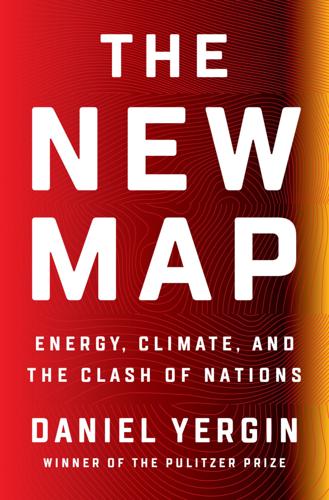
The New Map: Energy, Climate, and the Clash of Nations
by
Daniel Yergin
Published 14 Sep 2020
But later in the year and into 2004, that price, along with that of other commodities, began to rise—and kept rising. This signaled a momentous change in the world economy, the entry into the era of the BRICs—Brazil, Russia, India, and China. What had been known as “developing countries” were transmogrified into “emerging markets” by powerful forces—high economic growth, world trade, more open markets, technology and communications, the collapse of the Soviet Union, the opening of China and India, global supply chains, and the overriding power of globalization.4 The growth of the BRICs was dramatic. Between 2003 and 2013, China’s economy grew more than two and a half times over; India’s more than doubled.
…
Between 2003 and 2013, China’s economy grew more than two and a half times over; India’s more than doubled. The world economy grew by just 30 percent, the United States by 17 percent, Europe by 11 percent, and Japan just 8 percent. This BRIC era was characterized by what became known as the “commodity supercycle”—high and rising prices for oil, copper, iron ore, and other commodities driven by strong economic growth in those countries. During the BRIC era, it was this growth in demand, particularly from China, that became the defining factor for the world oil market. In response to the supercycle and rising commodity prices, companies dramatically stepped up their investments to produce more commodities.
…
On the panel on “Natural Resources and the Commodity Supercycle,” CEOs of the world’s largest mining companies absolutely agreed—no end was in sight; the commodity supercycle could only continue and prices would continue to rise; and therefore their companies would continue to add capacity, buy assets, and spend ever-larger sums of money. Yet by that time the supercycle was already ending. Economic growth in the BRICs was slowing, and that meant a slowing in the growth of consumption of oil and other commodities. Demand and the BRICs would no longer be the defining factors for world oil. The defining factor was now U.S. shale. Other countries were adding new supplies, notably Canada, Russia, Brazil, and Iraq. But dominating the growth was shale—by far. The United States was now on track to become one of the Big Three of world oil, along with Russia and Saudi Arabia.
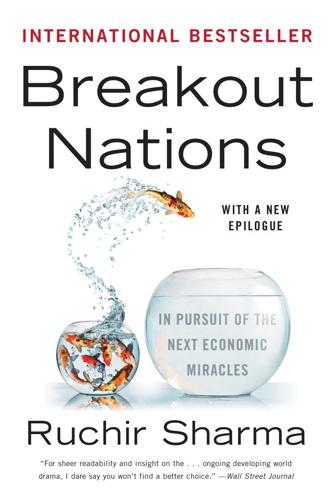
Breakout Nations: In Pursuit of the Next Economic Miracles
by
Ruchir Sharma
Published 8 Apr 2012
However large the impact of digital technology will be on economic productivity (and I believe it will be significant), it is likely to be disproportionately large in the leading economies, particularly the United States. As wages rise in emerging nations, they are starting to automate and digitize their manufacturing plants, but nations like Brazil, Russia, India, and China remain well below the global average on automation measures, such as number of robots per employee. The hot new thing is machines that can “print” a three-dimensional product, including anything from a machine tool part to a mobile phone case—straight from a digital image. And all of the top-fifteen companies that make 3D printers are based in the United States, Europe, and Japan.
…
To take a simple measure, through the first six months of 2011 in the top-ten emerging stock markets, the weakest returns came in India, down 9 percent, and the best came in Indonesia, up 13 percent. This 22-percentage-point gap was unusually narrow, a clear indicator of herd behavior. In 2012, the gap climbed to 64 percentage points, with Brazil down 3 percent and Turkey, still a model for economic normalcy in the Muslim world, up 61 percent. Broken BRICS All of the BRICS economies are slowing sharply. China is on track to see its GDP growth fall well below the 8 percent target that Beijing had maintained for many years. The country’s slowdown is in turn taking the wind out of economies that set sail in the last decade by selling commodities to China, particularly Russia and Brazil, where GDP growth rates have slipped to 3.5 percent and 1 percent, respectively, in 2012.
…
In this slower and more volatile world, the growth rates of countries and companies will start to diverge, so the Third Coming will be about understanding emerging markets as individual nations. This is as true in politics as economics. For example, the concern in the West over the rise of the major emerging markets as a political bloc, coming together in BRICS-type summits, is greatly exaggerated. The core of this group—Brazil, Russia, India, China, and South Africa—consists of nations with competing political interests. They are a group of commodity exporters versus importers, and trade links among them are surprisingly limited; although China has rapidly growing trade and financial links with the other four, those four don’t do much business with one another.
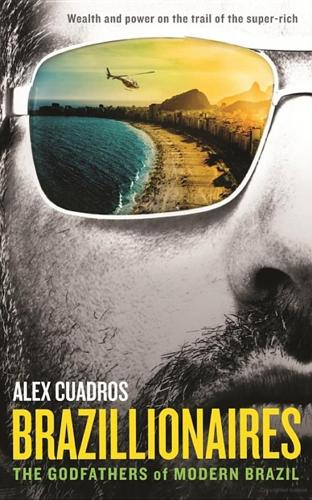
Brazillionaires: The Godfathers of Modern Brazil
by
Alex Cuadros
Published 1 Jun 2016
So he bought the rights to some iron ore deposits, put them into a company with the bland name MMX Mineração & Metálicos, and decided to hold an IPO—an initial public offering of stock. When he went to the bankers at Credit Suisse and Pactual, a local investment house, they had two good reasons to listen to him. One, investors were all excited over the BRICs. A Goldman Sachs economist had come up with this acronym to describe the four countries—Brazil, Russia, India, and China—that he saw as the new motors of the world economy. But few Brazilian companies had shares listed on an exchange, so there was a lot of unmet demand for vehicles to invest in the country. The other reason to listen to Eike was that he put his famous dad on MMX’s board.
…
BY EARLY 2010, EIKE had taken five companies public in as many years: MMX Mineração (mining), LLX Logística (ports), MPX Energia (power plants), OGX Petróleo (oil), and OSX Brasil (oil platforms). He called his group EBX—his initials plus the indispensable X. He said it stood for wealth multiplication. And indeed, as his share prices rose, each offering added billions of dollars to his fortune. Whatever investors wished for, Eike came up with an answer. With the rise of the BRICs, people talked about the potential for “South-South trade.” The problem was that Brazil’s infrastructure lagged way behind the needs of a first-rate economy. At the port of Santos, where Lula had sold peanuts on the docks as a kid, container ships idled for hours waiting for a berth. Truck drivers delivering Mato Grosso soy could line up so long that they set up hammocks between their rigs.
…
See also Brazilian economy; specific governments; specific societal subjects American companies owned by Brazilians, xv American ideas of wealth in, xvi, 22 archetypal Brazilian, 48–49 bureaucracy and basic services, 10–11 complexo de vira-lata (mutt complex), 16, 98, 227, 260 contradiction of, 107 coup of 1964, 86, 95 culture, 4, 11–12, 22, 30, 50, 256 culture of corruption, xvii, 50–51, 54–55 culture of gambiarra, 148 debate about national progress, 13–14 flag of, 38 independence, 49–50 infrastructure problems, 144, 226, 260 labor laws, 21, 83 lack of Protestant ethic, 199–200 language, 8, 59 meritocracia and, 193, 194, 206, 207 migrant workers in, 45 national problems, 13–14, 37, 226 novos ricos, 143 oligarchy of, 48, 160 os anos de chumbo (years of lead), 44 outsider tradition in, 127–30 panelaço protests, 271 political apathy in, 96–97 population, xv, 11, 58, 98 Portuguese land grants, 49 protests of 2013, 231–36, 254–55, 258 protests of 2015, 271–72 Rabo preso (tied tail), 50 Republic of 1889, 129 rich’s preferential treatment, xiv, 49 “rouba mas faz” attitude, 37, 46–47, 56, 89, 270 soccer and, 236–37 thirteenth salary, 39, 118 tradition of wealth, 22 two routes to wealth in, 32 words for tricks and cheats, 50 Brazilian Congress anti-corruption laws, 2013, 235–36 Brazilian Senate building, 64 constitutional amendment to allow donations by companies, 275 corruption in, 33, 293n54 inquiry into Petrobras, 274–75 Brazilian Dream, 161, 170, 207–8, 257 Brazilian economy, 9, 151–56 Belíndia to describe, 12, 21, 129 bubble worries, 144, 244, 281, 286 buying on installments (parcelado), 21 Collor Plan, 92, 298n92 consumer debt, 252 consumer spending, 21–22, 80, 183 corruption’s effect on, 51 credit buying vs. cash, 19 currency of, 18, 21, 260, 300n108 custo Brasil, 21, 51 desenvolvimentismo, 44, 183 Dilma and, 223 Eike’s bubble, 286 as export leader, xv, 4, 59 foreign investment, 9, 14, 16 GDP, 44, 45, 288nxiv GDP losses, lucro Brasil, 51 history of patronage, 49–50 import tariffs, 21 inflation, 21, 92, 183, 226 interest rates, 19, 23, 172, 183 land ownership by the one percent, 59 Lula years, easy credit, 183 materialism and, 15, 257 middle class or classe C, 80–81, 97, 183, 226, 257, 272 military dictatorship and, 44–45 monopoly and, 81 monthly minimum wage, 25 national debt, 183, 269 1970s, 12 opportunity cost, 238–39, 242 patrimonialismo, 50, 71, 177, 280 public works and, 56–57 as rigged, 208 size of, 288nxiv stagflation, 260 Standard & Poor’s rating, 9, 271 startups in (see entrepreneurship) state supported business, 176–77 unemployment, 226 wealth inequity, xiv, xv, 45, 213–14, 284 wealth tax proposal, 55, 95, 269 BRICs, 137, 144 British Virgin Islands, 35 Brizola, Leonel, 313n234 B Team, 213 BTG Pactual, 218, 219–20, 221, 222–23 Buarque, Chico, 48 Buarque de Holanda, Sérgio, 48–49, 199, 200, 201 Budweiser, xv, 192 Buffett, Warren, 26, 156, 193, 197, 199, 203, 204, 205–6, 210, 310n209 Bunge, 62 Burger King, xv, 192, 209, 212 Burle Marx, Roberto, 86 Businessweek website, 211–12 BuzzFeed, 262 Cabral, Sérgio, 171, 184–85, 225, 226, 227, 240, 306n171 cachaça (alcohol), 13, 14, 18, 258 Cairu, José da Silva Lisboa, Viscount of, 176 Caixa (state bank), 290n40, 297n84 Caldeira, Jorge, 174 Camargo, Dirce, 52, 53, 289n35, 292n52, 293n53 Camargo, Sebastião, 31, 39, 42–44, 46, 69, 84, 160, 280, 292n47, 294n69 character of, 48, 90 construction of Brasília, 47–48 daughters of, 43, 52 death of, and accolades, 48 favorite project, 47 luxuries and lifestyle, 43, 53 military dictatorship and Oban, 42–44, 53, 291n42 nicknamed “China,” 43 “o homem dos relacionamentos,” 46 partnership with Barros, 46–47 politics and contracts, 43, 46–48 Rio-Niterói Bridge, 44, 292n45 Ultragaz venture, 42–43, 291n42 wealth of, 90 Camargo Corrêa, 30, 32, 39, 42, 46, 125, 228–29 Belo Monte dam and, 67, 71, 72, 273 Brasília construction, 63 bribes and, 39, 273 campaign donations, 54, 171, 293n54 Carwash and, 51, 270–71 founding of, 46 immunity deal, 274, 316n274 Limoeiro Dam, 47 Olympic Games construction, 274 politics and contracts, 43–44, 46, 47, 55, 292n45 size and worth, 52 toll bridge built by, 53, 293n53 Transamazônica highway, 68–69 Tucuruí dam, 72 warning to author, 52–53 World Cup 2014 construction and, 238 Camargo family, 52, 53 campaign donations, 53–54, 63, 275, 285TK, 293n54, 317n275.
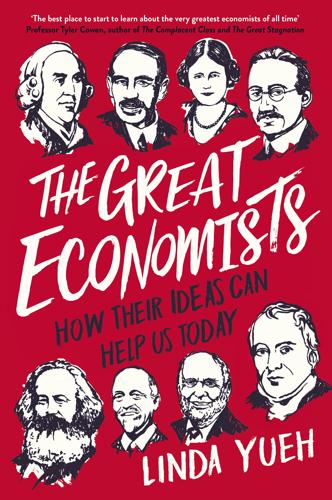
The Great Economists: How Their Ideas Can Help Us Today
by
Linda Yueh
Published 15 Mar 2018
Its average income during the 1980s was less than $3,000 per capita, which ranked it as a lower middle-income country. By the 2010s, a couple of decades after the end of apartheid, incomes had doubled and propelled South Africa to become an upper-middle-income country. And it became part of the BRICS, the ‘S’ to Brazil, Russia, India and China. South Africa is one of the five large emerging economies highlighted by financial markets. Its popularity with investors seeking higher returns signalled its arrival as one of the new players in the global economy. This is not to suggest that South Africa doesn’t have challenges.
…
Minsky Conference on the State of the US and World Economies – ‘Meeting the Challenges of the Financial Crisis’; www.frbsf.org/our-district/press/presidents-speeches/yellen-speeches/2009/april/yellen-minsky-meltdown-central-bankers/ Yergin, Daniel and Joseph Stanislaw, 1998, The Commanding Heights: The Battle Between Government and the Marketplace that is Remaking the Modern World, New York: Free Press Yueh, Linda, 2010, The Economy of China, Cheltenham: Edward Elgar ———, 2011, Enterprising China: Business, Economic, and Legal Developments Since 1979, Oxford: Oxford University Press ———, 2013, China’s Economic Growth: The Making of an Economic Superpower, Oxford: Oxford University Press Glossary BRIC economies The acronym stands for Brazil, Russia, India and China, a term coined by investment bank Goldman Sachs to identify the large emerging markets with good growth potential. current account deficit/surplus The difference between the value of traded goods and services, and portfolio capital, flowing into and out of the country.
…
The British government wants to rely less on financial services, given the banking bust of a few years ago, but manufacturing accounts for only around a tenth of the economy, while the services sector accounts for the bulk of national output. Also, Britain, which until recently exported more to Ireland than to the emerging markets dubbed the BRICs (Brazil, Russia, India, China) combined, wants to reorient more towards developing economies and help its companies access the fastest growing markets in the world. If it is to succeed in this endeavour, it clearly needs to be peddling the right stuff abroad. However, Britain’s trade deficit – the difference between the value of imported and exported goods and services – widened precipitously and hit record highs in the years after 2008.
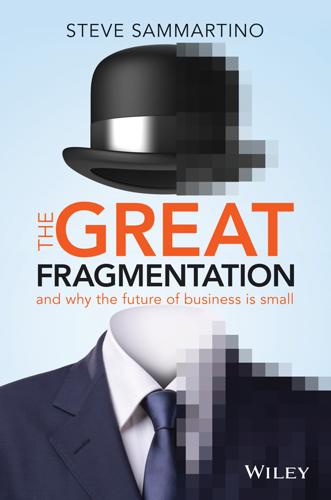
The Great Fragmentation: And Why the Future of All Business Is Small
by
Steve Sammartino
Published 25 Jun 2014
A corporate strategy that relies on growth from selling to developing nations as they industrialise is fraught with short-sighted danger. The speed of development of certain technologies means that industrial methods of production may never eventuate in tomorrow’s non–BRIC countries’ developing economies. BRIC: Brazil, Russia, India and China 3D printing (discussed in detail in chapter 10) has the potential to circumvent manufacturing altogether. Exponential advances in solar, wind and other power-generating technologies may mean that houses will become self-sufficient with regard to their energy needs.
…
But it’s not just knowing where the cheapest price is that will create a further downward pressure; it’s access to lower cost forms of production for all types of work. Economic border hopping We’ve already seen how technology prices are in rapid freefall, but the inputs for labour and manufacturing are also being facilitated via the digital revolution. Anyone can now do what once only the most privileged organisations could through democratised access to BRIC-nations labour. You no longer need some kind of special economic licence, or insight into the local geography, language or even culture, to be able to have work done in emerging markets. Once the domain of big business, now small business and independent entrepreneurs have access to a globalised and digitally connected workforce.
…
The current path of technology is to become cheaper, smaller and more available. Contrary to what the tabloids say, life has never been cheaper. In developed markets wages continue to grow at rates above inflation year on year. Everything is getting cheaper and prices have never been more reasonable in real terms. And this will continue. New access to BRIC-nations labour will add more service providers to the labour market via digital connections enabling everyone — not just large corporations — to border hop and lower the costs of doing business and making things. Sites such as Alibaba will continue to open up low-cost manufacturing to those previously excluded, creating an increased oversupply of everything and forcing prices down.

DarkMarket: Cyberthieves, Cybercops and You
by
Misha Glenny
Published 3 Oct 2011
After the millennium Turkey had become an increasingly attractive venue for hackers, crackers and cyber criminals. In the late 1990s much cyber criminal activity had clustered in certain regions of the so-called BRIC countries. An economist from Goldman Sachs had conferred this acronym on Brazil, Russia, India and China as the leading countries of the emerging markets, the second tier of global power after the G8 (though, politically, Russia straddles the two). The BRICs shared important social and economic characteristics. Their economies were moving and opening after several decades of stagnation. They had large populations whose combined efforts registered huge growth rates, while a resurgence in exuberant and sometimes aggressive nationalism accompanied the transition to the status of dynamic global actor.
…
To meet these aspirations, a minority started beavering away in Internet cafés, safe from detection by law enforcement or indeed anyone else, where they found myriad online opportunities to educate themselves in the art of hacking. Turkey qualified as an honorary BRIC, with an economy that, when compared to Russia’s, for example, looked much more dynamic. The country’s population, at around eighty million, and its growth rates were increasing even faster than those of the acknowledged BRICs. Everyone recognised its strategic importance, nestling against the Black Sea and Mediterranean Sea while bordering Bulgaria, Greece, Iran, Iraq, Syria, Armenia: there is barely a neighbour that hasn’t experienced a major upheaval or war in the past two decades.
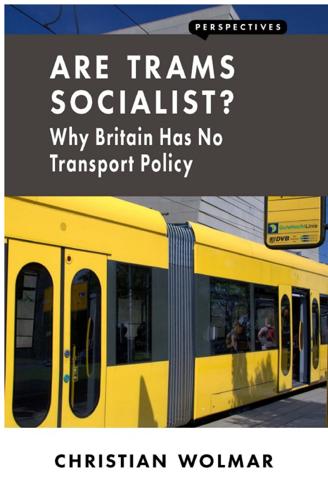
Are Trams Socialist?: Why Britain Has No Transport Policy
by
Christian Wolmar
Published 19 May 2016
Are Trams Socialist? Series editor: Diane Coyle The BRIC Road to Growth — Jim O’Neill Reinventing London — Bridget Rosewell Rediscovering Growth: After the Crisis — Andrew Sentance Why Fight Poverty? — Julia Unwin Identity Is The New Money — David Birch Housing: Where’s the Plan? — Kate Barker Bad Habits, Hard Choices: Using the Tax System to Make Us Healthier — David Fell A Better Politics: How Government Can Make Us Happier — Danny Dorling Are Trams Socialist? Why Britain Has No Transport Policy — Christian Wolmar Are Trams Socialist? Why Britain Has No Transport Policy Christian Wolmar Copyright © 2016 Christian Wolmar Published by London Publishing Partnership www.londonpublishingpartnership.co.uk Published in association with Enlightenment Economics www.enlightenmenteconomics.com All Rights Reserved ISBN: 978-1-907994-57-9 (epub) A catalogue record for this book is available from the British Library This book has been composed in Candara Copy-edited and typeset by T&T Productions Ltd, London www.tandtproductions.com Preface Gothenburg tram.
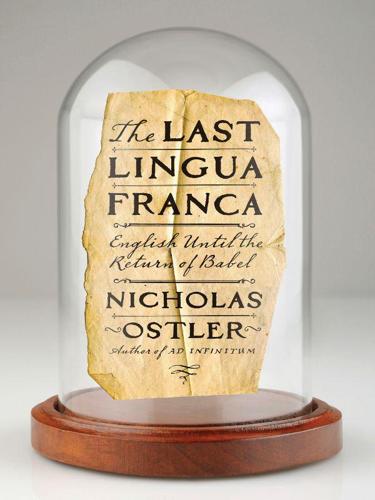
The Last Lingua Franca: English Until the Return of Babel
by
Nicholas Ostler
Published 23 Nov 2010
If the majority powers of the future, memorably termed in a Goldman Sachs report1 the BRIC— Brazil, Russia, India, China—were accepting English as their mother tongue, there might be some truth in this. Such developments have been known in the past, with colonized populations taking up a world language as their own. There is, after all, no going back from Spanish for the vast mestizo population of Central and South America, nor is there any retreat from Russian across Siberia, nor escape from English in Jamaica or Hawaii. But the BRIC are not. At best, they and their neighbors are teaching their children to cope with English as a second language, a lingua-franca.
…
At best, they and their neighbors are teaching their children to cope with English as a second language, a lingua-franca. Long after the anglophone powers’ economic and military dominance around the world has faded, and the initiative for the world’s political and economic decisions has passed to others, the BRIC or whatever other nations are then dominant will retain a prior loyalty to their own national languages. This will be their default code, the medium in which they feel most at ease, and in which their elites can stay in touch with the vast masses of their populations. All these powers have a single dominant official language that is close to the top of the table of languages considered in chapter 10: Portuguese, Russian, Hindi-Urdu, Chinese.
…
Records of the Grand Historian: Han Dynasty I. 2nd ed. New York: Columbia University Press. Watson, W. 1983. “Iran and China.” In Yarshater, ed., 537– 58. Wexler, Paul. 1996. The Non-Jewish Origins of the Sephardic Jews. Albany: State University of New York Press. Wilson, D., and R. Purushothaman. 2003. Dreaming with BRICs: The path to 2050. New York: Goldman Sachs, Global Economics paper 99. Windfuhr, Gernot. 1979. Persian Grammar: History and state of its study. Berlin: Walter de Gruyter. Winternitz, Moriz. 1987. History of Indian Literature. Vols. 1– 20 Delhi: Motilal Banarsidass. Woodard, Roger D., ed. 2004.
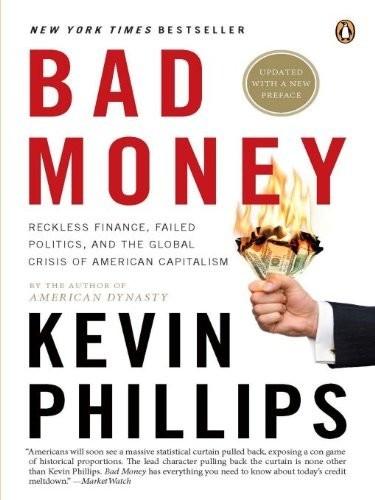
Bad Money: Reckless Finance, Failed Politics, and the Global Crisis of American Capitalism
by
Kevin Phillips
Published 31 Mar 2008
It is not the cause of our wealth, but it is the consequence of our wealth.”3 In fairness to advocates, there is good reason to think that finance in the twenty-first century, somewhat like manufacturing in the late nineteenth, must rise as a share of GNP in major nations. What is unlikely in this 2010-50 framework, to take one example, is that the emerging BRIC group of nations—Brazil, Russia, India, and China—will see the percentage of their GNP represented by finance exceed or even approach the shares represented by their burgeoning manufacturing and extraction industries. Of course, there will be, as in China and the Persian Gulf, major buildups in central bank reserves and sovereign wealth funds earned by high-profile manufactures and oil revenues.
…
Indeed, Westerners also know the history—of London circa 1858, when the city was nicknamed “the Smoke”; of soot-layered Pittsburgh or the Ruhr circa 1908; and of the petrochemical stench enveloping Houston circa 1958 being called “the smell of prosperity.” The BRIC nations—not just China, but also Brazil and India—have every intention of insisting that the nations of the long-since-industrialized West make the contemporary sacrifices, while the current aspirants have two or three decades of opportunity comparable to the West’s from the 1890s through the 1950s. Besides their sense of environmental history, the BRIC states come well armed financially. Of the five largest foreign-currency reserves in the world, three are maintained by China (number one), Russia (number three), and India (number five), and each nation is a big exporter.
…
Fred Bernanke, Ben bailouts of 2008 and inflation and Bernstein, Carl Bernstein, Peter Birah, Fatih Birol, Faith Black, Fischer Bloom, David Bloomberg, Michael Bloomberg/Los Angeles Times polls Bloomberg News Blunt, Roy BNP Paribas Bodman, Samuel Boesky, Ivan Bolivia Bookstaber, Richard Born, Brooksley Boskin, Michael Boskin Commission BP Brandon, Henry Braudel, Fernand Brazil Bretton Woods II BRIC nations Brown, Gordon Brunei Bryan, William Jennings budget deficits Buffett, Warren Buiter, Willem Bulgaria Bullnomics agflation and Chicago School economics and Christian fundamentalists and and debasement of official statistics, see consumer price index definition of EMH ideology and Bull Run: Wall Street, the Democrats, and the New Politics of Personal Finance (Gross), 46 Bureau of Economic Analysis Bureau of Labor Statistics (BLS) Burkle, Ronald Burma Road Bush, George H.
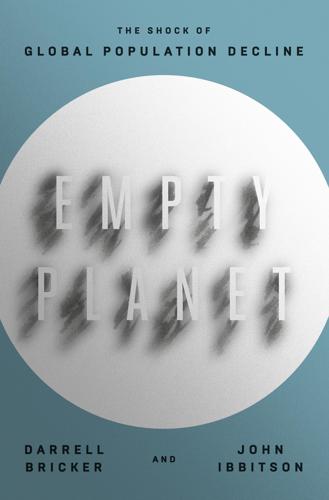
Empty Planet: The Shock of Global Population Decline
by
Darrell Bricker
and
John Ibbitson
Published 5 Feb 2019
Chile, the most democratic and developed state in South America, has found a way forward, Argentina might finally be righting itself after decades of bad government, and for a while it looked as though Brazil might also escape the poverty-and-corruption trap. In 2001, Goldman Sachs’s then chief economist, Jim O’Neill, coined the term BRIC to encapsulate the rising and developing economic powers of Brazil, Russia, India, and China, which he predicted would surpass the old developed economies by 2041. From 2003 to 2011, Brazil was governed by the wildly popular President Luiz Inácio Lula da Silva, who landed the 2014 World Cup and 2016 Olympics for Brazil, while also passing progressive reforms that improved living standards.
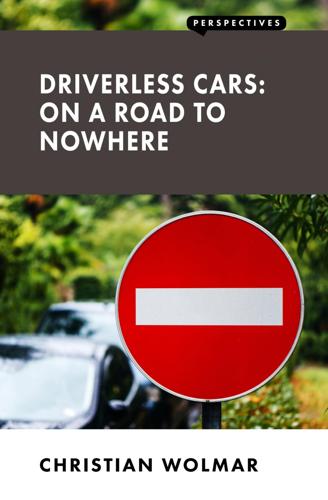
Driverless Cars: On a Road to Nowhere
by
Christian Wolmar
Published 18 Jan 2018
PERSPECTIVES DRIVERLESS CARS: ON A ROAD TO NOWHERE C H RIS TIA N WO L M A R Driverless Cars: On a Road to Nowhere PERSPECTIVES Series editor: Diane Coyle The BRIC Road to Growth — Jim O’Neill Reinventing London — Bridget Rosewell Rediscovering Growth: After the Crisis — Andrew Sentance Why Fight Poverty? — Julia Unwin Identity Is The New Money — David Birch Housing: Where’s the Plan? — Kate Barker Bad Habits, Hard Choices: Using the Tax System to Make Us Healthier — David Fell A Better Politics: How Government Can Make Us Happier — Danny Dorling Are Trams Socialist? Why Britain Has No Transport Policy — Christian Wolmar Travel Fast or Smart?
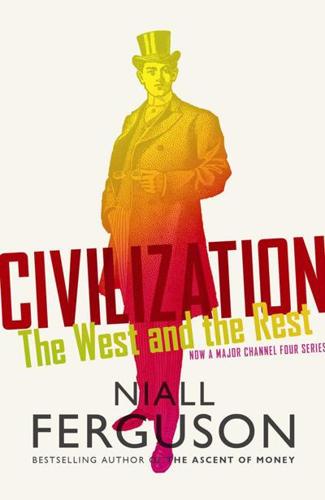
Civilization: The West and the Rest
by
Niall Ferguson
Published 28 Feb 2011
Richard Mayne (New York, 1993) Brownworth, Lars, Lost to the West: The Forgotten Byzantine Empire that Rescued Western Civilization (New York, 2009) Cahill, Thomas, How the Irish Saved Civilization (New York, 1995) Chandler, T., Four Thousand Years of Urban Growth: A Historical Census (Lewiston/Queenstown, 1987) Chaudhary, Latika, Aldo Musacchio, Steven Nafziger and Se Yan, ‘Big BRICs, Weak Foundations: The Beginning of Public Elementary Education in Brazil, Russia, India, and China, 1880–1930’, draft working paper (2010) Clark, Gregory, A Farewell to Alms: A Brief Economic History of the World (Princeton, 2007) Clark, Kenneth, Civilisation: A Personal View (London, 2005 [1969]) Coulborn, Rushton, The Origin of Civilized Societies (Princeton, 1959) Darwin, John, After Tamerlane: The Rise and Fall of Global Empires (London, 2007) Dawson, Christopher, The Making of Europe: An Introduction to the History of European Unity (London, 1932) Diamond, Jared, Guns, Germs and Steel: A Short History of Everybody for the Last 13,000 Years (London, 1998) ———, ‘How to Get Rich: A Talk’, Edge, 56, June 7, 1999 Eisenstadt, S.
…
For a modern review, see Hayes, ‘Statistics of Deadly Quarrels’ and the discussion in Pinker, Better Angels. 16. Kotkin, Armageddon Averted. 17. Guan and Li, ‘GDP and Economic Structure’. 18. Maddison, World Economy. 19. http://gcr.weforum.org/gcr2010/. 20. http://www.conference-board.org/data/economydatabase/. 21. I am grateful to Jim O’Neill at Goldman Sachs for providing me with the relevant dataset. 22. Martin Wolf, ‘Will China’s Rise Be Peaceful?’, Financial Times, 16 November 2010. 23. Population Division of the Department of Economic and Social Affairs of the United Nations Secretariat, World Population Prospects: The 2008 Revision, http://esa.un.org/unpp, 27 November 2010. 24.
…
Diamond, ‘How to Get Rich’. 30. See e.g. Roberts, Triumph of the West. 31. See North, Understanding the Process of Economic Change; North et al., Violence and Social Orders. 32. Clark, Farewell to Alms, pp. 337–42. 33. Rajan and Zingales, ‘Persistence of Underdevelopment’; Chaudhary et al., ‘Big BRICs, Weak Foundations’. 34. Huntington, Clash of Civilizations. 35. Wallerstein, Modern World-System. 36. Huntington, Clash of Civilizations. 37. See e.g. Kagan, Paradise and Power and, more recently, Schuker, ‘Sea Change’. 38. See most recently Osborne, Civilization. 39. Morris, Why the West Rules. 40.
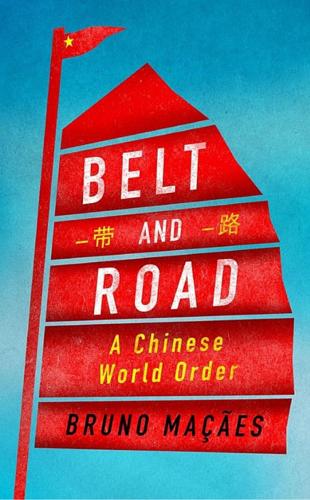
Belt and Road: A Chinese World Order
by
Bruno Maçães
Published 1 Feb 2019
INDEX Abbasi, Zafar Mahmood, 126 Abe, Shinzo, 118, 137 Addis Ababa, Ethiopia, 68 Aden Gulf, 72 Adil, Umer, 60 Advancing the Development of the One Belt, One Road Leading Group, 39 aerospace, 88, 103 Afghanistan, 53, 107, 127, 128, 129, 135, 172 Africa, 3, 8, 25, 44, 124, 163 Djibouti, 4, 12, 46, 63, 67–8, 101, 117 Ethiopia, 46, 68, 154, 170, 186 manufacturing, 68, 77 Maritime Silk Road, 23, 26, 45, 62 oil, 64 Partnership for Quality Infrastructure, 138 piracy, 72 telecommunications, 101, 170–71 aging population, 75 Agricultural Bank of China, 48 agriculture, 11, 61, 76, 99–100, 103 Ahmedabad, Gujarat, 138 aircraft, 81, 91, 103 Akto, Xinjiang, 60 Aktogay, East Kazakhstan, 103 Alibaba, 44 Allison, Graham, 7–8 Alps, 189 aluminum, 17, 20, 88 Andalusia, Spain, 189 Andijan, Uzbekistan, 54 anti-dumping, 92, 113 Antwerp, Flanders, 65 Apollo program, 9 aquaculture, 71 Arabian Sea, 72, 106 Arctic, 4, 62, 66, 188 artificial intelligence (AI), 44, 75, 88 Arunachal Pradesh, India, 111 Asian Development Bank, 45, 137 Asian Financial Forum, 49 Asian Infrastructure Investment Bank, 48 Association of Southeast Asian Nations (ASEAN), 122 Astana International Exchange, 56 Astana, Kazakhstan, 25–6, 39, 56, 58 asteroids, 187 Athens, 8 Atlantic Ocean, 3, 115, 119, 138, 139 Atushi, Xinjiang, 60 Australia, 5, 12, 25, 119, 121, 122, 132–3, 135 automated vehicles, 88, 90, 186, 187, 190 automobile industry, 74, 81, 86, 90–91, 97, 104 Autor, David, 177 aviation, 81, 91, 103 Azad Jammu and Kashmir (AJK), 60 Azerbaijan, 186 Badakhshan, Afghanistan, 128 Baidu, 188 Baldwin, Richard, 74, 80 Balkans, 8, 12, 140 Balochistan, Pakistan, 60, 105 Gwadar port, 46, 59, 61–2, 63, 64, 99–100, 101, 105–7, 117 separatism and terrorism, 106, 127, 128 Baltic Sea, 51 Bangkok, Thailand, 65, 136–7 Bangladesh, 48, 53, 64, 109, 134, 136, 138, 150, 189 Bangladesh-China-India-Myanmar Economic Corridor (BCIM-EC), 52, 62 Bank of China, 48 banking, 46–51 bargaining theory, 152–3 Bay of Bengal, 22, 64, 72, 119 Beijing, China, 20, 28, 48, 126, 165 Beijing University, 183, 188 Belgium, 56, 65 Belgrade, Serbia, 143 Belt, see Silk Road Economic Belt Belt and Road Advancing the Development of the One Belt, One Road Leading Group, 39 backlash against, 12, 108, 121–4, 130–46, 155 bridges, 40, 54, 156, 173, 186 Buddhism, 112 cities, 11, 43, 44, 48, 149–52, 187–8 ‘community of shared destiny’, 26–9, 33, 36, 43, 45, 170 connectivity (wu tong), 42, 43, 52–3, 127, 158, 167 currency integration, 26 data, 44 debt, 12, 46, 47, 108, 109, 124, 126, 130, 132, 153–62 digital infrastructure, 43–4, 59, 86 e-commerce, 44, 59 economic corridors, 2, 11, 51–4, 55, 62 economic policy coordination, 28 energy, 11, 17, 19, 20–23, 40, 46, 48, 49, 52, 61, 64, 86, 92, 188 financing, 11, 36, 46–51, 54, 108–9, 124, 126, 130, 132, 138, 141, 153–64 Forum for International Cooperation (2017), 12, 108, 143, 152 impatience, 152–3 inauguration (2013), 11, 17, 23 industrial capacity cooperation, 85–8 industrial parks, 10, 43, 55, 61, 67, 99, 102 infrastructure, see infrastructure internal discontent, 163 international court, 28, 190 loans, 11, 36, 46–7, 54, 108–9, 124, 126, 130, 132, 138, 141, 153–62, 163 maps, 2–6, 24, 41, 64, 69 Maritime Silk Road, 24, 26, 28, 39, 41 market integration, 41 military bases, 12, 67, 71, 72, 101, 117, 126–7 overcapacity, 19 ports, see ports railways, 9–10, 11, 12, 18, 43, 46, 52, 53–4, 68, 86, 122, 130 roads, 9, 19, 40, 43, 52, 54 security, 127–9 Silk Road, 2, 9–10, 23–6, 45, 82, 138 Silk Road Economic Belt, 24, 25–6, 28, 39, 51–62, 83 success, definition of, 164, 174 telecommunications, 43–4, 52, 86, 101, 170–71 timeline, 10 TIR Convention, 55 transnational industrial policy, 81, 84 transport infrastructure, 9–10, 11, 18, 19, 25, 26, 40, 48, 49, 53–4, 83 urban development, 11, 43, 44, 48, 149–52 Vision and Actions document (2015), 40, 41, 45, 49, 50, 52, 62, 67, 78 Vision for Maritime Cooperation (2017), 62 Bering Strait, 66 Bharatiya Janata Party (BJP), 110 Bhat, Vinayak, 107 Bhutan, 107–8 big data, 44 Bishkek, Kyrgyzstan, 127 Blackwater, 128 blue economic passage, 62 Boao Forum for Asia (2015), 27, 32 Brahmaputra river, 136 Brazil, 174 Brewster, David, 63 BRIC (Brazil, Russia, India and China), 19, 174 bridges, 40, 54, 156, 173, 186 British Broadcasting Corporation (BBC), 188 Budapest, Hungary, 143 Buddhism, 111–12 Bush, George Walker, 169 California, United States, 64 Cambodia, 52, 54, 70, 129, 132, 155 Cameroon, 68, 187 Canada, 136 car industry, see automobile industry Caribbean, 25 Carr, Robert ‘Bob’, 122 Cartagena, Spain, 92 Caspian Sea, 186 Caucasus, 20, 129 CDMA (code-division multiple access), 89 cement, 17, 49–50, 83 Center for Strategic and International Studies, 19, 123 center of gravity, 115 Central African Republic, 186 Central Asia, 9, 20, 25, 51, 52, 82–3, 188 energy, 22, 106 Eurasian Economic Union (EEU), 57–9 India, trade with, 107 industrial capacity cooperation, 104 Islamism, 127 Russia, relations with, 57–9, 129, 133 steel industry, 82–3 terrorism, 127 textile industry, 101 transport infrastructure, 9, 54 Central Huijin Investment, 49, 50 Central Military Commission, 166 century of humiliation (1839–1949), 165, 186 Chabahar, Sistan-Baluchistan, 106–7 Chalay Thay Saath, 60 Chao Phraya River, 65 ChemChina, 48 Chengdu Economic Daily, 129 China Abbasi’s visit (2018), 126 Academy of Information and Communications Technology, 44 aging population, 75 Banking and Insurance Regulatory Commission, 50 Bishkek Embassy bombing (2016), 127 Boao Forum for Asia (2015), 27, 32 Buddhism, 111–12 century of humiliation (1839–1949), 165, 186 Doklam plateau dispute, 107–8, 113 energy, see energy EU-China summit (2015), 138 five-year plan (2016–20), 41 Food and Drug Administration, 114 Foreign Policy Center of the Central Party School, 7 Gants Mod crossing closure (2016), 36 General Navigation Office, 69 ‘Going Out’ strategy, 86 Guangxi Nonferrous Metals Group bankruptcy (2016), 16 Guiding Opinion on Promoting International Industrial Capacity (2015), 86 Guiding Opinion on Standardizing the Direction of Overseas Investment (2017), 86 incremental approach, 7 Indian Dilemma, 21 Institute of International Studies, 92 International Trust and Investment Corporation, 132 Investment Corporation, 48 keeping a low profile (tao guang yang hui), 15, 18, 32 labour shortages, 75 Macron’s visit (2018), 146–7 Made in China 2025 strategy, 85, 87, 90–92, 93 Malacca Dilemma, 21–2, 64, 131 Merchants, 68–9 middle-income trap, 75–7, 85 migrant workers, 75 military, 12, 13, 59, 67, 71, 72, 101, 117, 126–7 minimum wage, 75 Ministry of Commerce, 21, 40, 93 Ministry of Communications, 69 Ministry of Finance, 49 Ministry of Foreign Affairs, 40 Ministry of Industry and Information Technology, 19 Ministry of Transportation, 14 Modi–Xi summit (2018), 135 National Bureau of Statistics, 75 National Congress, 28, 29, 44, 165, 181 National Cybersecurity Work Conference (2018), 84 National Development and Reform Commission, 40, 98 National Health Commission, 114 Opium War, First (1839–1842), 165 overcapacity, 16, 19–20, 88 Overseas Chinese Affairs Office, 19 Overseas Investment Industrial Guiding Policy, 86 People’s Navigation Company, 69 Ports-Park-City model, 67 presidential term limits repeal (2018), 164, 174 real estate market, 16, 75 reform and opening up, 13–15, 73 renminbi, 22–3, 159 responsible stakeholder, 169 shipbuilding, 14, 17 soft power, 111, 170 Soviet Union, relations with, 13, 14, 15 State Administration of Foreign Exchange, 48 State Council, 19, 39, 40, 49, 66, 86 state-owned companies, 42, 153, 160–61, 189 steel industry, 16–17, 18, 20, 82–4, 86, 88 striving for achievement, 18 Swaraj’s visit (2018), 135 Taiwan, relations with, 14, 26, 142 technology transfers, 85–92, 97, 177–8 Thucydides’ trap, 8 Tianxia, 26–7, 29, 31–5, 78, 79, 192–3 TIR Convention, 55 Trump’s visit (2017), 124 ‘two heads abroad’ (liangtou zai haiwai), 17 United States, relations with, see Sino–US relations Working Conference on Neighborhood Policy (2013), 17–18 China Construction Bank, 48 China Development Bank, 16, 48, 49, 97, 98, 99, 103, 160 China Export & Credit Insurance Corp, 104 China Export-Import Bank, 46, 47, 48, 49, 103, 154 China Fantasy, The (Mann), 177 China Global Television Network, 188 China Nonferrous Metals Industry Group, 103 China Three Gorges Corp, 48 China-Indian Ocean-Africa-Mediterranean Sea Blue Economic Passage, 62 China-Indochina Peninsula Economic Corridor, 51, 52, 54, 62 China-Oceania-South Pacific, 62 China-Pakistan Economic Corridor (CPEC), 52, 59, 60, 62, 105–7, 108 Chinese Communist Party Advancing the Development of the One Belt, One Road Leading Group, 39 and Australia, 133 Constitution, 41, 164 founding of (1921), 165 National Congress, 18th (2012), 28 National Congress, 19th (2017), 29, 44, 165, 181 and New Zealand, 132 Politburo, 39, 40, 165 reform and opening up, 13–15 and steel industry, 16 Third Plenum of the 18th Party Central Committee (2013), 39 Chongyang Institute for Financial Studies, 106 Christianity, 128 Churchill, Winston, 183 cities, 11, 43, 44, 48, 149–52, 187–8 climate change, 4, 66, 85, 171 Clinton, William ‘Bill’, 177 cloud computing, 44 CloudWalk Technology, 44 Club Med, 189 CNN, 188 cobalt, 81, 104 Cold War, 2, 14, 21–2, 36, 40, 125, 171 Colombo, Sri Lanka, 156, 162 colonialism, 120, 162 ‘community of shared destiny’, 26–9, 33, 36, 43, 45, 135, 170 Confucianism, 31, 34 Congo, Democratic Republic of, 81, 104 connectivity, 42, 43, 52–3, 109, 122, 127, 146, 158, 167 Connectivity Platform, 139 construction, 18, 75, 86, 98 convergence, 4, 14, 166, 167, 169, 174, 177 copper, 103, 104 corridors, see economic corridors corruption, 133, 155–6, 158, 187 cosmopolitan neighborhoods, 4 Country Garden, 151 Cowboys and Indians, 188 cultural exchanges, 42, 43, 56–7 currency, 22–3, 26, 159–60 customs cooperation, 55, 57, 59, 63 Cyprus, 140 Dalai Lama, 36, 112 Dalian, Liaoning, 55, 93 Daming Palace, Xi’an, 147 Dangal, 111 data, 44 Davidson, Phillip, 125–6 Davos, Switzerland, 168 Dawn of Eurasia, The (Maçães), 185, 191 Dawood, Abdul Razak, 158 debt, 12, 16, 46, 47, 108, 109, 124, 126, 130, 132, 153–62 democracy, 125, 133, 166, 171, 172, 174, 175, 176, 181–3 Democratic Republic of Congo, 81, 104 Deng Xiaoping, 13–15, 18, 31, 32, 69, 73, 183 Diaoyu Islands, 187 digital infrastructure, 43–4 division of labor, 53, 78, 79, 80 Djibouti, 4, 12, 46, 63, 67–8, 101, 117, 186 Doklam plateau, 107–8, 113 Doraleh, Djibouti, 63, 67–8 DP World, 68 dry ports, 57 Dubai, UAE, 62, 68, 160 Dudher Zinc project, 127 Duterte, Rodrigo, 156 DVD (digital versatile disc), 89 e-commerce, 44, 59 East China Sea, 118 economic corridors, 2, 11, 51–4, 55 economic nationalism, 102 economic policy coordination, 28 Economist, The, 190 Egypt, 101 electric cars, 81, 104 electricity, 40, 46, 49, 52, 61, 98, 156, 188 end of history, 36 energy, 4, 11, 17, 19, 20–23, 48, 49, 82, 86, 92, 188 electricity, 40, 46, 49, 52, 61, 98, 156, 188 gas, 21, 22, 40, 52, 64, 72, 106 hydropower, 48 oil, 21, 22, 23, 40, 52, 64, 72, 106 renewable, 21, 187, 188 English language, 111, 188 Enhanced Mobile Broadband coding scheme, 89 Enlightenment, 193 environmental sustainability, 75 Erenhot, Inner Mongolia, 55 Ethiopia, 46, 68, 154, 170, 186 Eurasia, 1–5, 11, 20, 26, 45, 52, 57, 63, 120, 121, 138 Eurasian Economic Union (EEU), 57–9 Eurasian Resources Group, 103 European Commission, 143, 145 European empires, 120–21 European Union (EU), 5, 29, 57, 58, 138–47, 159, 176, 179 and Belt and Road, 10, 12, 30, 138–47 Connecting Europe and Asia strategy (2018), 145–6 and Djibouti, 67 economic policy coordination, 28 5G mobile networks, 43 immigration, 187 steel industry, 17 tariffs, 83 technology transfers, 87–8, 178 transnational framework, 81 Turkey, relations with, 4 Export-Import Bank of China, 46, 47, 48, 49, 103, 154 exports, 15, 17, 19, 79 Facebook, 188 facial recognition, 44, 190 fashion industry, 101 fate, 34 Fergana Valley, 54 fertilizers, 19 fibre-optic connectivity, 101 fifth generation (5G) mobile networks, 43–4, 89 finance, 11, 36, 46–51, 54, 126, 138, 141, 153–64 Financial Times, 10, 63, 143, 154, 157, 158, 159 five-year plan (2016–20), 41 Folding Beijing (Hao), 150 food imports, 76 foreign direct investment, 46, 144–6 foreign exchange, 16, 94, 153 Forest City, Johor, 149–51, 155 France, 11, 96, 129, 141, 144, 146–7, 189 free and open order, 125 free-trade zones, 11, 42, 55–6, 71 freedoms of speech, 172, 189 French Foreign Legion, 129 French, Howard, 13 Frontier Services Group, 128–9 Fu Chen, 129 Fu Ying, 140 Fukuyama, Francis, 184–5 Gabon, 96 Gabriel, Sigmar, 142 Gang of Four, 14 Gants Mod crossing closure (2016), 36 gas, 21, 22, 40, 52, 64, 72, 106 General Navigation Office, 69 generic drugs, 114 Genghis Khan, 2, 25 Georgia, 58 Germany, 11, 65, 80, 87–8, 90, 100, 141–2, 144, 189 ghost ships, 186 Gibraltar, 92 Gilgit-Baltistan, Pakistan, 54, 60, 108 Gland Pharma, 113 glass, 17, 83 Global Energy Interconnection, 188 global financial crisis (2008), 16–17, 85, 161, 178 Global Infrastructure Center, 190 Global Times, 67, 109, 131 global value chain revolution, 74 global warming, 4, 66, 85 globalization, 19, 28, 66, 78, 102, 124, 144, 168, 174, 192 ‘Going Out’ strategy, 86 good governance, 183–4 Google, 152, 188 Goubet, Djibouti, 67 government procurement, 12, 59 Grand Palace, Bangkok, 65 Grand Trunk Road, 53 Greece, 30, 31, 65, 140, 141, 142 GSM (Global System for Mobile communications), 89 Guangdong, China, 28, 75, 151 Guangxi Beibu Gulf International Port Group, 67 Guangxi Nonferrous Metals Group, 16 Guiding Opinion on Promoting International Industrial Capacity (2015), 86 Guiding Opinion on Standardizing the Direction of Overseas Investment (2017), 86 Guo Chu, 33 Gwadar, Balochistan, 46, 59, 61–2, 63, 64, 99–100, 101, 105–7, 117 Hainan, China, 71 Hambantota, Sri Lanka, 46–7, 63, 64, 68, 117, 162 Hamburg, Germany, 65 Hamilton, Clive, 133 Han Empire (206 BC–220 AD), 25 Hao Jingfang, 150 ‘harmonious world’, 33, 36 Havelian, Khyber Pakhtunkhwa, 54 He Yafei, 19, 168 heavy industry, 75, 82 Hebei, China, 83 Heilongjiang, China, 55 Hesteel, 83 high-speed railways, 18, 53–4, 83, 89, 98, 122, 130, 137, 138, 143, 186–7 highways, see roads Hillman, Jonathan, 8 Hobbes, Thomas, 27 Holslag, Jonathan, 189 Hong Kong, 49, 103 Hongshi Holding Group, 49 Horgos, Xinjiang, 55, 55–6, 57 Horn of Africa, 3 Hu Huaibang, 49, 97 Hu Jintao, 21, 33, 70 Hu Xiaolian, 154 Huang Libin, 19 Huangyan Island, 187 Huawei, 89–90, 101, 171 Hub, Balochistan, 127 hukou (household registration), 76 human rights, 141–2, 170, 171, 189 Hun Sen, 155 Hungary, 30, 140, 141, 142, 143, 144 Huntington, Samuel, 184 Hussain, Chaudhry Fawad, 157 hydropower, 48 Ibrahim Ismail, Sultan of Johor, 151 immigration, 187 impatience, 152–3 imports, 17, 19, 22, 79–84 India and the Indian Ocean (Panikkar), 118 India, 3, 5, 64, 105–25, 134–6, 174, 179 Bangladesh Liberation War (1971), 109 and Belt and Road, 11, 12, 52, 72, 105–15, 130, 133 Belt and Road Forum for International Cooperation (2017), 12, 108 British Raj (1858–1947), 107 Buddhism, 111–12 cosmopolitan neighborhoods, 4 cultural mission to China (1952), 113 Doklam plateau dispute, 107–8, 113 economic autarchy, 110, 117 free and open order, 125 Grand Trunk Road, 53 imports, 113–14 and Indian Ocean, 3, 116–19 Indo-Pacific, 116–23, 125 Japan, relations with, 118 Kashmir dispute, 108–9, 117 Malabar naval exercises (2018), 135 and maritime hegemony, 72 migrant workers, 150 military bases, 3, 131 Modi–Xi summit (2018), 135 Mumbai-Ahmedabad high-speed railway, 138 nuclear tests (1998), 109 Pakistan, relations with, 105–7, 108–9, 117, 134 pharmaceuticals, 113, 114 Quadrilateral Security Dialogue, 121–2 Research and Analysis Wing (R&AW), 105–6 and Sabang Island, 131 Siliguri Corridor, 107–8 Southeast Asia, 113, 117–18 Swaraj’s visit to China (2018), 135 Tibet, relations with, 111–12, 117, 136 United States, relations with, 119, 121–2, 134, 135 Indian Dilemma, 21 Indian Ocean, 3, 8, 9, 26, 51, 62, 63, 66, 68, 71–2, 116–19 Indo-Pacific, 116–23, 125, 126 and Japan, 4 Kra Isthmus canal proposal, 65, 186 meticulous selection, 72 Myanmar oil and gas pipeline, 64, 72 oil, 21, 64 and Pakistan, 59, 61, 64 individualism, 27, 189 Indo-Pacific, 116–23, 125, 126 Indo-Pacific Business Forum, 122 Indo-Pacific Command, US, 126 Indochina, 51, 52, 54, 62 Indonesia, 2, 5, 18, 26, 39, 48, 83, 117, 131 Industrial and Commercial Bank of China, 48, 49, 103 industrial capacity cooperation, 85–8, 98, 102–4 industrial internet, 44 industrial parks, 10, 43, 55, 61, 67, 99, 102 Industrial Revolution, 84 information technology, 43–4, 74, 81, 86, 90, 94, 111, 170–71, 190 infrastructure, 3, 23, 26, 30, 40–45, 48, 50, 55, 58, 63, 86, 88, 124, 139, 141, 162, 167, 186 Afghanistan, 135 communications, 81, 118 digital, 43–4 European Union, 10, 141, 145 India, 64, 118, 135 Japan, 4, 136–8 Maritime Silk Road, 66, 67 Mediterranean, 65 Pakistan, 54, 62, 99, 105 Quadrilateral Security Dialogue, 121–2 Southeast Asia, 18–19, 70, 117, 130, 132 steel industry, 18 transportation, see transportation value chains, 96 Xinjiang, 20, 54 Inner Mongolia, China, 55 innovation, 76 Institute for International Finance, 153 intellectual property, 59, 88–9, 91, 97, 180, 190 international courts, 28, 190 international industrial capacity cooperation, 85–8, 98, 102–4 International Monetary Fund (IMF), 15, 156–7, 158–9, 172 Internet, 43–4, 86, 170–71 internet of things, 90, 94 Iran, 4, 22, 105–6 Iraq, 24 Irkeshtam, Xinjiang, 55 iron, 17 Islamabad, Pakistan, 60, 99, 101, 127, 157 Islamic State, 128 Islamism, 127–9 Istanbul, Turkey, 4, 24, 65 Italy, 48, 65, 140, 189 Izumi, Hiroto, 137 Jadhav, Kulbhushan, 105–6 Jakarta, Indonesia, 2, 5, 26, 39 Japan, 1, 5, 22, 123, 133, 136–8, 145, 165, 166, 169, 189 Buddhism, 111 Cold War, 21–2 India, relations with, 118 Indian Ocean, 4 infrastructure development, 4, 136–8 Quadrilateral Security Dialogue, 121–2 Second World War (1937–45), 119, 165 Javaid, Nadeem, 46 Jiang Qing, 14 Jiang Shigong, 183–4 Jiang Zemin, 15 Jiangsu Delong, 83 Jin Qi, 98 Jinnah Town, Quetta, 128 Johor, Malaysia, 149–51 Joint Statement on Cooperation on EEU and Silk Road Projects (2015), 57–8 joint ventures, 97 Journey to the West, 186, 188 Juncker, Jean-Claude, 138 Kaeser, Joe 170 Karachi, Sindh, 59, 100, 105, 106, 127 Karakoram Highway, 54, 60, 64 Kashgar, Xinjiang, 54, 59, 60, 64, 101 Kashmir, 60, 108–9, 117 Katanga, Democratic Republic of Congo, 104 Kaz Minerals 103 Kazakhstan, 8, 55–9, 129, 189 Astana International Exchange, 56 China–EEU free-trade agreement signing (2018), 58 and Eurasian Economic Union, 57 gateway to Europe, 56 Horgos International Cooperation Center, 55–6 industrial capacity cooperation, 103–4 railways, 54 Xi’s speech (2013), 23, 25–6, 39 Kazakhstan Aluminum, 103 keeping a low profile (tao guang yang hui), 15, 18, 32 Kenya, 101, 138, 171 Khan, Imran, 157–8 Khawar, Hasaan, 53 Khunjerab Pass, 101 Khyber Pakhtunkhwa, Pakistan, 54, 60, 100 Kizilsu Kirghiz, Xinjiang, 60 knowledge, 74, 76, 87 Kolkata, West Bengal, 64 Kortunov, Andrey, 135 kowtow, 35 Kra Isthmus, Thailand, 65, 186 Kuala Linggi Port, Malacca, 63 Kuala Lumpur, Malaysia, 130 Kuantan, Pahang, 63, 67 Kudaibergen, Dimash, 57 Kunming, Yunnan, 188 Kyaukpyu, Rakhine, 63, 64, 132, 154 Kyrgyzstan, 53, 54, 55, 103, 127 labor costs, 74, 83, 85, 99 labor shortages, 75 Lagarde, Christine, 158–9 Lahore, Punjab, 100, 157 Laos, 50, 52, 54, 129, 132 Latin America, 25, 187, 188 Leifeld Metal Spinning AG, 88 Lenin, Vladimir, 6, 78 Lenovo, 89–90 Li Hongzhang, 69 Li Keqiang, 44 Li Ruogu, 47 Liaoning, China, 55 liberal values, 123, 125, 133, 170 liberal world order, 141, 144, 167–86, 190, 192 Lighthizer, Robert, 91 lignite, 61 liquefied natural gas (LNG), 48, 66 Lisbon, Portugal, 2, 5 lithium-ion batteries, 81 Liu Chuanzhi, 89–90 Liu He, 92 loans, 11, 36, 46–7, 54, 108–9, 124, 126, 130, 132, 138, 141, 153–63, 190 London, England, 65, 160 Lord of the Rings, The (Tolkien), 1 Lou Jiwei, 76 Luo Jianbo, 7 Machiavelli, Niccolò, 31–4 machinery, 81, 90, 98, 156 Mackinder, Halford, 120 Macron, Emmanuel, 146–7 Made in China 2025 strategy, 85, 87, 90–92, 93 Mahan, Alfred, 120 Mahathir Mohamad, 130–31, 151, 155 Malabar naval exercises (2018), 135 Malacca, Malaysia, 3, 63 Malacca Strait, 21–2, 64, 65, 72, 117, 131 Malay Mail, 155 Malaysia, 3, 70, 117, 130–31, 154 debt, 154 Forest City, 149–51, 155 high-speed railways, 54, 130 Mahathir government (2018–), 130–31, 151, 155 1Malaysia Development Berhad scandal (2015–), 155 ports, 63, 67 Maldives, 134, 155 Mali, 129 Malik, Ashok, 109 Malta, 140 Mandarin, 107, 149, 188 Manila, Philippines, 122 Mann, James, 177 manufacturing, 11, 19, 68, 77, 85, 99 outsourcing, 68, 99 value chains, 3, 43, 64, 73–4, 79–82, 84–5, 94–104, 141 Manzhouli, Inner Mongolia, 55 Mao Zedong, 13–14, 31, 183 maps, 2–6, 24, 41, 64, 69 Maritime Silk Road, 24, 26, 28, 39, 41, 53, 62–72, 117 market integration, 41 Mars, 187 Marshall Plan, 40 Marx, Karl, 6 Marxism, 78 Massachusetts Institute of Technology (MIT), 177 Matarbari port, Bangladesh, 138 matchmaking services, 11 Mattis, James, 124 McMahon Line, 111 Mediterranean Sea, 4, 51, 62, 65, 119 Mei Xinyu, 21 Mekong Delta, 8 mergers and acquisitions, 42 Merkel, Angela, 88, 141, 144 meticulous selection, 72 Middle East, 4, 6, 22, 64, 120, 129, 163, 171 middle-income trap, 75–7, 85 migrant workers, 75 Milanovic, Branko, 173 military, 3, 12, 67, 71, 72, 101, 117, 126–7 Ming Empire (1368–1644), 163 Ming Hao, 30 minimum wage, 75 Ministry of Commerce, 21, 40, 93 Ministry of Communications, 69 Ministry of Finance, 49 Ministry of Foreign Affairs, 40 Ministry of Industry and Information Technology, 19 Ministry of Transportation, 14 Minmetals International Trust Co, 16 mobile payments, 193 Modi, Narendra, 106, 135–6 Mohan, Raja, 3, 121 Mombasa, Kenya, 138 Mongol Empire (1206–1368), 2, 25 Mongolia, 8, 36, 52, 55, 111 Moon, 187 Moraes, Frank, 112–13 Moscow, Russia, 4 Most Favored Nation status, 15 Mozambique, 138 multinationals, 74, 88–9 multipolar world system, 179 Mumbai, Maharashtra, 4, 105, 138 Myanmar, 52, 54, 63, 64, 72, 129, 132, 138, 154 Nacala, Nampula, 138 narcotics trade, 127 Nathan, Andrew, 159 National Aeronautics and Space Administration (NASA), 9 National Bureau of Statistics, 75 National Congress 18th (2012), 28 19th (2017), 29 National Cybersecurity Work Conference (2018), 84 National Development and Reform Commission, 40, 98 National Health Commission, 114 National League for Democracy, Myanmar, 132 National Museum of China, Beijing, 165, 166 National Party of New Zealand, 132 National People’s Congress, 44 National Rescue Party of Cambodia, 155 Nazarbayev University, 25–6 Nehru, Jawaharlal, 113 Nepal, 134, 135, 150 Netherlands, 56, 65 New Zealand, 132–3 Nigeria, 68 Ning Jizhe, 137 Nordin, Astrid, 42 Northern Sea Route, 66 Northwest Passage, 66 NPK fertilizer, 99 nuclear power/weapons, 21, 83, 88, 109, 166, 187 oil, 21, 22, 23, 40, 52, 64, 72, 106 1Malaysia Development Berhad scandal (2015–), 155 One China policy, 142 Open Times, 183 Opium War, First (1839–1842), 165 Organisation for Economic Co-operation and Development (OECD), 79 Osh, Kyrgyzstan, 54 overcapacity, 16, 19–20, 88 Overseas Chinese Affairs Office, 19 Overseas Investment Industrial Guiding Policy, 86 Pacific Command, US, 125–6 Pacific Journal, 71 Pacific Ocean, 3, 5, 9, 26, 45, 62, 116, 117, 125–6, 139 Indo-Pacific, 116–23, 125, 126 Pakistan, 12, 20, 46, 48, 52, 59–62, 64, 98–102, 105, 126–9, 133–4, 155, 156–8 Abbasi’s Beijing visit (2018), 126 agriculture, 99–100 balance of payments crisis, 156–8 Economic Corridor, 52, 59, 60, 62, 105, 108, 156–8 electricity production, 61 fibre-optic connectivity, 101 gateway to the Indian Ocean, 59 Grand Trunk Road, 53 Gwadar port, 46, 59, 61–2, 63, 64, 99–100, 101, 105–7, 117 hydropower, 48 IMF loans, 156–7 India, relations with, 105–7, 108–9, 117, 134 investment, 48 Jadhav arrest (2016), 105–6 Karakoram Highway, 54, 60, 64 Kashmir dispute, 108–9 loans, 46, 54, 156–8 manufacturing, 99 safe city project, 101 Tehreek-e-Insaf, 157–8 television, 101 terrorism, 106, 127–8, 135 textiles, 100 Thar desert, 61 value chains, 98–102 Pakistan-East Africa Cable Express, 101 Pandjaitan, Luhut, 131 Panikkar, Kavalam Madhava, 118 Pantucci, Raffaello, 134 Partnership for Quality Infrastructure, 137–8 patents, 88–9, 190 Pavlodar, Kazakhstan, 103 Peak Pegasus, 93 Pearl River Delta, China, 152 Peking University, 183, 188 Penang, Malaysia, 63 People’s Daily, 57 People’s Liberation Army (PLA), 32, 169 People’s Navigation Company, 69 Pericles, 8 Persian Gulf, 51, 64, 72 Peshawar, Khyber Pakhtunkhwa, 100 petcoke, 103 Petrochina, 103 pharmaceuticals, 113, 114 Phaya Thai Station, Bangkok, 137 Philippines, 19, 70, 117, 122, 156 philosophy, 40, 183 Phnom Penh, Cambodia, 70 phosphate, 19 piracy, 72 Piraeus, Greece, 65 Pirelli, 48 Plato, 150 Poland, 58, 140 Polar Silk Road, 66 Politburo, 39, 40, 165 political correctness, 182 Polo, Marco, 2, 10 Polonnaruwa, Sri Lanka, 156 Pompeo, Michael, 122–3, 157 ports, 9, 10, 12, 19, 36, 40, 46–7, 57, 63–5, 67–9, 96 Chabahar, Iran, 106–7 Doraleh, Djibouti, 63, 67–8 Gwadar, Pakistan, 46, 59, 61–2, 63, 64, 99–100, 101, 117 Hambantota, Sri Lanka, 46–7, 63, 64, 68, 117, 162 Kuala Linggi, Malaysia, 63 Kuantan, Malaysia, 63, 67 Kyaukpyu, Myanmar, 63, 64, 132, 154 Mediterranean, 65 Mombasa, Kenya, 138 Nacala, Mozambique, 138 Penang, Malaysia, 63 Ports-Park-City model, 67 Portugal, 2, 3, 5, 140, 163 power, see energy Prince, Erik, 128–9 property bubbles, 75 protectionism, 102, 114 public procurement, 12, 59 Punjab, Pakistan, 60, 99, 100, 157 Putin, Vladimir, 3, 57 Pyrenees, 189 Qing Empire (1636–1912), 107, 178 Quadrilateral Security Dialogue, 121–2 Qualcomm, 89 Quetta, Balochistan, 128 Raikot, Gilgit-Baltistan, 54 railways, 9–10, 11, 12, 18, 43, 52, 53–4, 57, 68, 83, 86, 89, 98, 100, 135 Addis Ababa–Djibouti, 46, 68 Bangkok–Chiang Mai, 137 Belgrade–Budapest, 143 Djibouti–Yaoundé, 68, 186–7 Islamabad–Gwadar, 60 Kashgar–Andijan, 54 Kuala Lumpur–Singapore, 130 Lahore overhead, 157 Mumbai–Ahmedabad, 138 United States, 122 Yunnan–Southeast Asia, 54 Rawat, Bipin, 108 RB Eden, 92 real estate market, 16, 75 reciprocity, 178–80 Red Sea, 72 reform and opening up, 13–15, 73 Ren Zhengfei, 90 Renaissance, 7 renewable energy, 21, 187, 188 Renmin University, 106 renminbi, 22–3, 159 Rennie, David, 190 Republic (Plato), 150 Research and Analysis Wing (R&AW), 105–6 responsible stakeholder, 169 Rio Tinto, 36 Road Towards Renewal exhibition (2012), 165 Road, see Maritime Silk Road roads, 9, 19, 40, 43, 52, 54, 55, 57, 67, 107–8 robotics, 75, 88, 90 Rogin, Josh, 122 Rolland, Nadège, 188, 190 Ross, Wilbur, 92 Rotterdam, South Holland, 65 Ruan Zongze, 92 rule of law, 28, 109, 111, 183–4 Russia, 5, 51, 52, 55, 133, 134, 139, 174, 175–6, 180, 181 and Central Asia, 57–9, 129, 133 energy, 22, 23 Eurasian Economic Union, 57–9 Eurasianism, 3–4 Joint Statement on Cooperation on EEU and Silk Road Projects (2015), 57–8 Pacific Fleet, 118 and renminbi internationalization, 23 Soviet era, see under Soviet Union steel industry, 82 Ukraine crisis (2013–), 176 Western values, rejection of, 175, 180, 181 Yamal LNG project, 48, 66 Sabang, Indonesia, 131 safe cities, 101, 171 salt, 67, 71 San Francisco, California, 151–2 Saravan, Sistan-Baluchistan, 105 Sargsyan, Tigran, 59 Sassanian Empire (224–651), 4 satellites, 187 second unbundling, 74 Second World War (1939–45), 165 self-driving vehicles, 88, 90, 186, 187, 190 Serbia, 83, 143 Set Aung, U, 132 Shandong University, 163 Shanghai, China, 2, 20, 92 Shanghai Cooperation Organization, 136 Shanghai Fosun Pharmaceutical, 113 Shanghai Pudong Development Bank, 16 Shanghai Stock Exchange, 50, 56, 103 Sharif, Nawaz, 133–4 sharp power, 170 sheet glass, 17, 83 Shenwan Hongyuan Securities, 16 Shenzhen, Guangdong, 28, 151 shipbuilding, 14, 17, 81, 186 Sichuan, China, 149 Siemens, 170 silicon dioxide, 103 Siliguri Corridor, India, 107–8 Silk Road, 2, 9–10, 23–6, 45, 53, 82, 138 Silk Road Economic Belt, 24, 25–6, 28, 39, 51–62, 83 Silk Road Fund, 48, 56, 98 silk, 23–4 Sindh, Pakistan, 59, 60, 99, 100, 101, 105, 106, 127 Singapore, 54, 77, 92, 119, 130, 150, 151, 160 Sino–Myanmar oil and gas pipeline, 64, 72 Sino–US relations, 116, 119, 121–6, 136, 179–80 and Belt and Road, 5–6, 11, 12, 15, 72, 121–4, 130, 136, 168 and Cold War, 14 and foreign exchange reserves, 16 and Indo-Pacific, 116, 119, 121–3, 125, 126 and Kra Isthmus canal proposal, 65 and Malacca Dilemma, 21–2, 64 and maritime hegemony, 70, 72 and Most Favored Nation status, 15 and Pakistan, 157 and reciprocity, 179–80 and reform and opening up, 14–15 and renminbi internationalization, 23 and South China Sea, 70 and steel, 17 Strategic and Economic Dialogue, 39 and Taiwan, 14 and tariffs, 83, 90–94 and technology transfers, 90–92, 178 Thucydides’ trap, 8 and trade deficit, 90, 92 trade war, 92–4, 173 war, potential for, 5, 8, 13, 14 Yangtze River patrols (1854–1937), 165 and ZTE, 94 Sirisena, Maithripala, 155–6 Sistan-Baluchistan, Iran, 105, 106–7 SLJ900/32, 54 Small, Andrew, 59, 158 smart cities, 44, 151–2 Smederevo, Serbia, 83 soft power, 111, 170 solar power, 187, 188 Somalia, 72 Somersault Cloud, 186 sorghum, 92 South Africa, 101 South America, 25, 187, 188 South China Sea, 21, 62, 65, 69–71, 118, 142, 170, 179 South Korea, 1, 77, 96, 97, 128 South Sudan, 186 Southeast Asia, 6, 8, 12, 18, 100, 131–2, 189 Buddhism, 111 China-Indochina Peninsula Economic Corridor, 51, 52, 54, 62 Indo–Chinese relations, 113, 117–18 Kra Isthmus canal proposal, 65, 186 Maritime Silk Road, 26 phosphate market, 19 South China Sea dispute, 21, 69–71, 142, 170, 179 textile industry, 100 Soviet Union, 1, 13, 14, 15, 21–2, 57, 104 soybeans, 90, 93 space travel, 187 Spain, 92, 140, 189 Sparta, 8 Sri Lanka, 12, 46–7, 63, 64, 68, 89, 117, 134, 155–6, 162 Hambantota port, 46–7, 63, 64, 68, 117, 162 Sirisena’s grant announcement (2018), 156 standards, 89–90 State Administration of Foreign Exchange, 48 State Council, 19, 39, 40, 49, 66, 86 state-owned companies, 42, 153, 160–61, 189 steamships, 69 steel industry, 16–17, 18, 20, 67, 82–4, 86, 88 striving for achievement, 18 Stuenkel, Oliver, 167 subprime mortgage crisis (2007–10), 153 Suez Canal, 3, 66, 68, 72, 119 Suifenhe Port, Heilongjiang, 55 Sukkur, Sindh, 99, 101 Sulawesi, Indonesia, 83 Sumatra, Indonesia, 3 Sun Pharmaceuticals, 114 Sun Wenguang, 163 Surkov, Vladislav, 3–4 surveillance, 44, 101, 171, 187, 190 Suvarnabhumi Airport, Bangkok, 137 Swamy, Subramanian, 110 Swaraj, Sushma, 135 Switzerland, 160, 168 Syria, 24 Tadjoura gulf, Djibouti, 67 taikonauts, 187 Taiwan, 14, 142 Tajikistan, 48, 127 Tanjung Pelepas Johor, 150 Tanzania, 138 tao guang yang hui, 15, 18, 32 Taoism, 11, 51 tariffs, 17, 56, 58, 79, 82, 83, 179 Tawang Monastery, Arunachal Pradesh, 111 tax holidays, 61 TBM Slurry, 54 technology transfers, 85–92, 97, 118, 177–8 Tehreek-e-Insaf, 157–8 telecommunications, 43–4, 52, 86, 89–90, 98, 101, 170–71 television, 101 terrorism, 106, 127–9, 135, 171 Texas, United States, 92 textiles, 86, 100–101 Thailand, 18, 54, 65, 83, 89, 129, 132, 136–7, 186 Thakot, Khyber Pakhtunkhwa, 54 Thar desert, 61 Thein Sein, 132 Thilawa special economic zone, Myanmar, 138 throw-money diplomacy, 163 Thucydides’ trap, 8 Tianjin, China, 129 Tianxia, 26–7, 29, 31–5, 78, 79, 192–3 Tibet, 36, 111–12, 117, 136, 189 Tibetan Academy of Buddhism, 112 Tillerson, Rex, 11, 123, 125 timber, 96 Times of India, 109 Tinbergen, Jan, 20 TIR (Transports Internationaux Routiers) Convention, 55 titanium dioxide, 103 Tokyo, Japan, 137 Tolkien, John Ronald Reuel, 1 tourism, 10, 11, 61, 71 trade wars, 92–4, 113–14, 173 trains, 9–10, 11, 12, 18, 43, 46 Trans-Siberian railway, 10 Transatlantic trade, 3, 139 transnational industrial policy, 81, 84 Transpacific trade, 3, 139 transparency, 12, 28, 109, 143, 144, 146, 157, 173, 193 Transpolar Route, 66 transportation, 9–10, 19, 25–6, 48–9, 52–4, 63–4, 81–3, 99, 103, 104, 118, 143, 162, 186 maritime, 63 railways, see railways roads, 9, 19, 40, 43, 52, 54, 55, 57, 67, 107–8 tributary system, 34–5 Trieste, Italy, 65 Trump, Donald, 83, 91, 93, 122, 124, 167, 179 Tsinghua University, 76, 163 Tsingshan Group Holdings, 83 Tumshuq, Xinjiang, 60 Turkey, 4, 24, 65, 82 Turkmenistan, 186 Twitter, 188 ‘two heads abroad’ (liangtou zai haiwai), 17 Ukraine, 11, 82, 176 United Arab Emirates, 62, 68, 160 United Kingdom, 2, 3, 17, 43, 65, 107, 112, 160, 165, 189, 193 United Nations, 29, 55, 72, 142, 172 United States, 1–2, 5–7, 8, 11, 12, 121–6, 161, 166–9, 176, 185–6 Apollo program, 9 Bush administration (2001–9), 169 Camp Lemonnier Djibouti, 68 China, relations with, see Sino–US relations Clinton administration (1992–2001), 177 Cold War, 14 immigration, 187 India, relations with, 119, 121–2, 134, 135 industrial output per person, 193 and International Monetary Fund (IMF), 157 Marshall Plan, 40 midterm elections (2018), 12–13 National Defense Strategy (2018), 116 National Security Strategy (2017), 179–80 Pacific Command, 125–6 Quadrilateral Security Dialogue, 121–2 Senate Armed Services Committee, 124 State Department, 123–4 steel industry, 17 subprime mortgage crisis (2007–10), 153 Taiwan, relations with, 14 Trump administration (2017–), 83, 90–94, 122–4, 167, 179 universal values, 175, 181, 184 Urdu, 128 Urumqi, Xinjiang, 20, 101, 188 Uyghurs, 20 Uzbekistan, 53, 54, 129 value chains, 3, 43, 64, 73–4, 79–82, 84–5, 94–104, 141 vanadium pentoxide, 103 Venice, Veneto, 65 Vietnam, 19, 54, 70, 100, 117, 132 Vision and Actions document (2015), 40, 41, 45, 49, 50, 52, 67, 78 Vision for Maritime Cooperation (2017), 62 Vladivostok, Primorsky Krai, 118 Wakhan corridor, Afghanistan, 128 Wallerstein, Immanuel, 78 Wang Changyu, 112 Wang Huning, 40 Wang Jisi, 31, 76 Wang Yang, 39 Wang Yi, 40, 60, 123 Wang Yingyao, 50–51 Wang Yiwei, 26 Wang Zhaoxing, 50 Warsaw, Poland, 140 Washington Post, 122 Wei Fenghe, 126 Weibo, 188 Weissmann, Mikael, 42 Wenzhou, Zhejiang, 83 West Asia corridor, 51, 52 West Germany (1949–90), 22, 166 Western world, 5, 30, 31, 165–86, 190–93 Asia-Pacific region, 13 Cold War, 1, 2 cultural imperialism, 28 democracy, 125, 133, 166, 171, 172, 174, 176, 181–3 end of history, 36 global financial crisis (2008), 16–17, 161 individualism, 27, 189 liberal world order, 141, 144, 167–86, 190, 192 Machiavellianism, 31–4 market economies, 16 Marxism, 78 polis, 31 rule of law, 183 rules-based order, 11, 35, 179 separation of powers, 182 soft power, 111 standards, 89 technology, 15, 87, 177–8 telecommunications, 101 and Tianxia, 30–34, 78, 192 value chains, 95, 96, 100, 104 values, 123, 125, 133, 167, 175, 177–8 white elephants, 51 Wickremesinghe, Ranil, 47 win-win, 27–8, 33, 37 wind power, 188 Witness to an Era (Moraes), 113 Working Conference on Neighborhood Policy (2013), 17–18 World Bank, 15, 172 World Economic Forum, 168 World Trade Organization, 170, 177 world-systems theory, 78 Wright, Thomas, 174 Xi Jinping, 11, 183 Astana speech (2013), 23, 25–6, 39 Belt and Road Forum for International Cooperation (2017), 152 Boao Forum for Asia speech (2015), 27, 32 and Constitution, 164 Davos speech (2017), 168 Duterte, relationship with, 156 Jakarta speech (2013), 23, 26, 39 Joint Statement on Cooperation on EEU and Silk Road Projects (2015), 57 London visit (2015), 43 Mahathir’s letter (2018), 130–31 Modi, summit with (2018), 135 National Congress, 19th (2017), 29, 181 National Cybersecurity Work Conference (2018), 84 presidential term limits repeal (2018), 164, 174 Road Towards Renewal exhibition (2012), 165 Sirisena, grant to (2018), 156 and state-owned companies, 42, 153 Sun Wenguang’s letter (2018), 163 telecommunications, 43 Trump’s visit (2017), 124 and value chains, 94 Wang Huning, relationship with, 40 and Western democracy, 166, 181 Working Conference on Neighborhood Policy (2013), 17–18 Xi’an, Shaanxi, 24, 28, 147, 188 Xinhua, 24, 41, 64 Xinjiang, 20, 54, 55, 56, 59, 60, 100–101, 128–9, 188, 189 Xiong Guangkai, 32 Xu Jin, 33 Xu Zhangrun, 163–4 Yamal LNG project, 48, 66 Yang Jian, 132 Yang Jiechi, 39, 171 Yang Jing, 40 Yangtze River, 165 Yao Yunzhu, 169–70 Ye Peijian, 187 yuan, see renminbi Yunnan, China, 54, 129, 149, 188 Zeng Jinghan, 181 zero-sum, 27 Zhang Gaoli, 39 Zhang Qian, 25 Zhang Weiwei, 182–3, 184 Zhao Tingyang, 27 Zheng He, 162–3 Zhi Zhenfeng, 84 Zimbabwe, 12, 44 Zoellick, Robert, 169 ZTE, 94, 170–71 Zurich, Switzerland, 160 First published in the United Kingdom in 2018 by C.
…
As He Yafei, vice minister of the Overseas Chinese Affairs Office of the State Council, pointed out in 2014, “one country’s overcapacity can meet another country’s needs.”8 Huang Libin, an official with the Ministry of Industry and Information Technology, explained: “For us there is overcapacity, but for the countries along the Belt and Road, or for other BRIC nations, they don’t have enough and if we shift it out, it will be a win-win situation.” The success of Chinese industry in leading the country’s modernization could be expanded to other parts of the world—starting with infrastructure but moving to manufacturing. China would get new markets for its exports, but in due time it could also import at favorable terms those goods which could no longer be profitably produced at home.
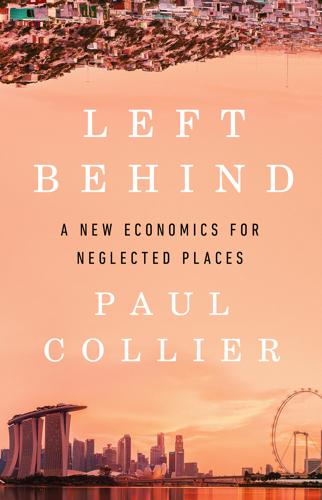
Left Behind
by
Paul Collier
Published 6 Aug 2024
I came to know Presidents Masire and Mogae. As people, they were modest, humorous, and very shrewd. 4 Measured at 2021 Current International Purchasing Power Parity prices, on World Bank data. Mauritius, which is in the Indian Ocean but a member of the African Union, has done even better. The BRICS designation for Brazil, Russia, India, China and South Africa was coined by Jim O’Neill when chief economist at Goldman Sachs in his advice to its clients. 5 D. H. Yanagizawa-Drott (2014) ‘Propaganda and conflict: evidence from the Rwandan genocide’, Quarterly Journal of Economics 129(4) and A. Blouin and S. Mukand (2019), ‘Erasing identity?
…
A professional estimate of the likely social rate of return had to be undertaken and only those projects that met a threshold were approved. It all worked sufficiently well for Botswana to become the fastest-growing economy in the world. It is now the highest-income country in Africa, having overtaken South Africa, once celebrated as one of the fast-rising BRICS.4 It has a well-educated population, a good university, a lovely and well-functioning capital city and a thriving tourist industry. The rise of China When Mao Zedong died in 1976, he left a society that was huge but impoverished. About 60 million people had died as a result of the disastrous strategy known as the Great Leap Forward: China was the global centre of poverty.
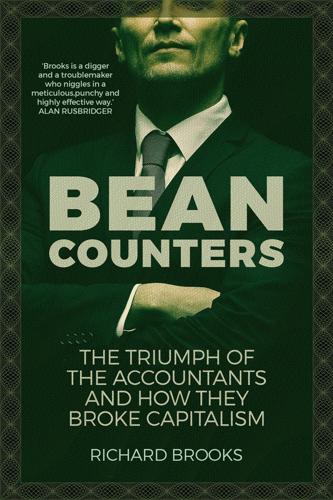
Bean Counters: The Triumph of the Accountants and How They Broke Capitalism
by
Richard Brooks
Published 23 Apr 2018
The later Wikileaks episode would, however, reveal a diplomatic cable stating that the evidence ‘may show that PwC received [Russian government] pressure to disavow its prior Yukos audits’.9 The one certainty is that PwC continued to prosper in Russia, auditing such state-controlled monoliths as Gazprom and Sberbank. As another cable estimated, ‘it is the auditor of firms comprising more than 50% of Russian GDP’.10 Its income from the Russian and Eastern Europe region was already more than $500m a year and growing at around 25% annually.11 The cost of losing a licence in one of the important ‘BRIC’ (Brazil, Russia, India and China) emerging economies, for which there were high economic hopes at the time, would have been serious. Against that, there was little downside to failing to stand up to corrupt regimes. In the words of The Economist magazine at the time, ‘PwC’s volte-face [on the Yukos audits] seems unlikely to hurt it elsewhere in the world because of its federated structure . . .
…
INDEX Abadie, Richard, 189 Aberdeen, Scotland, 48, 70 ABN Amro, 138 Accenture, 71, 256, 272 Accounting Establishment, The, 80 accounting standards, 73, 123–5 aconter, 2 Adelphia, 109, 264 Adidas, 220 Airbus, 214–19 Aislabie, John, 40 algebra, 21, 33, 38 Almond, Steve, 139–40, 148 alumni system, 17 Amazon, 170, 171, 178 American Institute of Certified Public Accountants, 61 American International Group (AIG), 133–5, 144, 145, 148 American Steel and Wire Company, 55 Andersen, Arthur Edward, 72–4, 75, 77, 78 Anglo Irish Bank, 144 Anne, queen of Great Britain and Ireland, 39 antitrust laws, 59, 61, 75 Antwerp, 36 Appleby, 247 Applegarth, Adam, 126 Appleton, Robert, 225 Arabic mathematics, 3, 21–2 ArcelorMittal, 171 Arthur Andersen & Co., 72–4, 75, 77–8, 81, 97, 102–8, 112–13, 188 auditing, 4, 72–4, 85, 97, 102–8, 109, 117 collapse (2002), 5, 7, 11, 90, 108, 110, 121 and computing, 77–8 consultancy, 77–8, 79, 81, 103 and Enron, 4, 7, 11, 74, 102–8, 113, 117 global operations, 234 and HIH, 240 and Labour Party, 184, 188 and Lincoln Savings and Loan, 85 ‘One Firm’ philosophy, 74, 275 and subprime mortgages, 112–13, 116 and Sunbeam, 97 and United States Steel, 62 and WorldCom, 109, 110 Arthur Young & Co., 63, 71, 85–7 asset-backed securities (ABS), 121 Associated Electrical Industries, 66 Aston Martin, 2 AT&T, 109 Atchison, Jack, 85–6 Atlantic Ocean, 39 Atter, Lewis, 197–8 Audit Company of Illinois, 72 auditing, 2, 5, 6, 10–16, 68–9, 79–80, 259–61, 276, 280–84 1960s ‘Go-Go’ era, 63–5, 67 1980s deregulation era, 85–91 1990s/2000s ‘numbers game’ era, 95–110, 114 2007–8 financial crisis, 4, 13–14, 17, 18, 90, 111–50, 210, 241, 256–9, 265 2010s post-crisis era, 259–61 Barnier proposals (2010), 253–5, 280 Davey committee (1894), 52 and class action, 92 Companies Act (1900), 52 competing on price, 79 compulsory rotation, 5 and consultancy, 82, 97–8 and corruption, 211–32 and deregulation, 85–7 expectations gap’, 65, 257 global operations, 235–46 and Joint Stock Companies Acts (1844, 1856), 47, 50 and Levitt, 96–8, 104 limited companies, 13 limited liability, 91–5, 114 Lincoln Savings and Loan, 85–6 Maxwell, 87–8 Medici system, 27 New York Stock Exchange, 55 public, 280–82 and Railway Regulation Act (1844), 45–7 Australia, 48, 51, 127, 170, 240 Avignon, France, 29 Avis Rent-a-Car, 59 Ayrshire, Scotland, 42 Babbage, Charles, 70 BAE Systems, 213–14, 219 Bagley, Gaenor, 268–71 Bahamas, 222, 236 Bain & Co., 263 Bainbridge, Guy, 141 Bank of America, 118 Bank of Credit and Commerce International, 91 Bank of England, 38, 91, 126, 273 Bank of Scotland, 140 Bank of Tokyo-Mitsubishi, 230–31 Bankia, 241 Banking Act (1879), 51 bankruptcy, 30, 45, 46, 49, 50–51 Barclays, 6, 121, 149, 256, 258 Baring Brothers, 92 Barkley, Alben, 58 Barlow, Ian, 181, 182 Barlow Clowes, 89–90, 136, 209 Barnes, David, 258–9, 276, 277 Barnier, Michel, 253–5, 280 Bass, Carl, 105–7 BCCI, 136 Bear Stearns, 121, 139, 145 Belfield, Gary, 192, 193 Benci, Giovanni, 27, 28, 29, 31 Bennett, Robert, 161 Berkshire Hathaway, 135 Bettel, Xavier, 170 Bevis, Herman, 62 Big Bang (1986), 156 Big Eight, 62, 80, 81, 82, 86, 87, 89, 136, 235, 283–4 Big Five, 95, 97, 236 Big Four, 2, 5–21, 110, 114, 283–4 alumni system, 17 auditing, see under auditing business advisory, 114 charity, 16–17 client relationship partners, 12 compulsory rotation, 5 consultancy, 6, 10–12, 114, 183–210, 261–7 and corruption, 211–32 cyber-security, 272–3 export earnings, 6 federal structure, 7–8 and financial crisis (2008), 111–50 global operations, 235–52 governments, advice to, 6, 180, 183–210, 248–50 growth, 9, 10 integrated reporting, 18 key performance indicators, 12 mark-to-model, 124 and media, 7 partners, 8, 11, 14, 15, 16 professional services, 11 recruits, 14–15 revolving door, 206–8, 272 and scandals, 7–8 and securitization, 121–3 tax avoidance, 156–82, 246–8 thought leadership, 12 Big Short, 112 Big Six, 81, 91–3, 95, 235, 236 Big Three, 110, 161 bills of exchange, 25, 26 Birmingham, West Midlands, 43 Bischoff, Winfried, 209 Black, Conrad, 154–5 Black, William, 60–62 Blackbeard (Edward Teach), 39 Blair, Anthony ‘Tony’, 184, 188, 191, 213 Blatter, Joseph ‘Sepp’, 221, 222, 225–8 BLIPS (Bond Linked Issue Premium Structures), 159–62, 181 Blockbuster, 106 Blunt, John, 39, 44 Board of Trade, 45 Book of Disquiet (Pessoa), 1 Book-keeping Methodiz’d (Mair), 53 Booz & Co., 264 Boston Consulting, 191 Boulton, Matthew, 43 Bower, Marvin, 75 Boy Scouts of America, 149 Bradford & Bingley, 141–2, 149 Brazil, 220, 238, 239, 242–3, 246 Breedon, Richard, 154 Brexit, 195, 203–4, 273 bribery, 211–28, 240 BRIC (Brazil, Russia, India and China), 238 Bristol, England, 49 Britannia Building Society, 142 British Academy, 111–12 British Aerospace, 212–14, 219 British Airways, 148 British American Tobacco, 148 British Broadcasting Corporation (BBC), 169, 197, 220 British Empire, 233 British Home Stores (BHS), 260–61 British Virgin Islands, 213, 220, 246 Britnell, Mark, 192–3, 208 Brown, Gordon, 157, 184, 185, 186, 196 Bruges, 31 BT, 149 Bubble Act (1720), 44 Budgetary Control (McKinsey), 74–5 Buffett, Warren, 63, 135 Building Public Trust Awards, 256 Bureau d’Imposition Sociétés VI, 168 Bureau of Supplies and Accounts, US Navy, 77 Burgundy, Duchy of (1032–1477), 31 Bush, George Walker, 98, 114, 145, 253 Bush, Tim, 126, 127, 147 Butler, Stephen, 181 Byrne, Liam, 184 Byzantine Empire (285–1453), 21 Cabinet Office, 200, 201 Cable & Wireless, 215 Caesar, John, 54, 55, 56 Calcutta, India, 233 Cambridge, Cambridgeshire, 194 Cambridge University, 55, 268 Cameron, David, 192, 195, 203 Campaign Against the Arms Trade, 265 Canada, 246 Canary Wharf, London, 256 Cape Coast Castle, Gold Coast, 37 Capita, 201–2 capital, 3 Carell, Steve, 112 Caribbean Football Union, 221, 223, 224, 225 Carnegie, Andrew, 55, 71 Carter, Arthur, 58 Cash Investigation, 168, 171 Caterpillar, 178 Catholic Church, 3, 24–5, 26, 29, 34, 38 Cattles plc., 142 Causey, Rick, 104 Cayman Islands, 104, 164, 214, 239, 246, 247 Celanese, 60 Celler–Kefauver Act (1950), 59, 61 Celluloid Corporation, 60 certified public accountants, 53 CFO, 101, 109 Chaplin, Charlie, 71 Chappell, Dominic, 260 Charles the Bold, Duke of Burgundy, 31 chartered accountancy, 14, 16, 45, 47–8, 49, 53 Chelsea Flower Show, 200 Chicago School, 84–5, 183 Chicago Sun-Times, 154 Chicago, Illinois, 54, 72–4, 101, 105 child labour, 44 China, 17, 111, 204, 238, 243–5, 251–2, 272, 274 China Integrated Energy, 244 Chirac, Jacques, 127 Christianity, 3, 24–5, 26, 34, 35, 38 Catholicism, 3, 24–5, 26, 29, 34, 38 Protestantism, 3, 42, 43 Christoffels, Jan Ympyn, 36 Churchill, John, 1st Duke of Marlborough, 41 Circle Health, 194 Citigroup, 149, 258 City of Glasgow Bank, 51, 147 City of London, 46, 49, 156, 249 Civil Rights Movement, 64 Claridges, London, 122 Clarke, Charles, 207 class-action lawsuits, 64–5, 92 Cleese, John, 15 climate change, 18 CloseMore University, 115 Clowes, Peter, 88–90, 91, 136, 209 Co-operative Bank, 142, 149, 150 Cohen, Manuel ‘Manny’, 80 Cold War, 95 Cole, Margaret, 208 Colin, Bernard, 173 collateralized debt obligations (CDOs), 120–21, 129–30, 133, 136–40, 265 Collier-Keywood, Richard, 182 Collins, Simon, ix, 11, 204, 218, 255–9, 264–7, 276, 277–8, 279 Colombia, 229 colonialism, 37 Comey, James, 161 commercial-mortgage-backed security (CMBS), 121 common accounting standards, 73, 123–5 common law, 39 Companies Act 1862: 51 1900: 52 1929: 58 1948: 66 1989: 93 compulsory rotation, 5 computing, 77–8 Comroad, 240 conflicts of interest, 18, 60, 82, 91, 98, 187, 254–5 Arthur Andersen & Co., 73–4, 78, 105, 277 and Barnier proposals, 254–5 in China, 274 and data, 271 Deloitte, 241 KPMG, 202, 228 Price Waterhouse & Co., 73, 277 PricewaterhouseCoopers (PwC), 143 and Sarbanes–Oxley Act (2002), 122 Connolly, John, 89–90, 136, 137, 139, 146, 148, 150, 201 Conservative Party, 95, 185, 186 consultancy, 6, 10–12, 69, 70–83, 97, 114, 183–210, 261–7, 284–5 Continental Baking, 59 Continental Bank, 101 convergence, 123 Cook, Martin, 16 ‘cooking the books’, 36 Cooper, Cynthia, 109 Cooper, William and Arthur, 49 Coopers & Lybrand, 49, 56, 65, 87–8, 95, 185, 216 Coopers Brothers, 87 Copeland, James, 239 Corbyn, Jeremy, 201 Cornwall, England, 43 corruption, 211–32, 240 cost accounting, 42–4, 70–71, 76 cost–profit calculus, 3 Cotswolds, England, 26 Countrywide Financial Corporation, 48, 118, 257 Court of Appeal, 211 credit default swaps (CDSs), 120, 122, 134–5 credit rating agencies, 130, 149 Cruickshank, David, 166 Crystal Park, Luxembourg, 170 Cuba, 239 Cuomo, Andrew, 133 currency swaps, 156–7 cyber-security, 272–3 Daily Mirror, 88 Daniel, Vincent, 112–13 Dante, 33 Dassler, Horst, 220 Datini, Francesco di Marco, 25 Davey, Horace, Baron Davey, 52 Davos, see World Economic Forum Defoe, Daniel, 38 DeLany, Clarence Martin, 72 Delaware, United States, 8, 57, 92, 236, 284 Deloitte, 2, 5, 8, 12–13, 82, 90, 98, 276, 277 and Adelphia, 109 and bankers’ bonuses, 158 and Bankia, 241 in Brazil, 242–3 Brexit memo (2017), 195, 203 charity, 16–17 in China, 244, 251–2 client relationship partners, 12–13 cyber-security, 272 and Deutsche Bank, 158 dot after name, 12 and Duke Energy, 109 and Financial Crisis Inquiry Commission, 145 Global Impact Report, 17 global operations, 236 and Gol, 242–3 government, advice to, 187, 189, 190, 191, 193, 194 and GPT, 216 and Hong Kong protests (2014), 251–2 and House of Lords committee (2010), 146 integrated reporting, 18 Journey Declaration, 275 and National Health Service (NHS), 193, 194 and Parmalat, 239, 243 and private finance initiative (PFI), 187, 189, 190, 191, 203 and Public Company Accounting Oversight Board (PCAOB), 145 revolving door, 207, 208 and Royal Ahold, 238–9 and Royal Bank of Scotland, 47, 90, 136–40, 142, 147, 241, 259 and securitization, 121 and Standard Chartered Bank, 230 and tax avoidance, 157, 158, 166, 203 and technology, 271 and thrifts, 87 and World Economic Forum, 18 Deloitte, Haskins & Sells, 89 Deloitte, William Welch, 46–7, 49, 158 Deloitte & Touche, 89, 91, 136–40 Deloitte Touche Tohmatsu, 239 Deltour, Antoine, 166–8, 171, 173–4, 175, 175 Democratic Party, 58, 80, 159 Deng Xiaoping, 243 Department for Business, UK, 201 Department for Exiting the EU, 204 Department of Health, UK, 188, 191, 192 Department of Justice, US, 144, 161, 223 deregulation, 84, 85, 95, 112, 163, 273–4 derivatives, 117, 119–23, 125, 129–31, 133–40, 148, 265 Desmond, Dermot, 163 Deutsche Bank, 158, 166, 258 Deutsche Treuhand-Gesellschaft, 235 Devon, England, 73 Dickinson, Arthur, 55, 62, 73, 82 DiPiazza, Sam, 242 dirty pooling, 63 discrezione, 26, 29 Disney, 171 Dissenters, 43 dividends, 31, 39, 45 Donovan, John, 116–17 Doty, James, 260 ‘Double Irish’ scheme, 164 double-entry bookkeeping, 3–4, 6, 18, 22–41, 42–4, 96 Bank of England, 38 and Catholicism, 24–5, 26, 29, 34 Christoffels, 36 East India Company, 37 Goethe, 235 Japan, 235 Medicis, 26–32, 36 Pacioli, 32–6, 100, 124 and Protestantism, 42 Royal African Company, 37 South Sea Company, 39–41, 42 Washington, 53 Watt, 42–3, 44 Wedgwood, 43, 44 Dow Jones, 5, 95 Drucker, Jesse, 164, 165 drug trafficking, 229, 231 Dublin, Ireland, 163 Duke Energy, 109 Duncan, David, 103–4, 105, 106, 107, 108 Duranton International Ltd, 214 EADS, 216 East India Company, 37 Economist, The, 67, 238 EDF (Électricité de France), 205 Edinburgh, Scotland, 54 Edinburgh Society of Accountants, 47 Edison, Thomas, 55 Edward IV, king of England, 30 Edward VII, king of the United Kingdom, 68 Egypt, 21 Einzelunterschrift, 221 Eisenhower, Dwight, 76 Eisman, Steve, 112 Electronic Data Systems, 82 Elizabeth II, queen of the United Kingdom, 111–12 Elkind, Peter, 101 Ellis, Kevin, 256, 258 Enfield rifles, 71 England Bank of England, 38 East India Company, 37 Royal African Company, 37 slave trade, 37 Wars of the Roses (1455–1487), 30 woollen industry, 26, 30 see also United Kingdom Ennis, Jessica, 196 Enron, 16, 40, 99–108, 110, 130, 186, 190, 209, 221, 240, 261, 264 and Arthur Andersen & Co., 4, 7, 11, 74, 102–8, 113, 117 and consultancy arms, sale of, 262 and mark-to-market, 99–102, 113 and regulation, 6, 10, 122, 162, 222, 274, 279 Ernst & Ernst, 63, 71, 87 Ernst & Whinney, 86, 87 Ernst & Young, 2, 56, 91, 97, 132–3, 148–9 alumni system, 17 and Anglo Irish Bank, 144 Arthur Andersen structured finance purchase (2002), 121 ‘Building a Better Working World’, 12 and Civil Service Awards, 200 and Financial Crisis Inquiry Commission, 145 global operations, 236 government, advice to, 180, 187, 199, 202 and HealthSouth, 109 and Hong Kong protests (2014), 251–2 integrated reporting, 18 in Japan, 240–41 and Lehman Brothers, 12, 13, 132–3, 145, 148–9 and limited liability partnerships, 94, 95 and Lincoln Savings and Loan, 86–7 mark-to-model, 124 Panama Papers scandal (2016), 247 and private finance initiative (PFI), 187 and Public Company Accounting Oversight Board (PCAOB), 144–5 ‘Quality in Everything We Do’, 12 revolving door, 206, 207, 208 and securitization, 121 and Sino-Forest, 244 Tate sponsorship, 16 and tax avoidance, 7, 156–7, 162, 180, 182, 246, 247 tax policy development team, 180, 199 thought leadership, 12 and VAT avoidance, 7 and Warner, 224 Weinberger’s leadership, 17–18 and World Economic Forum, 17 European Central Bank, 10 European Commission, 170, 253–5, 268, 280 European Union (EU), 168, 170, 203, 253–5 eurozone, 273 Evans, Jonathan, 207 Evening Standard, 256 Everson, Mark, 159 executive pay, 76 ‘expectations gap’, 65, 257 ‘Eye of the Tiger’ (Survivor), 103 Facebook, 164 fair value, 123–5, 126 Fairhead, Rona, 230 Faisaliah Tower, Riyadh, 217 Falcon 900 jets, 100–101 Farah, Mohamed ‘Mo’, 196 Farrar, Michael, 208 Fastow, Andrew, 101–3, 104–5, 108, 109 Federal National Mortgage Association (‘Fannie Mae’), 118–19, 145, 257 Federal Reserve, 122, 133 Federal Trade Commission, 79 Fiat, 170 Fibonacci, Leonardo, 21–2, 32 FIFA (Fédération Internationale de Football Association), 219–28 Fife, Scotland, 48 Financial Conduct Authority, 140, 149, 281 financial crisis (2007–8), x, 4, 7, 10, 13–14, 18, 111–50, 210, 253, 256–9, 265 American International Group bailout, 133–5, 144, 145, 148 Anglo Irish Bank bailout, 144 Bear Stearns bailout, 139, 145 and China, 111 Fannie Mae crisis, 118–19, 145, 257 HBOS bailout, x, 140–41, 142–3, 149, 257 Lehman Brothers collapse, 12, 13, 92, 131–3, 138, 144, 145, 148–9 and IAS39 rules, 123–5, 126, 127, 147 and mark-to-market, 129–31 New Century Financial Corporation collapse, 115–18, 257 Northern Rock collapse, 125–9, 142–3, 148 Royal Bank of Scotland bailout, 47, 136–40, 142, 241 and securitization, 119–23, 129–31, 133–40, 265 and subprime mortgages, x, 10, 36, 48, 111–22, 126, 130, 133, 136, 142, 274 Washington Mutual collapse, 145 Financial Crisis Inquiry Commission, 134, 135, 144, 145 Financial Reporting Council, 138, 142, 144, 149, 182, 209–10, 213–14, 259, 261 Financial Services Authority, 127, 128, 137, 138, 140 Financial Times, 17, 94, 169, 275 Finland, 246 First World War (1914–18), 71 Flint, Douglas, 229 FLIP (Foreign Leveraged Investment Program), 159, 162, 181 Florence, Republic of (1115–1532), 16, 21, 25, 26–32 Flynn, Timothy, 149 Ford, 71, 181 Ford, Henry, 71 Fortune, 62 fossil fuels, 18 Foul!
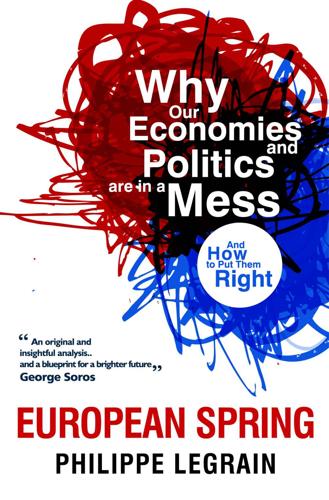
European Spring: Why Our Economies and Politics Are in a Mess - and How to Put Them Right
by
Philippe Legrain
Published 22 Apr 2014
As a share of GDP, it exports less to emerging economies than any other of the Group of Seven (G7) largest advanced economies – and indeed less to China than any EU-15 country, including Greece.419 Japan sends nearly a quarter of its goods exports to Brazil, Russia, India and China (the BRICs), Germany a tenth – and Britain only 5 per cent.420 Worse, Britain’s exports to the BRICs have grown more slowly in recent years than any other G-7 economy’s.421 That said, since Britain sends more of its exports to America, it will hopefully do better if the US recovery strengthens. Sterling’s devaluation has not only failed to promote Britain’s economic rebalancing, it has most likely delayed it, as Chapter 2 explained.422 Policymakers have complacently assumed that exports would automatically soar and neglected difficult reforms and investment to promote export-led growth.
…
Exports of financial and insurance services accounted for 10.2 per cent of Britain’s exports in 2011 and fell by an average of 1 per cent between 2007 and 2011. 419 EU-15 countries are the (generally richer) 15 countries that were members of the EU before its eastward enlargement in 2004. 420 International Monetary Fund, United Kingdom 2013 Article IV Consultation, July 2013, Annex 3, Figure A3.6. In 2011, 23.2 per cent of Japan’s goods exports went to the BRICs, 10.2 per cent of Germany’s, 7.4 per cent of Italy’s and 6.2 per cent of France’s, but only 5.2 per cent of Britain’s. 421 International Monetary Fund, United Kingdom 2013 Article IV Consultation, July 2013, Annex 3, Figure A3.7. Between 2007 and 2011, Britain’s exports to the BRICs grew by 4.2 per cent a year, while France’s grew by 5.9 per cent, Italy’s by 6.7 per cent, Germany by 9.6 per cent, Japan by 10 per cent and the United States’ by 11.4 per cent. 422 See also Philippe Legrain, "Don’t Blame the Euro Mess for Britain’s Plight", Wall Street Journal, 21 October 2012 http://online.wsj.com/article/SB10000872396390444734804578066134006073180.html 423 Office for National Statistics, gross fixed capital formation (code: NPQR) divided by GDP at market prices (code: ABMI) 424 http://www.economist.com/news/leaders/21580466-why-being-159th-best-investment-no-way-country-sustain-recovery-lets-try 425 http://www.prospectmagazine.co.uk/economics/adam-posen-george-osborne/ 426 International Monetary Fund, United Kingdom 2013 Article IV Consultation, July 2013, pages 77 and 78 427 Ibid, Figure A4.11 and Figure A4.24 428 More precisely, this is the rate at which the Bank of England lends to banks overnight secured against collateral. 429 Near-zero interest rates lowered mortgage interest costs for existing borrowers, which has doubtless supported spending.
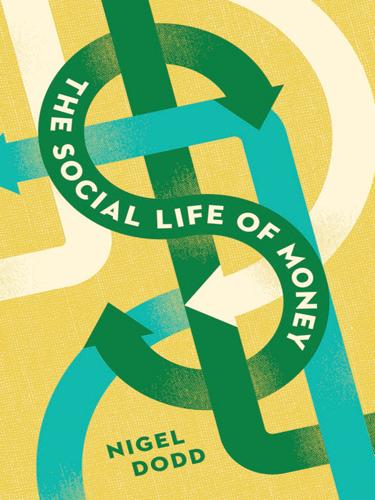
The Social Life of Money
by
Nigel Dodd
Published 14 May 2014
As what some experts believe is a further consequence of the crisis, by a circuitous but discernible route, several governments collapsed amid political uprising in the Middle East during the first half of 2011.1 The broader ramifications of the crisis for the global economy, its effect on the emerging BRIC economies (Brazil, Russia, India, and China), for example, are yet to be fully discerned. This is a crisis of legitimacy as much as economics, provoked by the contrast between the resources that governments have devoted to rescuing banks and on the other hand, their subsequent willingness to make dramatic and socially corrosive cuts in public expenditures.
…
Monetary union seems desirable for such states because of the scale of the threat posed by unrestricted capital flows to most existing national currencies when their exchange rates are not fixed (Eichengreen 2008).9 Fourth, there is the decline of the U.S. dollar as the world’s reserve currency, and relatedly, the “currency wars” and the strengthening of the Chinese renminbi, along with other BRIC (Brazil, Russia, India, and China) currencies (Cohen 2011; Fratzscher and Mehl 2011; Rickards 2011). Fifth, in the wake of that decline, there is the prospect of a global currency such as the special drawing rights (SDRs) issued by the IMF (Cohen 2011; Mundell 2012). Sixth, and finally, there is the growth of monetary forms that are not issued by states, such as digital monies.
…
* * * 1 Ruskin 1997: 185. 2 In a series of surveys conducted since 1987, between 80 and 85 percent of respondents have consistently expressed broad agreement with the statement, “I don’t like the idea of being in debt” (source: British Market Research Bureau, see http://www.marketresearchworld.net/content/view/643/77/). 3 Household debt has been increasing, particularly up until the 2007 financial crisis, when it rose from 113 percent (in 2000) to 175 percent (in 2007) of GDP in Britain, and from 100 to 135 percent in the United States during the same period. In Iceland, total (public and private) debt rose from 289 percent of GDP in 2003 to 1189 percent by 2008. It doubled in Ireland, reaching 700 percent of GDP in 2008 (Roxburgh, Lund, et al. 2010: 20). Debt was increasing in the BRICS economies, too. Before the banking crisis, total debt was growing at an annual compound rate of 15 percent in China and Brazil, 16 percent in India, and 32 percent in Russia (Roxburgh, Lund, et al. 2010: 21). There are roughly 191 million credit cards in Brazil, or one per member of the population: the number of cards doubled between 2004 and 2007 alone (Source: Euromonitor International, see http://www.euromonitor.com/financial-cards-and-payments-in-brazil/report).

The Price of Time: The Real Story of Interest
by
Edward Chancellor
Published 15 Aug 2022
Foreign exchange interventions by central banks, combined with hot money flows and increased lending by state banks (notably in China, India and Brazil), eased credit conditions across the emerging markets; as did the fact that their domestic interest rates were falling, drawn downwards by the gravitational pull of zero interest rates at the heart of the world’s financial system.14 Inflation started to pick up across the emerging markets. By early 2010, the BRICs – Goldman Sachs’ catchy acronym for Brazil, Russia, India and China – were overheating.15 In October, rubber and cotton futures jumped to record levels. Arabica coffee prices hit a thirteen-year high. Flooding across South East Asia affected the rice harvest, driving up rice futures by more than 50 per cent.16 THE ARAB SPRING On 17 December 2010, a young Tunisian street vendor doused his clothes with petrol and set himself alight outside the Governor’s office in the provincial town of Sidi Bouzid.
…
The grand theft at Malaysia’s development fund was replicated in less newsworthy fashion by countless emerging-market kleptocrats, their ill-gotten fortunes recycled into prime properties in London, Miami, New York, Sydney and other welcoming destinations. THE INTEREST-RATE LOBBY After Brazil’s fall from grace in 2013, the BRICs turned stone cold. Wall Street now fretted about the ‘Fragile Five’: India, Indonesia, Turkey and South Africa joined Brazil in the emerging markets’ hall of shame. Turkey was pickled in debt after its banks and companies had gorged on foreign capital. Foreign loans fuelled a building boom – a third bridge across the Bosporus, the world’s largest airport under construction, a sprawl of skyscrapers encircling Istanbul and dozens of new shopping malls.
…
H., 242 Draghi, Mario, 61, 122–3, 145, 146, 147, 240, 293, 305 Drucker, Peter, 163 Dudley, William, 238 Dugas, Laurent, 56 Dumoulin, Charles, 25 Dutch Republic, 13, 33, 35–6, 39, 49, 63, 68 Dutot, Nicholas, 53–4, 57 East India Company, 33, 36–7, 37*, 53, 70 Easterly, William, 189–90 ecological systems, 154–5 economic growth: and Borio’s thinking, 134, 135–9; Brazilian ‘miracle’, 257–8; and ‘bubble economy’ concept, 183–7; during deflationary periods, 100–101; and digital technologies, 127–8, 151–2, 176–7; and Draghi’s policy at ECB, 146–8; and Fed’s easy money policy, 111, 112, 115, 124, 152–3, 182–3, 238; and global interest rates prior to crisis, 118, 135; and globalization, 260–61; in Great Depression era, 142–3; and Hayek, 296, 298; and inequality, 203–6, 216–17, 237, 299; and inflation, 108, 108*; and inflation targeting, 123; in Japan of 1980s, 105–8; in Japan of 1990s, 100–101, 146, 147; led by finance, 266; and meaning of ‘wealth’, 179–82, 193–5; negative impact of building booms, 135–6, 144–5, 148; and Piketty’s theory, 216–17; in post-crisis Iceland, 300–301; productivity collapse in post-crisis decade, 150–51, 152–3; and reduced interest rates after a bubble, 114, 136, 138, 145–6; relation to interest rates, xxiv, xxv, 10, 12, 44, 89, 124–9, 141, 162, 237–8; secular stagnation concept, 77, 124–9, 131, 132–9, 151, 205–6; slow recovery from Great Recession, 124–5, 126–9, 131–2, 150–53, 298–9, 304; in Soviet Union of 1950s, 278; as strong after Second World War, 126, 302; as strong in 1920s USA, 89, 89–90, 108, 143; as subordinated to financialization, 162–71, 182–3, 203–6, 237, 260; vast expansion in China, 265–74, 275–82, 283–9 economic models: canonical model used by central banks, 118, 131, 153*, 207; and demographics, 127, 131; distributional issues as suppressed in, 207; ignoring of resource misallocations, 153*; no place for money and credit in, 118; and perceptions of risk, 230; and productivity puzzle, 151; rational actors/perfect foresight assumptions, 118; unreal reality of academic models, 138, 207 The Economist, 63, 67, 71–2, 73, 77 EDF (French utility), 225 Edmunds, John C., 181 Egypt, 77, 78, 255, 262 Einstein, Albert, 8 Elizabeth II, Queen, 114 Ellington Capital Management, 223 Emden, Paul, 80* emerging markets: Brazilian crash (2012–13), 257–8; BRICs, 254–5, 257–8; capital controls return after 2008, 262, 291; capital flight from (starting 2015), 262, 285–6; demand for industrial commodities, 128; epic corruption scandals, 258; and extended supply chains, 261; flooding across South East Asia (2010), 255; ‘Fragile Five’, 258–9; growth of foreign exchange reserves, 252, 253, 254–5, 256; impact of ultra-low interest rates on, xxiii, 253–60, 262–3; international carry Trade, 137, 237–8; overheating during 2010, 255, 256; post-crisis capital flows into, xxiii, 253–9, 262–3; and recent phase of globalization, 260–61; recovery from 2008 crisis, 124; and savings glut hypothesis, 129, 268–9; ‘second phase of global liquidity’ after 2008 crisis, 253–9, 262–3; and taper tantrum (June 2013), xxiii, 137, 239, 256–7, 259, 263; Turkish debt, 258–60; vulnerability to US monetary policy, 137, 262–3, 267–8 see also China employment/labour markets, xx, 151–2, 240, 260–61, 260*, 296; after 2008 crisis, 210, 211; new insecurity, 211, 298 Erdogan, Recep Tyyip, 259 European Central Bank (ECB), 144, 145, 147, 239, 240, 293; inflation targeting, 119, 120, 122–3; and quantitative easing, 146, 241, 242; sets negative rate, 147, 192–3, 244, 299 European Union, 187, 241, 262 Eurozone, 124, 150–51, 226; and political sovereignty, 293, 293†; sovereign debt crisis (from 2010), 144–8, 226, 238, 239, 241, 273, 293 Evans, David Morier, 73 Evelyn, John, 36, 45 Evergrande (Chinese developer), 279, 288, 310 executive compensation schemes, 152, 162, 163–4, 170, 204, 206, 207 Extinction Rebellion, 201 ExxonMobil, 166 Fang’s Money House, Wenzhou, 281–2 farming: agricultural cycle, 11, 14, 88; and ‘Bank of John Deere’, 167; barley loans in ancient Mesopotamia, 5–6, 6*, 7, 8, 10, 11, 14; bubbles in post-crisis decade, 173; in China, 283; and language of interest, 4–5; loans related to consumption, 6, 25; US deflation of 1890s, 99 Federal Reserve, US: asymmetrical approach to rates, 136–7; as carry trader, 222; cognitive dissonance in, 118–19; Federal Reserve Act (1914), 83; ‘forgotten depression’ (1921), 84, 86, 100, 143; forward guidance policy, 131*, 133, 238, 239, 240, 241; and Gold Exchange Standard, 85, 87, 90*; the ‘Greenspan put’, 111, 186; impact on foreign countries, 137, 239, 240–41, 255–6, 259, 262–3, 267–8, 285; inflation targeting, 119, 120, 241; Long Island meeting (1927), 82–3, 88, 92; mandates of, 240, 262; and March 2020 crash, 305–6; Objectives of Monetary Policy (1937), 97; Open Market Committee (FOMC), 109, 112–13, 115†, 120, 164, 228, 238, 239, 240; Operation Twist (2011), 131*, 238; parallel with US Forest Service, 154–5; and post-Great War inflation, 84; as the ‘price of leverage’, xxi–xxii; quantitative easing by, 12*, 76, 131*, 137, 175, 215, 228, 236, 238, 239–40, 241; raised rates announcement (2015), 138, 239; reaches ‘zero lower bound’ (2008), 243–4; response to 1929 Crash, 98, 100, 101, 108; suggested as responsible for 2008 crisis, 116–17, 118–19, 155, 204, 226–7; TALF fund, 175; taper tantrum (June 2013), xxiii, 137, 239, 256–7, 259, 263; ultra-easy money after 2008 crisis, xxi, 60, 124, 131–8, 146, 149, 152–5, 181–3, 206–17, 221–4, 230, 235–41, 243–4, 262, 291–2; Paul Volcker runs, 108–9, 145; Janet Yellen runs, 120 see also Bernanke, Ben; Greenspan, Alan Feldstein, Martin, 119 Ferri, Giovanni, 277* Fetter, Frank, 30 Field, Alexander, The Great Leap Forward, 142–3 financial crisis (2008): accelerates financialization, 182–3; and complex debt securities, 116, 117–18, 231; ‘crunch porn’ on causes of, 114; economists who anticipated crisis, 113–14, 132; failure of unconventional monetary policies after, xxi, xxii, 43–4, 291–4, 298–9, 301–3; Fed’s monetary policy as suggested cause, 116–17, 118–19, 155, 204, 226–7; generational impact of, 211–12, 213; as ‘giant carry trade gone wrong’, 253–5; global causes of, 117–18; Icelandic recovery from, 301–2; and inequality, 204, 205–17, 299; interest at lowest level in five millennia during, xxi, 243–4, 247; Law’s System compared to, 49, 60–61; low/stable inflation at time of, 134, 135; monetary policy’s role in run-up downplayed, 115–16, 115*, 115†; and quoting of Bagehot, 76; recovery of lost industrial output after, 124; regulatory interpretation of, 114–15, 117; and return of the state, 292–5, 297, 298; return to ‘yield-chasing’ after, 221–6, 230–31, 233–4, 237–8; the rich as chief beneficiaries of, 206–10; savings glut hypothesis, 115–16, 117, 126, 128–9, 132, 191, 252, 268–9; ‘second phase of global liquidity’ after, 253–9, 262–3; unwinding of carry trades during, 221, 227; warnings from BIS economists before, 113–14, 131–4, 135–9 see also Great Recession financial derivatives market, 225–6 financial engineering: buybacks, 53, 152, 163–6, 167, 169, 170–71, 183, 224; crowding out of real economy by, 158–9, 160, 166–71, 182–3, 185, 237; ‘funding gap’ as impetus, 164, 176–7, 291; merger ‘tsunami’ after 2008 crisis, 160–63, 161*, 168–70, 237, 298; ‘promoter’s profit’ concept, 158–9, 160, 161, 164; and ‘shareholder value’, 163–6, 167, 170–71; Truman Show as allegory for bubble economy, 185–7; use of leverage, 111, 116, 149, 155, 158–71, 204, 207, 223, 237, 291; zaitech in Japan, 106, 182, 185 financial repression: in China, 264–5, 265*, 266–81, 268*, 283, 286–9, 292; and inequality, 287–8; McKinnon coins term, 264; political aspects, 265, 265*, 286–9, 292; returns to West after 2008 crisis, 291–3; after Second World War, 290–91, 302 financial sector: bond markets as ‘broken (2014), 227; complex securitizations, 116, 117–18, 221, 227, 231; decades-long bull market from early 1980s, 203–4; economics as fundamentally monetary, 132, 138–9; Edmunds’ ‘New World Wealth Machine’, 181–2; expansion in 1920s USA, 203; finance as leading growth, 266; financial mania of 1860s, 72–4, 75–6; fixed-income bonds, 68–9, 193, 219, 222, 225, 226; foreign securities/loans, 66, 77–8, 91; investment trusts appear (1880s), 79; liquidity traps, 114; mighty borrowers within, 202; profits bubble in post-crisis USA, 183, 183†, 185, 211; robber baron era in USA, 156–9, 203; stability as destabilizing, 82, 143, 233, 263, 285; stock market bubble in post-crisis decade, 175–7, 176*; trust companies in US, 83–4, 84*; US bond market ‘flash crash’ (2014), 138; and volatility, 153, 228–30, 233, 234, 254, 304, 305; volatility as asset class, 229–30, 229*, 233, 234, 304, 305; ‘Volmageddon’ (5 February 2018), 229–30, 234 see also banking and entries for individual institutions/events financial system, international: Asian crisis, 114, 252, 278; Basel banking rules, 232; Borio on ‘persistent expansionary bias’, 262–3; complex mortgage securities, 116, 117–18; crash (12 March 2020), 304–6; ‘excess elasticity’ of, 137; global financial imbalances, 137, 138; Louvre Accord (1987), 105–6; stock market crash (October 1987), 106, 110–11, 229 financialization, 162–71, 182–3, 185, 203–8, 237 Fink, Larry, 209, 246 Finley, Sir Moses, Economy and Society in Ancient Greece (1981), 18* fire-fighting services, 154–5 First World War, 84, 85 Fisher, Irving: and debt-deflation, 98–9, 100, 119, 280; first to refer to ‘real’ interest rate, 88–9, 219*; founds Stable Money League (1921), 87, 96; and Gesell’s rusting money, 243, 246; on interest, 29–30, 82, 189, 189*, 201; losses in 1929 crash, 94; monetarist view of 1929 Crash, 98–9, 100, 101, 108; ‘money illusion’ concept, 87*; on nature’s production, 4–5; on negative interest, 246; The Theory of Interest, xxiv, xxv, xxvi*, 16, 173 Fisher, Peter, 194 Fisher, Richard, 164 Fitzgerald, F.

Losing Control: The Emerging Threats to Western Prosperity
by
Stephen D. King
Published 14 Jun 2010
Overall, the share of global industrial ‘added value’ coming from the developed nations has dropped from 68.3 per cent in 1971 to 51.9 per cent in 2008, while the share accruing to Brazil, Russia, India and China (BRIC), has risen from 2.6 to 16.5 per cent over the same period (similar figures apply to capital spending). For GDP as a whole, the G7 share has fallen more moderately from 70.5 per cent in 1971 to 61.1 per cent in 2008, with the share for China et al. rising from 3.3 to 11.6 per cent over the period:13 in other words, the developed nations have moved away from manufacturing while the BRICs have become increasingly dependent on it. The Ricardian interpretation of these developments is simple.
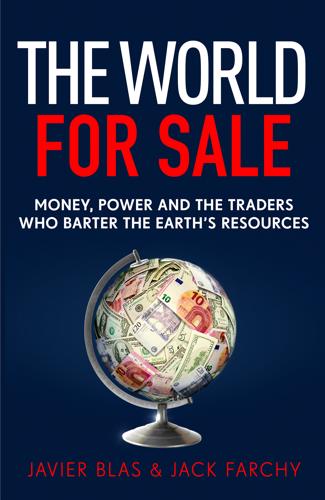
The World for Sale: Money, Power and the Traders Who Barter the Earth’s Resources
by
Javier Blas
and
Jack Farchy
Published 25 Feb 2021
The first modern commodity supercycle, for example, was triggered by the industrial revolution in the nineteenth century in Europe and America; the second, by the global rearmament before the Second World War; the third, by the economic boom of the Pax Americana and the reconstruction of Europe and Japan in the late 1950s and early 1960s. The fourth began around the turn of the millennium, as China and other emerging economies entered the commodity sweet spot. 11 It fundamentally altered the structure of the global commodity markets. Between 1998 and 2018, the seven largest emerging markets (the BRIC group of Brazil, Russia, India and China, plus Indonesia, Mexico and Turkey) accounted for 92% of the increase in the world’s metals consumption, 67% of the increase in energy consumption, and 39% of the increase in food consumption. 12 The commodity industry was ill prepared to meet the increase in demand. The low prices of the 1990s had forced many miners, oil companies and farmers into savage cost-cutting, so when consumption surged they were unable to boost production.
…
In the process, they probably did more to help Vladimir Putin remain in power than anyone else in the international business community – even as he was engaged in a hostile geopolitical standoff with Europe and the US. For much of the boom era of the 2000s, Russia hadn’t really needed the commodity traders’ money. It was a darling of Western investors, one of the BRIC economies whose rapid growth and burgeoning middle class made it an irresistible bet on the future of commodity-rich emerging markets. Even after the shock of the takeover of Yukos’s assets by the State, and the imprisonment of Mikhail Khodorkovsky, Russian companies and the Russian state alike could borrow easily from Western investors and banks.
…
ABCD, 241 , 253 Abidjan, Ivory Coast, 233 , 237 ABN, 165 Abramovich, Roman, 145 , 147 , 148 Abu Dhabi, United Arab Emirates, 262 , 319 acid rain, 232 Aeroflot, 149 Afghanistan, 311 Africa Progress Panel, 225 Agnelli, Roger, 264 –5 agriculture, 9 , 25 –6 , 57 , 239 –56 cocoa, 251 food price crises (2007–10), 239 –42 , 248 , 250 , 252 , 255 –6 futures market, 102 , 104 , 243 Great Grain Robbery (1972), 38 –42 , 57 , 69 , 135 , 310 potato futures default (1976), 104 rice, 102 , 177 , 232 soybeans, 114 , 181 , 240 , 318 wheat, 30 , 31 , 39 –41 , 56 , 232 , 239 –41 , 245 –7 , 252 AIOC, 143 , 145 Akins, James, 52 Akouédo, Abidjan, 233 , 237 Alcan, 75 , 76 , 81 , 83 , 143 Alcoa, 75 , 80 , 81 , 143 , 144 Alison-Madueke, Diezani, 221 Almaty, Kazakhstan, 146 alumina, 73 , 75 –81 , 83 , 140 –44 , 148 , 187 , 205 aluminium Glencore, 205 , 245 global financial crisis (2007–9), 249 Jamaica, 73 , 75 –84 , 142 Marc Rich + Co, 77 –84 , 122 , 125 , 144 , 165 Soviet collapse, 133 –5 , 140 –50 , 165 Trans-World, 133 –5 , 137 –49 Alvarez, Luis, 198 , 202 –3 Amanecer Holding, 160 Amsterdam, Netherlands, 236 , 237 André & Cie, 39 , 149 , 162 , 170 Andreas, Dwayne, 253 –4 Anglo-Persian Oil Company, 67 , 105 Angola, 85 , 98 , 130 , 153 , 161 , 206 , 229 –30 , 282 , 300 , 325 animal feed trade, 261 Annan, Kofi, 225 Anro, 64 Antwerp, Belgium, 46 , 47 Arab Spring (2011), 1 , 247 –8 , 255 Archer Daniels Midland (ADM), 11 , 241 , 253 –6 , 262 , 310 –11 Argentina, 86 , 190 , 239 Arkan (Željko Ražnatovic´), 167 Aron Hirsch & Sohn, 26 artisanal miners, 226 Ashland Oil, 53 , 55 , 309 Asian financial crisis (1997), 169 Asturiana de Zinc, 123 , 191 Atlantic Richfield Company, 68 , 104 Australia, 75 , 131 , 143 , 181 , 183 , 186 –7 , 190 , 193 –4 , 273 Azerbaijan, 33 , 206 , 319 Baar, Switzerland, 170 , 185 , 190 , 197 , 257 , 321 Baba Gurgur, Kurdistan, 284 , 289 backwardation, 193 Bahamas, 163 , 201 Bahrain, 309 Bake, Chris, 3 , 4 , 6 , 287 , 291 Bakken oilfields, North Dakota, 323 Baku, Azerbaijan, 33 ballistic missiles, 43 Bankers Trust, 60 banking sector, 13 , 15 , 17 credit, 60 –61 financialisation, 18 , 101 –5 , 110 , 113 –14 , 252 Banque National de Paris, 95 Banque de Paris et des Pays-Bas, see Paribas Banque Nationale de Paris, 95 Barbados, 154 bauxite, 73 , 75 –7 , 79 , 80 , 85 , 86 Bayoil, 64 , 203 Beard, Alex, 259 Beer, Sondheimer & Co., 26 Belgian Congo (1908–60), 33 , 218 , 222 Belgium, 46 , 47 , 91 Belousov, Nikolai, 38 –41 Bénard, André, 54 Benavides, Roque, 48 –9 Benghazi, Libya, 1 –8 Berezovsky, Boris, 149 Bermann, Josef, 183 Bermuda, 65 , 159 , 160 , 325 Bernberg, Mendel, 37 Berruien, Nuri, 4 –5 , 6 Better Together campaign (2014), 291 BHP, 175 –6 BHP Billiton, 176 , 264 , 273 big data, 244 Billiton, 171 , 175 –6 Blair, Anthony ‘Tony’, 272 Bloomberg News, 10 Bloomberg, Michael, 316 BNP Paribas, 61 , 215 , 304 –8 , 312 , 315 , 325 Bolivia, 129 Bosnia, 167 Botha, Pieter Willem, 90 Botswana, 66 Bouazizi, Mohamed, 247 BP, 13 , 32 , 64 , 67 , 89 , 104 , 105 , 106 , 115 , 171 –2 , 267 –8 Bratsk, Russia, 142 Brazil, 20 , 81 , 85 , 86 , 169 , 180 , 181 , 206 , 264 , 313 , 318 Brent oilfield, 114 –16 , 122 , 123 , 204 , 316 bribery, 20 , 69 , 229 , 260 , 309 , 310 –11 , 313 –15 , 326 BRIC group, 180 , 221 , 299 British Virgin Islands, 201 Browne, John, 267 –9 Brunei, 88 Bryce, Colin, 102 , 155 Bulk Oil, 63 Bunge, 39 , 241 Burundi, 91 –4 , 98 Busch, Gary, 144 Bush, George Walker, 224 , 255 C. Tennant, Sons & Co, 57 Calil, Ely, 222 Caltex, 89 Canada, 70 , 75 , 76 , 83 , 170 , 239 , 273 , 286 Caracas, Venezuela, 154 Cargill, 14 , 17 , 25 , 26 , 29 –31 , 57 , 69 , 135 , 170 , 241 , 242 –3 , 326 animal feed trade, 261 billionaires, 19 Communist Bloc, trade with, 30 –31 Continental acquisition (1998), 170 , 173 –4 global financial crisis (2007–8), 243 Great Grain Robbery (1972), 38 –42 , 57 , 69 , 135 , 310 IPO, views on, 277 –8 metals trade, 57 profits, 38 , 248 , 249 shareholders, 277 –8 Soviet Union, trade with, 31 , 38 –42 , 135 Suez Crisis (1956), 36 Tradax International and, 30 , 40 –41 , 242 Ukraine, trade with, 162 Zimbabwe, trade with, 230 –32 Cargill, Margaret, 277 Cargill family, 19 , 249 , 277 Carter, James ‘Jimmy’, 94 Casablanca, Morocco, 33 Casimiro, Didier, 313 Castaño, Enrique, 152 Castro, Fidel, 9 , 48 , 151 –3 , 156 –8 , 161 , 306 caustic washing, 235 , 236 Cayman Islands, 281 , 289 , 308 Central Intelligence Agency (CIA), 43 , 76 , 316 Ceyhan, Turkey, 285 Chad, 206 , 222 , 273 , 294 –6 , 302 Chalmers, David, 64 , 203 Chase Manhattan, 60 Chelsea FC, 148 Chelyabinsk, Russia, 165 Chernoy, Lev, 133 –4 , 139 –44 , 148 Chevron, 32 , 65 , 89 , 170 , 213 –14 , 254 , 255 , 295 Chicago, Illinois, 13 , 102 , 243 , 246 Chile, 85 , 87 , 181 , 190 , 226 China, 17 , 18 , 106 , 130 , 138 , 175 –81 , 187 , 204 , 207 , 210 , 263 , 319 –20 Africa, trade with, 220 , 221 , 224 , 226 ballistic missile development, 43 ChinaOil, 320 coal market, 177 , 188 , 190 , 273 Coastal Corporation, trade with, 64 Cofco, 320 copper consumption, 18 , 179 , 181 , 195 , 226 , 233 coronavirus pandemic (2019–), 315 , 321 cotton consumption, 230 Cultural Revolution (1966–76), 177 economic slowdown (2011–), 315 food price crisis (2007–8), 239 –42 Kurdish crude in, 286 oil market, 179 –80 , 194 –5 , 211 –12 reform and opening-up (1978–2005), 177 –8 rice trade, 177 Unipec, 320 US trade war (2017–), 317 –18 WTO accession (2001), 179 , 196 , 317 Zhuhai Zhenrong, 320 , 326 China Investment Corporation, 262 China National Chemical Corporation, 212 ChinaOil, 320 Chivas Regal, 294 Chocfinger, 251 chocolate, 251 , 318 Citigroup, 194 –5 Claridge’s, London, 272 climate change, 21 , 188 , 255 , 318 , 326 , 327 Clinton, Hillary, 241 Clinton, William ‘Bill’, 97 –8 coal, 21 , 87 , 135 , 177 , 181 , 183 , 186 –93 , 258 , 273 , 318 Coastal Corporation, 64 , 110 , 200 , 203 cobalt, 9 , 223 , 224 , 226 , 273 , 314 , 318 Cobuco, 91 –4 cocoa, 251 , 318 Cofco, 320 coker gasoline, 234 –8 Collins, Phil, 314 Colombia, 131 , 183 , 187 , 258 Cometti, Antonio, 128 Compagnie Tommy, 236 –8 Concord Resources, 245 Congo Belgian Congo (1908–60), 33 , 218 , 222 Democratic Republic of Congo 20 , 85 , 199 , 218 –29 , 258 , 263 , 312 –13 , 314 Free State (1885–1908), 218 Republic of the Congo, 314 Congo river, 218 Conservative Party (UK), 3 , 147 , 273 , 290 Constanta, Romania, 168 ContiFinancial, 170 Continental Grain Company, 39 , 40 , 170 , 173 Convention on Combating Bribery, 275 Cook Colliery, Australia, 186 Cook Industries, 39 , 309 Cool Runnings , 78 copper, 13 , 14 , 15 , 16 , 27 , 35 , 56 , 172 , 233 arsenic in, 233 Australian production, 193 –4 Chinese consumption, 18 , 179 , 181 , 195 Congolese production, 223 , 224 , 225 , 226 –9 , 263 , 314 futures trade, 102 , 193 Glencore, 223 , 224 , 225 , 226 –9 , 258 , 263 , 264 nationalisation and, 85 Soviet production, 135 Sumitomo, 250 Zambian production, 226 , 232 CorElf, 64 corn, 9 , 27 , 30 , 40 , 162 , 171 , 240 , 247 , 253 coronavirus pandemic (2019–), 15 , 249 , 296 , 315 , 321 –5 corruption, 20 , 68 –9 , 98 , 167 , 207 , 247 , 260 , 275 , 308 –15 , 326 in Brazil, 313 –4 in Chad, 294 in China, 314 in Congo, 220 , 225 , 229 in Kurdistan, 288 in Nigeria, 221 in Russian Federation, 213 in Switzerland, 20 , 69 , 310 CÔte d’Ivoire, 20 , 232 , 233 –8 , 251 , 304 , 314 cotton, 230 Crandall, Mark, 88 , 121 , 125 , 126 , 128 , 132 , 238 Credit Suisse 312 credit, 60 –61 Crimea, 300 , 313 Crude Oil Trading, 164 Cuba, 9 , 48 , 77 , 151 –3 , 156 –61 , 165 , 174 , 305 –8 Cubametales, 158 Cubazucar, 158 Cultural Revolution (1966–76), 177 Cushing, Oklahoma, 104 Cyprus, 201 , 211 Czechoslovakia, 22 , 118 Dagli , 88 Dakar, Senegal, 33 Daley, Jim, 16 Dali, Salvador, 198 Dar es Salaam, Tanzania, 232 Dauphin, Claude, 14 , 120 , 122 , 125 , 126 , 128 –30 BNP Paribas, relations with, 304 –8 Cuba, trade with, 159 death (2015), 325 Kurdish oil trade, 286 toxic waste scandal (2006), 235 –7 , 304 Trafigura foundation (1993), 129 –30 Davis, Carlton, 84 Davis, Craig, 124 Davis, Mick China prediction, 175 –6 , 178 , 181 , 192 –3 , 227 Glencore coal mines deal (2001–2), 191 –2 Glencore merger, 264 –5 , 267 , 269 –73 Mount Isa Mines deal (2002), 193 –4 Vale bid (2007), 264 –5 , 269 Déby, Idriss, 294 –6 , 302 Democratic Republic of Congo, 20 , 85 , 199 , 218 –29 , 258 , 263 , 312 –13 , 314 democratisation of information, 316 –17 Deng Xiaoping, 177 Department of Agriculture, US, 70 , 244 Deripaska, Oleg, 147 , 148 , 312 –3 derivatives, 101 –5 , 110 , 114 , 116 , 171 Brent crude, 115 copper, 102 , 193 food, 102 , 104 , 243 , 252 oil, 115 , 195 zinc, 124 Detiger, Jacques, 163 , 165 Deuss, Johannes ‘John’, 64 –6 , 68 , 89 , 90 , 95 , 114 –16 , 122 , 123 , 308 , 325 Deutsche Bank, 130 diamonds, 222 , 223 , 224 diesel, 2 , 5 , 7 , 23 , 24 , 72 , 90 , 164 , 168 , 206 , 232 , 253 Diocletian, Roman Emperor, 252 Dole, Robert ‘Bob’, 253 Dominican Republic, 154 Dreyfuss, Danny, 120 , 131 Drujan, Josef, 288 Druzhba pipeline, 208 DT Group, 230 Dubai, United Arab Emirates, 199 , 281 , 288 , 297 Dublin, Ireland, 281 Duelfer Report (2004), 202 Dunand, Marco, 211 , 216 East India Company, 25 Ebner, Martin, 126 –7 Eilat–Ashkelon pipeline, 43 , 45 , 46 –7 , 49 –51 , 285 –6 Egloff, Eddie, 86 Egypt, 28 food price crisis (2007–8), 240 October War (1973), 53 oil production, 168 Revolution (2011), 247 Six-Day War (1967), 45 Suez Crisis (1956), 36 Eilat–Ashkelon pipeline, 43 , 45 , 46 –7 , 49 –51 , 94 , 285 –6 electric cars, 9 , 223 electricity, 79 , 81 , 172 Elf Aquitaine, 61 , 64 , 170 Elizabethville, Belgian Congo, 33 Elman, Richard, 196 , 277 emerging markets, 17 , 85 Emmitt, Bill, 65 Endt, Friso, 65 Enex, 190 –92 Engelhart Commodities Trading Partners, 244 Enron, 172 –3 , 174 , 195 Equatorial Guinea, 206 , 273 Erbil, Iraq, 198 , 285 , 287 , 289 Es Sider, Libya, 5 –6 Estonia, 209 ethanol, 253 –6 Ethiopia, 232 Euro-Asian Oil, 299 Euromin, 143 , 165 Europe , 322 , 323 , 324 Exmor Group, 288 Exportkhleb, 38 , 135 Exxon, 54 , 78 , 97 , 170 , 316 ExxonMobil, 32 , 44 , 213 , 319 Fair Trade, 318 Fallujah, Iraq, 283 Farmer, Michael, 195 Federal Bureau of Investigation (FBI), 95 , 313 , 327 Fegel, Gary, 259 ferroalloys, 29 , 140 , 146 , 190 , 273 , 275 Ferruzzi, 114 Fina, 170 Financial Services Authority (FSA), 250 Financial Times , 10 , 112 , 278 financialisation, 18 , 101 –5 , 110 , 113 –14 , 252 Finch, Bob, 167 , 207 Flacks, Alan, 49 Flaux, Julian Martin, 169 food price crises (2007–10), 239 –42 , 248 , 250 , 252 , 255 –6 Forbes , 147 Ford, Henry, 253 Foreign Affairs , 52 Foreign Corrupt Practices Act (1977), 310 France, 36 , 70 , 200 , 294 Frank, Ernst, 35 Fransen, David, 7 , 159 Fribourg, Michel, 39 frontier markets, 292 FTSE 100 index, 15 , 269 , 276 , 278 , 282 futures, 101 –3 , 104 , 110 , 113 , 116 backwardation, 193 food, 102 , 104 , 243 , 246 , 252 copper, 102 , 193 oil, 115 , 195 zinc, 124 G7 summit (1979), 70 G12 (traders), 131 Gaddafi, Muammar, 1 , 3 , 4 , 5 , 6 , 8 , 64 , 166 , 247 Gaddafi, Saif al-Islam, 4 gas, 21 , 172 Gdansk, Poland, 210 , 211 Gecamines, 228 Geller, Uri, 224 General Agreement on Tariffs and Trade (1947), 317 Geneva, Switzerland, 63 Genovese, Lucio, 131 , 149 George Town, Cayman Islands 281 Gerald Metals, 143 Germany coal consumption, 183 , 273 East Germany (1949–90), 29 Nazi period (1933–45), 22 , 24 , 26 , 47 , 87 wheat futures ban (1897), 252 West Germany (1949–90), 22 –4 , 28 , 70 Gertler, Dan, 222 –9 , 313 Gibraltar, 49 Gilvary, Brian, 172 Giuliani, Rudolph ‘Rudy’, 97 Glasenberg, Ivan, 11 , 14 , 21 , 131 , 148 , 175 , 181 –5 , 260 –61 , 325 , 326 –7 coal trade, 21 , 185 –94 , 260 Congo, trade with, 225 –9 , 314 IPO (2011), 257 –9 , 263 , 266 –9 , 273 , 274 , 276 Russia, trade with, 300 , 302 , 328 share price crisis (2015), 276 Xstrata merger, 263 –5 , 269 –73 , 276 glasnost , 135 GlaxoSmithKline, 278 Glencore, 9 –12 , 14 , 15 , 21 , 59 , 119 , 130 –32 , 167 –9 , 174 aluminium trade, 205 , 245 bonuses, 131 bribery, use of, 314 Chad, trade with, 295 –6 coal trade, 21 , 186 –93 , 258 , 273 , 318 Congo, trade with, 219 , 222 –9 , 263 , 312 –13 , 314 copper trade, 223 , 224 , 225 , 226 –9 , 263 , 264 , 314 coronavirus pandemic (2019–), 321 –4 corruption probe (2018), 314 debt, 263 , 267 , 276 Enex, 190 –92 foundation (1994), 128 Glasenberg takes over (2002), 185 global financial crisis (2007–9), 265 –6 grain trade, 245 –7 , 273 IPO (2011), 257 –61 , 262 –9 , 273 –9 , 282 , 319 Iraq, trade with, 197 –9 , 202 –3 , 285 , 287 –91 , 292 Jamaica, trade with, 84 , 205 Kurdistan, trade with, 285 , 287 –90 , 292 Nigeria, trade with, 12 , 168 , 314 Oilflow SPV I DAC, 281 –2 , 287 –90 , 292 profits, 248 , 249 Roche, relationship with, 188 –92 , 267 Romania, trade with, 167 –9 Russia, trade with, 143 , 145 –6 , 147 –8 , 300 , 301 –2 share price crisis (2015), 276 shareholders, 19 , 131 –2 , 257 –69 , 273 –5 , 276 Südelektra, 189 –91 Tajikistan, trade with, 162 Venezuela, trade with, 314 women in, 15 Xstrata and, 175 –6 , 178 , 181 , 189 –94 , 263 –73 , 276 , 301 zinc trade, 258 , 273 global financial crisis (2007–9), 243 , 244 , 265 –6 , 292 God squad, 195 gold standard, 51 , 70 –71 Golden Age of Capitalism, 24 Goldman Sachs, 13 , 111 , 130 , 206 , 266 Gorbachev, Mikhail, 135 Gore, Albert ‘Al’, 65 grain, 9 , 14 , 18 , 19 , 25 , 26 , 27 , 170 Cargill, see Cargill, Chinese consumption, 239 –42 food price crises (2007–10), 239 –42 , 248 , 250 , 252 , 255 –6 futures trade, 102 , 243 , 246 Glencore, 245 Great Grain Robbery (1972), 38 –42 , 57 , 69 , 135 , 310 Granaria, 245 Great Grain Robbery (1972), 38 –42 , 57 , 69 , 135 , 310 Green, Pincus, 50 , 52 –3 , 55 , 57 –8 , 60 , 61 , 94 , 97 , 118 , 120 Greenwich, Connecticut, 100 , 113 Grenada, 77 Guatemala, 161 Guinea, 75 Gulf Oil, 36 Gulf War (1990–91), 100 –101 , 106 , 108 –10 , 157 , 200 Gunvor, 20 , 207 –16 , 230 , 262 , 300 , 313 , 314 , 318 , 326 Gurov, Evgeny, 23 , 24 , 35 Gutfreund, John, 108 , 112 , 113 Guyana, 76 Haaretz , 46 Hachuel, Jacques, 60 Hackel, Alexander ‘Alec’, 60 , 98 , 125 Haiti, 154 Hall, Andy, 11 , 105 –13 , 116 , 171 , 173 , 243 , 249 , 325 China trade, 194 –5 Gulf War trade, 100 –101 , 106 –10 , 322 , 323 Hamanaka, Yasuo, 250 Hamze, Alex Hayssam, 226 , 227 Hansen, Mark, 20 , 245 Harrisburg, Pennsylvania, 280 Hart, Hugh, 72 –4 , 78 , 80 Havana, Cuba, 151 –3 Hawrami, Ashti, 291 hedging, 13 , 103 , 105 , 109 , 194 , 228 , 229 , 244 , 265 , 276 Helms–Burton Act (1996), 160 Hendel, Stephen, 111 Heunis, Chris, 89 Hobbs, Jeremy, 250 Holder, Eric, 307 –8 Holocaust (1941–5), 27 Hong Kong, 176 , 183 , 196 , 269 , 277 Horstmann, Udo, 88 , 183 HSBC, 312 Hungary, 31 Hunt Oil, 36 Hussein, Saddam, 9 , 64 debt crisis (1990), 107 Gulf War (1990–91), 101 , 108 , 110 , 157 , 199 –200 , 283 Kurds, relations with, 283 oil surcharges, 200 –201 , 202 , 207 , 210 US invasion (2003), 201 , 283 ICI, 154 Incomed Trading Corporation, 202 India, 17 , 25 , 28 , 48 , 85 , 86 , 180 , 226 Indonesia, 17 , 85 , 180 intelligence networks, 36 International Energy Agency, 70 International Monetary Fund (IMF), 78 , 83 , 252 , 294 , 296 , 303 , 310 International Petroleum Exchange, 115 Iran, 12 , 168 Burundi, trade with, 93 coronavirus pandemic (2019–), 321 Islamic Revolution (1979), 45 , 67 , 88 , 94 , 105 Israel pipeline, 43 , 45 , 46 –7 , 49 –51 , 94 , 285 Marc Rich, trade with, 68 –9 , 94 –7 Marimpex, trade with, 64 OPEC established (1960), 44 Philipp Brothers oil deal (1973), 52 –3 , 55 Rotterdam market trade, 62 sanctions on, 305 , 309 , 312 South Africa, trade with, 88 Taylor in, 154 , 166 US hostage crisis (1979–81), 20 , 94 , 96 US sanctions, 305 , 320 –21 Vitol, trade with, 166 , 309 Iraq, 9 , 197 –203 , 325 Bayoil, trade with, 64 , 203 Coastal Corporation, trade with, 64 , 110 , 200 , 203 debt crisis (1990), 107 Glencore, trade with, 197 –9 , 202 –3 Gulf War (1990–91), 100 –101 , 106 , 108 –10 , 157 , 200 Iran-Iraq War (1980–88), 110 Islamic State in, 283 Kurdistan, 198 , 280 –91 , 295 , 298 , 299 , 302 , 328 oil-for-food programme (1995–2003), 197 –203 , 207 , 210 , 310 OPEC established (1960), 44 Trafigura, trade with, 201 , 203 US-led War invasion (2003–11), 201 , 283 , 311 Vitol, trade with, 201 , 203 , 285 , 286 –7 , 291 , 310 Ireland, 281 iron ore, 175 –6 , 181 , 261 , 264 Islamic State, 8 , 288 , 289 , 302 Israel, 36 Diamond Exchange, 223 Eilat–Ashkelon pipeline, 43 , 45 , 46 –7 , 49 –51 , 94 , 285 –6 Rich’s citizenship, 97 , 98 Six-Day War (1967), 45 Yom Kippur War (1973), 53 Issroff, David, 140 , 146 , 275 Italy, 70 , 321 Ivory Coast, 20 , 232 , 233 –8 , 251 , 304 , 314 J.P.

The Extreme Centre: A Warning
by
Tariq Ali
Published 22 Jan 2015
It has maintained spectacular growth rates and in the second quarter of 2010, it overtook Japan as the world’s second-largest economy (a position which Japan had maintained for nearly four decades). Valued at $1.33tn, its economy is already bigger than that of Germany, the UK or France. By the end of 2010 its foreign exchange reserves stood at $2.85tn. According to a 2009 Goldman Sachs report, it will also overtake the US economy by 2027 (and the BRIC countries, Brazil, Russia, India and China, are set to displace the G7 as the largest economic bloc by 2032). When Admiral Timothy Keating, the head of US Pacific Command, met a senior Chinese admiral in the crisis year of 2008, he heard a surprising offer. Keating reported that his unnamed counterpart had suggested drawing a line down the middle of the Pacific, adding: ‘You guys can have the east part of the Pacific: Hawaii to the States.
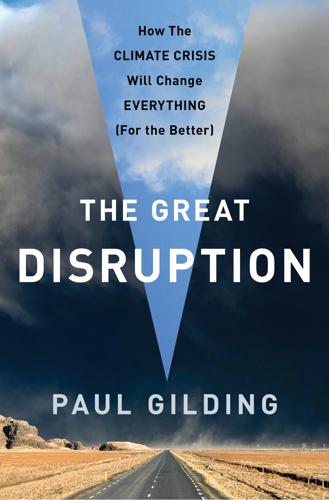
The Great Disruption: Why the Climate Crisis Will Bring on the End of Shopping and the Birth of a New World
by
Paul Gilding
Published 28 Mar 2011
Goldman Sachs has another set of data and predictions that reach similar conclusions. They forecast that while per capita GDP will approximately double in the G7 developed economies by 2050, the real growth in per capita income will occur in the BRIC (Brazil, Russia, India, and China) and N-11 (Next Eleven, the large developing economies that along with the BRIC have the potential to overtake the G7 as the world’s largest economies this century). In these economies, Goldman Sachs sees per capita income increasing on average by almost ten times between 2006 and 2050.3 These countries already are (in the case of China) or are rapidly becoming the world’s major economies.
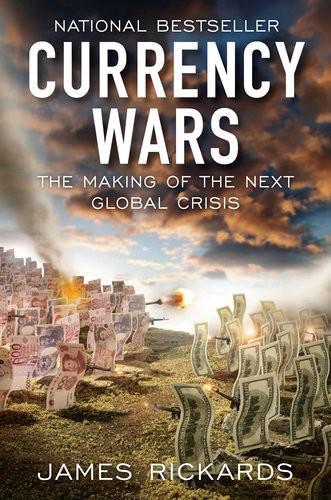
Currency Wars: The Making of the Next Gobal Crisis
by
James Rickards
Published 10 Nov 2011
• April 26, 2009: Agence France Presse reports that China is calling for the reform of the world monetary system and replacement of the U.S. dollar as the leading reserve currency. • May 18, 2009: The Financial Times reports Brazil and China have agreed to explore conducting bilateral trade without using dollars. • June 16, 2009: Reuters reports that Brazil, Russia, India and China, at a BRIC summit, call for a more “diversified, stable and predictable currency system.” • November 3, 2009: Bloomberg reports that India has purchased $6.7 billion worth of IMF gold to diversify assets away from the weaker dollar. • November 7, 2010: World Bank president Robert Zoellick states that the G20 should “consider employing gold as an international reference point of market expectations about inflation, deflation and future currency values
…
Romer, former Chair of the Council of Economic Advisers, commenting on quantitative easing, February 27, 2011 Three supercurrencies—the dollar, the euro and the yuan—issued by the three largest economies in the world—the United States, the European Union and the People’s Republic of China—are the superpowers in a new currency war, Currency War III, which began in 2010 as a consequence of the 2007 depression and whose dimensions and consequences are just now coming into focus. No one denies the importance of other major currencies in the global financial system, including Japanese yen, UK pounds sterling, Swiss francs, and those of the remaining BRICs: Brazilian real, Russian ruble, Indian rupee and South African rand. These currencies derive their importance from the size of the economies that issue them and the volume of trade and financial transactions in which those countries engage. By these measures, the indigenous dollars issued by Australia, New Zealand, Canada, Singapore, Hong Kong and Taiwan, as well as the Norwegian krone, South Korean won and UAE dirham, all have pride of place.
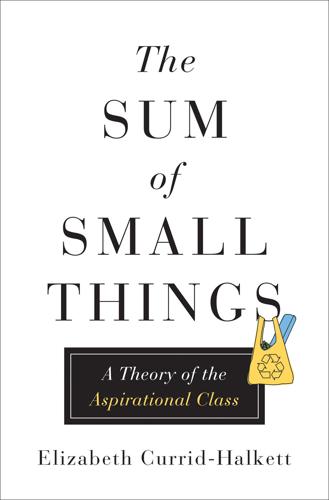
The Sum of Small Things: A Theory of the Aspirational Class
by
Elizabeth Currid-Halkett
Published 14 May 2017
For Ali and Dandush, the income range ignores the fact that someone making $2 a day can still purchase a mobile phone and that what people earn doesn’t tell you about what they’ll actually buy. Owning a car is a signal of the ability and inclination to purchase a luxury good. This approach suggests that places like China, India, and Russia are growing even faster than the income analysis would suggest. In the emerging BRICs (Brazil, Russia, India, and China), new passenger car sales were six times larger in 2010 than they were in the 1990s.30 The United States experience is antithetical: In 2000, there were more than 17 million car purchases; in 2015, that figure had barely budged.31 There are a lot of reasons we should care about the global middle class.32 From a strictly economic perspective, the decline of present-day developed industrialized countries’ middle classes would suggest that the world economy will suffer a massive blow as a significant portion of the United States’ and Europe’s consumers begin to spend less.
…
AEA (equity firm), 144 age, consumption influenced by, 37, 38t Ahn, Eugene, 122, 137 Ahrendts, Angela, 14 Alaskan Wildlife Refuge, 143 Albert, Prince, 10 Albertson’s, 118 alcohol, 164 Alger, Horatio, 10, 183 Ali, Shimelse, 193–94 alienated labor, 121, 141–42 Alkon, Alison, 124 alternative consumption, 138 American Academy of Pediatrics, 78, 80 American Dream, 175, 182, 183 anxious middle, 183 Armani Exchange (A/X), 11 Arts and Crafts movement, 139–40 Asians, consumption patterns of, 37 aspiration: imitation as means of, 7–8; information availability as spur to, 10 aspirational class: bobos compared to, 19; characteristics and values of, 19, 21–22, 183–84; cities linked to, 148, 151–52; and cost-of-information inconspicuous consumption, 50–60; and cost-prohibitive inconspicuous consumption, 60–62; economic hierarchy within, 19–20; inconspicuous consumption by, 21–22, 49–77; reproduction of, 51–52, 55, 75–77, 185–86, 189–90; rise of, 17–20; social impact of, 185–86 assortive mating, 155 Athletica, 103 attachment parenting, 94 authenticity, 127, 132 Bach, Lydia, 101–2 Bailey, Christopher, 14 Ballet Slippers (nail polish), 46–48, 51, 53 Baltimore, 162, 167 Banana Republic, 11–12 Barber, Elizabeth Wayland, 140 Bare Burger, 123 The Bar Method, 101–2 barre studios, 102–3 Barthes, Roland, 80–81 Baumann, S., 55 Baumol, William, 63–64 beauty and personal grooming care, 171–72 beer, 164 Bell, Daniel, 106 Bennhold, Katrin, 57 Berk, Lotte, 100–101 Berkeley Bowl, 117 Bianchi, Suzanne, 65–66 birthing practices, 92–94 blacks, consumption patterns of, 37 Bluefly, 12 boats and motors, 33, 33f bobos, 18–19, 55–56, 106, 227n3 Boorstin, Daniel, 6, 25–26 Boston, 163–64, 173, 179 bottled water, 164 Bourdieu, Pierre, 3, 48, 53, 55, 59, 177, 224n20 boutiques, 127–28 Bowen, Sarah, 197 Bowman, Elizabeth, 121, 138, 142 brand leaders, 194 Bravo, Rosie Marie, 14 Brazil, 94, 193 breastfeeding, 78–92, 85f, 104–5, 225n6 Brenton, Joslyn, 197 BRIC countries, 193 Bristol, Muriel, 1–2 Brooks, David, 17–19, 55–56, 106 Broome Street General Store, 128 Bucks & Does, 128 Buddhism, 138 Burberry’s, 13–14 Bureau of Labor Statistics, 27 Burt’s Bees, 144 California, food production in, 125–26 Cameron, David, 56 candles, 2–3 capitalism: conspicuous production and, 141; cultural contradictions of, 106–7; Marx’s critique of, 141–42; reactions against, 139–40 Capote, Truman, 10 Carlin, George, 182 Carney, Kevin, 137 car purchases/sales, 177, 193 Carson, Rachel, Silent Spring, 135 cash contributions, 29 Centers for Disease Control (CDC), 79–80 Century Foundation, 189 CES.
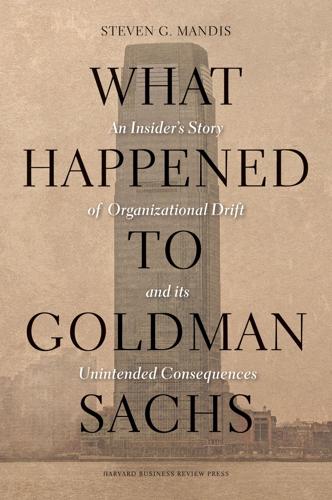
What Happened to Goldman Sachs: An Insider's Story of Organizational Drift and Its Unintended Consequences
by
Steven G. Mandis
Published 9 Sep 2013
Goldman is the top global M&A adviser and underwriter of all IPOs and common stock offerings. The September 11 terrorist attacks have significant economic impacts. The Fed reduced the federal funds rate to 1 percent from 2001 to 2002, leading to a surge in home sales and refinancing. Goldman issues a report on the emerging BRIC (Brazil, Russia, India, and China) economies. 2002: In a faltering economy, with the high degree of consolidation of banks after the repeal of the Glass–Steagall Act, there is media speculation that Goldman could be forced into a merger to remain viable against large competing banks having assets double or triple those of Goldman.
…
Mnuchin 0.600% 1,590,114 84,276,065 111,912,254 Sylvain M. Hefes 0.600% 1,590,114 84,276,065 111,912,254 Thomas K. Montag 0.600% 1,590,114 84,276,065 111,912,254 Wiet H. Pot 0.600% 1,590,114 84,276,065 111,912,254 Byron D. Trott 0.550% 1,457,605 77,253,060 102,586,233 George W. Wellde Jr. 0.550% 1,457,605 77,253,060 102,586,233 Jim O’Neill 0.550% 1,457,605 77,253,060 102,586,233 John J. Powers 0.550% 1,457,605 77,253,060 102,586,233 Michael S. Sherwood 0.550% 1,457,605 77,253,060 102,586,233 Richard S. Sharp 0.550% 1,457,605 77,253,060 102,586,233 Andrew M. Alper 0.525% 1,391,350 73,741,557 97,923,222 Carlos A. Cordeiro 0.525% 1,391,350 73,741,557 97,923,222 Charles B.
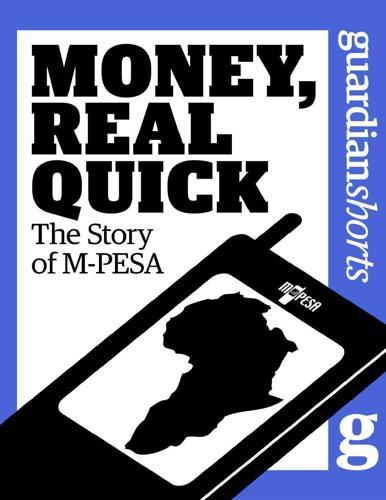
Money, Real Quick: The Story of M-PESA
by
Tonny K. Omwansa
,
Nicholas P. Sullivan
and
The Guardian
Published 28 Feb 2012
It ******ebook converter DEMO Watermarks******* seems only a matter of time before mobile money spreads to all 52 countries in Africa, just as mobile phones did a decade ago. Outside Africa, the countries experimenting with mobile money read like a random list culled from United Nations membership: Haiti, Guatemala, Cambodia, Indonesia, Fiji, Georgia, Jordan, Vietnam, Tonga, Mongolia, Sri Lanka, Bangladesh…. In the so-called BRICs—Brazil, Russia, India, and China—which account for close to half the world’s population, mobile money has yet to take hold. Nokia Easy Pay and Easy Send, in conjunction with YES Bank, is up and running in India, but without scale, and M-PESA is still developing. (“For Vodafone, India will be the biggest market,” says Michael Joseph, who is now director of mobile payments at Vodafone.
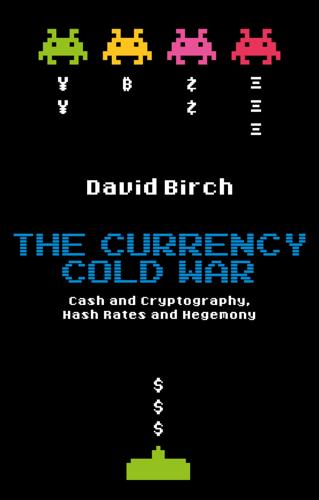
The Currency Cold War: Cash and Cryptography, Hash Rates and Hegemony
by
David G. W. Birch
Published 14 Apr 2020
The Currency Cold War Series editor: Diane Coyle The BRIC Road to Growth — Jim O’Neill Reinventing London — Bridget Rosewell Rediscovering Growth: After the Crisis — Andrew Sentance Why Fight Poverty? — Julia Unwin Identity Is The New Money — David Birch Housing: Where’s the Plan? — Kate Barker Bad Habits, Hard Choices: Using the Tax System to Make Us Healthier — David Fell A Better Politics: How Government Can Make Us Happier — Danny Dorling Are Trams Socialist? Why Britain Has No Transport Policy — Christian Wolmar Travel Fast or Smart?
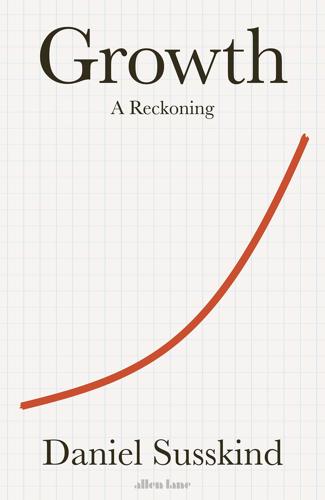
Growth: A Reckoning
by
Daniel Susskind
Published 16 Apr 2024
What that figure indicates is a slowdown everywhere, each line gradually collapsing towards zero, though the timings differ across countries – Japan and Germany in the mid-1990s, the UK, France and the US shortly after. Importantly, this slowdown is unfolding in many places. Figure 2 shows the same calculation for the BRIC group (Brazil, Russia, India and China) plus South Korea. The picture is less clear-cut than in Figure 1 since these countries had volatile and idiosyncratic experiences before 2000 or so. But from then on, the story is very similar: a substantial and sustained slump in growth. Figure 1: 10-year average growth rate of real GDP per capita2 With these numbers in mind, it is unsurprising that leading economists have been pessimistic about our prospects for more than a decade.
…
Abrahamovitz, Moses, 287n31 Acemoglu, Daron, 45, 47, 211 Akerlof, George, 158 ‘Alignment Problem’, 124–7 Allen, Robert, 5–6, 209–10, 278n5 Alphabet (company), R&D (Research & Development), 188 AlphaFold (AI system), 200–2 Amazon, patents, 182 Anfinsen, Christian, 201 anti-globalization movements, 119 Apollo space mission, 189–90 Arrhenius, Svante, 100 artificial intelligence (AI): applications, 108–9; and medicine, 200; ‘paperclip maximiser’ thought experiment, 124–5; social narratives around, 244–5 Athenaeus, 178 Atkinson, Anthony, 104 Attenborough, David, 150 Attlee, Clement, 263 Australia, patents, 182 automation: threat of, 107–10; tradeoffs, 241–5 Autor, David, 116 Bacon, Francis, 46 Bankman-Fried, Sam, 261 Barnes & Noble, 182 Becker, Gary, 36 Beckerman, Wilfred, 160, 167, 222, 313n41 Bell, Daniel, 145 Bell Labs (company), 189 Bellman, Richard, 159 Berlin, Isaiah, 91, 145, 166, 173, 202, 305n53, 320n50 Bernanke, Ben, 76 Berne Convention, 181 Berners-Lee, Tim, 185 Beveridge, William, 77 Bhagwati, Jagdish, 116 Black Death, 16–18 black markets, and GDP, 134–5 Blair, Tony, 115, 268, 311n15 Blake, William, 209 Bohr, Niels, 191 Boisguillenber, Pierre Le Pesant de, 62 Bostrom, Nick, 125, 259 Boulding, Kenneth, 316n3 Bowman, James, 189 Boyle, James, 184 Bretton Woods Conference, 66 BRIC group, 174–5 Britain: Brexit referendum, 263–4; National Health Service (NHS), 128; Office for National Statistics, 134–5 Broadberry, Stephen, 278n10 capital fundamentalism, 30, 33 capitalism, and economic growth, 218–20 Caplan, Bryan, 143 carbon tax, 241 Carroll, Lewis, Through the Looking-Glass, 22 Chang, Ha-Joon, 246 Chang, Ruth, 315n59 China: industrial robots, 211; joins the WTO, 256–7 Chivers, Tom, 150 Chu, Steven, 151 Churchill, Winston, 95, 263 citizen assemblies, 266 Clark, Colin, 64 Clark, Gregory, 4–5, 10, 12–13, 278n5 climate change, and economic growth, 97–101, 235–41 Climate Change Conference (Egypt, 2022), 237 Club of Rome, The Limits of Growth (1972), 153–4 Cold War, and economic growth, 67–73 Coleridge, Samuel Taylor, 14 Collins, Robert, 333n2 communities, cost of globalization, 118–19 comparative advantage, theory of, 114–15 consensus conferences, 266 copyright, 179, 181 Covid-19 pandemic: and key workers, 138; and modelling, 224; technological consequences of, 212–16; vaccine, 200, 214; and work, 75 Cowen, Tyler, 85–6, 175, 187 Coyle, Diane, 293n3 Creative Commons (organization), 185 Daley, William, 293n6 Daly, Herman, Toward a Steady-State Economy (1973), 154 Darwin, Charles, 280n30 DeepMind (company), 189, 200, 202, 244 Deepwater Horizon oil spill (2010), 136 degrowth movement, 149–51 DeLong, Brad, Slouching Towards Utopia, 176 Dene, William de la, 17 Dennett, Daniel, 281n35 Diamond, Jared, Guns, Germs, and Steel, 45–6 Diderot, Denis, 179 digital technology, and political power, 111–14 diminishing returns, law of, 20–2 Domar, Evsey, 28, 58, 73, 285n20, 294n11, 294n12 see also Harrod-Domar model Dorling, Danny, 327n2 Dorsey, Jack, 113 DuPont (company), 189 Dworkin, Ronald, 112 Easterlin, Richard, 86 Easterly, William, 30 econometrics, 42–3 Economist, The (journal), 33 Edward III of England, 17 ‘effective altruism’, 259 Ehrlich, Paul, The Population Bomb (1968), 154 Einstein, Albert, 191, 196 Eliot, T.
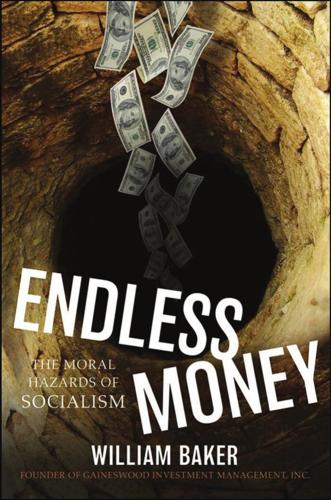
Endless Money: The Moral Hazards of Socialism
by
William Baker
and
Addison Wiggin
Published 2 Nov 2009
But never before has the world seen an event which engulfed the entire planet. We may go down in history as the first generation to live through one, what do you think of that? With the seizure of the credit markets in the fall of 2008, the jig was up for just about every major market in the global economy. The emerging BRIC economies—Brazil, Russia, India, and China—fell in unison with stock markets in the United States, Canada, Great Britain, France, and Germany. The commodities markets, which had been beneficiaries of immense speculation for the better part of the trading year, suddenly dropped, squeezing even the true believers from the market.
…
While the first response of poor people to exposure to newfound wealth may be the instinct of procreation to provide for them in their old age, such customs die off. China once feared a population explosion, but within decades it will experience an aging demographic due to its one-child policy. At first in 2008 Wall Street excitedly embraced the concept that Brazil, Russia, India, and China (the “BRIC” countries) could grow independently of the rest of the world, and in so doing maintain upward pressure on commodity prices. Despite the pressure from integration into the world capitalist system of former communist and socialist states 360 ENDLESS MONEY global demand probably did not expand much more than population growth.

The Great Escape: Health, Wealth, and the Origins of Inequality
by
Angus Deaton
Published 15 Mar 2013
Is this because they are large, or is it simply that the two countries that did so well happened to be the largest? Other large countries have also outperformed the world average, at least over some periods, though none have equaled China’s staying power. Examples are Brazil, Indonesia, Japan, Russia, and the United States. The “BRIC” countries (Brazil, Russia, India, and China) certainly reap some advantages from their size. A diplomatic corps, a competent bureaucracy, a few well-trained leaders, and the faculty of a world-class university cannot all be filled with only a handful of good people, and larger countries have larger pools from which to choose.
…
See also individual countries Attenborough, Richard, 2, 269 Australia, lung cancer mortality rates in, 134–35, 134f Bangladesh: life expectancies in, 27, 36; refugee camps in, 10, 104; war in, 271; women’s heights in, 160 bankers, 208–9, 211, 213 Bartels, Larry, 212 Bauer, Peter, 273 Bhagwati, Jagdish, 318–19 Birdsall, Nancy, 316 birth rates: contraception and, 241, 246–47; decreases in, 155–56, 243, 244–45, 246–47; education and, 105; in prehistory, 75, 80. See also population growth births, registration of, 71–73, 81 Blair, Tony, 144 body sizes: nutrition and, 91–92; obesity, 83, 141, 148. See also heights Boserup, Esther, 79 Botswana, 34, 108, 234, 286 Brandeis, Louis, 213 Bray, Bernice E., 158 Brazil, 19, 20, 237, 259 BRIC countries, 237. See also Brazil; China; India; Russia Britain: aristocratic families in, 82–83, 82f, 87, 93; cardiovascular disease in, 136–37, 136f; Department for International Development, 274; empire of, 5, 9–10; Enlightenment in, 10; foreign aid of, 275, 302; health care spending in, 121; Industrial Revolution in, 4, 5, 9–10, 94–95, 97–98, 100; life expectancies in, 67, 70, 81–83, 82f, 87–90, 88f, 90f, 94–95; Marmite in, 99, 226–27; National Health Service of, 138, 144; parish records of, 81; pursuit of wealth in, 55; royal family of, 85, 87; smallpox in, 81, 84–86; vital registration system of, 72 Broome, John, 81 Browne, E.
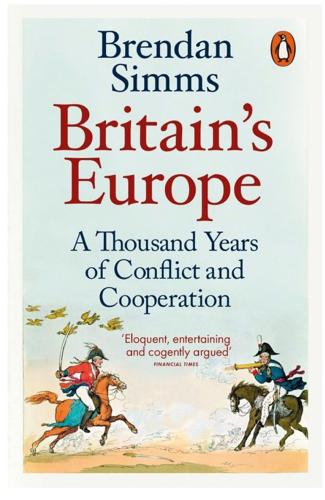
Britain's Europe: A Thousand Years of Conflict and Cooperation
by
Brendan Simms
Published 27 Apr 2016
– Tony Blair, Bridgewater Hall speech, 1997 Until recently, it was generally regarded as axiomatic in our ‘post-post Cold War’ world that the new global power centres lie, or will soon lie, to the east and to the south. For more than a decade now, analysts have traced the rise of the BRICS – Brazil, Russia, India and China – noting their surging GDPs, increasing confidence in International Organizations and mounting military expenditures.3 A fearsome array of statistics boosts these claims and predictions.4 Some foresaw a ‘new Asian hemisphere’.5 The west, by contrast, was held to be in precipitate decline.6 In the United States, the skies seemed to darken with chickens coming home to roost: there was imperial overstretch abroad, lack of investment and innovation at home.
…
Britain’s unique military selling point of high-quality, low-intensity warfare is no more, at least for the time being, even if the appetite for deployment within the forces remains high. Her support of President George W. Bush’s war in Iraq was widely derided as the behaviour of a ‘poodle’ rather than a ‘bulldog’.18 The British economy was scrambling to keep up with the growth of the BRICS.19 India even contemptuously rejected London’s development aid, in a gesture of new-found confidence. All in all, there are plenty of plausible arguments for British decline, all of which are regularly rehearsed by the local cottage industry on the subject. In fact, reports of British decline are far from new, are premature and unlikely to be vindicated in the foreseeable future.
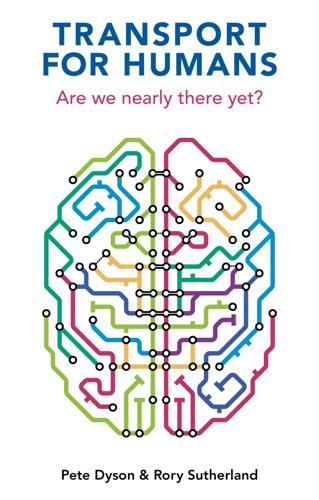
Transport for Humans: Are We Nearly There Yet?
by
Pete Dyson
and
Rory Sutherland
Published 15 Jan 2021
Transport for Humans Series editor: Diane Coyle The BRIC Road to Growth — Jim O’Neill Reinventing London — Bridget Rosewell Rediscovering Growth: After the Crisis — Andrew Sentance Why Fight Poverty? — Julia Unwin Identity Is The New Money — David Birch Housing: Where’s the Plan? — Kate Barker Bad Habits, Hard Choices: Using the Tax System to Make Us Healthier — David Fell A Better Politics: How Government Can Make Us Happier — Danny Dorling Are Trams Socialist? Why Britain Has No Transport Policy — Christian Wolmar Travel Fast or Smart?
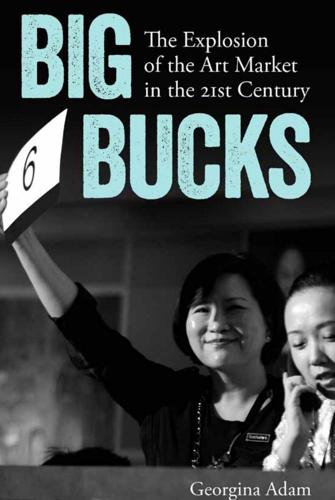
Big Bucks: The Explosion of the Art Market in the 21st Century
by
Georgina Adam
Published 14 Jun 2014
As the Malaysian gallerist Valentine Willie told the Straits Times: ‘Hong Kong is just where the action is . . . The EDB [Singapore’s Economic Development Board] of all agencies should understand basic economics: you can’t manufacture demand.’ 184 INDIA – THE UGLY DUCKLING? As one of the BRIC (Brazil, Russia, India and China) nations, and with a burgeoning population of 1.2 billion (2011 census) and a growing middle class, India should be the natural challenger to China. It has a growing group of affluent consumers – what McKinsey and Co calls ‘the global Indians’ – businessmen, landowners and high-end professionals, who represent some 1.2 million households.
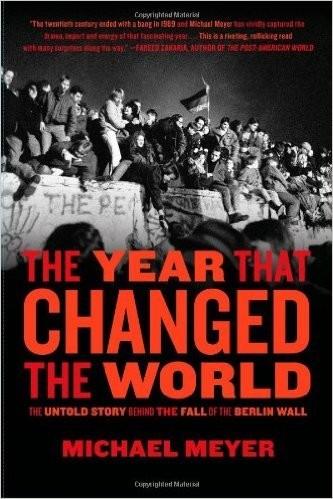
The Year That Changed the World: The Untold Story Behind the Fall of the Berlin Wall
by
Michael Meyer
Published 7 Sep 2009
Fareed Zakaria brilliantly sketches out the perils—and opportunities—of this new global landscape in The Post-American World, 2008. See also Leslie H. Gelb, Power Rules: How Common Sense Can Rescue American Foreign Policy, HarperCollins (2009). The quantitative backstopping for my brief discussion of this theme came partly from an article in the Financial Times, June 27, 2008, by Robert Hormats and Jim O’Neill at Goldman Sachs, “A New World for America’s Next President.” The caveat is this: The administration of George W. Bush did not create the myth of American triumphalism, even if his White House elevated it to cult status. Americans bear a collective responsibility, and no fresh start or clean slate is possible under a new president without that recognition.
…
See North Atlantic Treaty Organization (NATO) Nazi Germany, 210–211 Nazi SS headquarters (Berlin), 15–16 NBC (television network), 9 Nemeth, Miklos, 145 background of, 28, 32 fall of communism in Hungary and, 28, 29–30, 41–42, 67, 69–73, 144–145, 206–207, 228–231, 236 Gorbachev and, 55–58, 60–61, 63, 73, 226–228 as Hungarian prime minister, 28, 32–33, 36–38, 41–42, 43, 73 Pan-European Picnic (1989) and, 97–104, 231–232 reburial of Imre Nagy and, 85–87 refugees from GDR and, 97–104, 104–105, 113–126 at Warsaw Pact summit (Bucharest; 1989), 91–95 Neruda, Pablo, 185 Neues Forum (New Forum), 152 New Forum (GDR), 172–173, 178 Newsweek, 23, 31, 89, 108, 110–111, 116, 128, 132, 140, 161, 167, 184, 214, 217, 221, 225, 228, 230–231, 232, 234 Newsweek International, 223, 224, 232 New World Order, 213 New York Review of Books, 237, 238 New York Times, 4, 222, 229 New York Times Magazine, 222, 237 Nicaragua, 210 Niedzielak, Stefan, 51 Niekro, Phil, 94 Nixon, Richard, 106 Nobel Peace Prize, 47, 135, 204 North Atlantic Treaty Organization (NATO) Balkan wars and, 213–214 Cold War and, 21 Fulda Gap and, 18, 76–77, 210 Hungary and, 57 Kosovo and, 47 nuclear deterrence, 60–61, 74–78 Warsaw Pact and, 19–20 North Korea, 217 Nowa Huta, 51–52 Nuclear Audit (Brookings Institution), 22–23, 223–224 nuclear deterrence/disarmament, 5, 12–13, 21, 55–58, 60–63, 72, 74–78, 207, 229, 237–238 Oberdorfer, Don, 225 Office on Intra-German Affairs concerning Deutsche Einheit, 24 O’Neill, Jim, 238 O’Neill, Paul, 237 One Percent Solution (Suskind), 237 Onyszkiewicz, Janusz, 225, 230, 233 Operation Fortitude, 28 Orban, Viktor, 87–88 Order No. 2, 25 Orient Express, 203 Ossies, 118 Ostpolitik, 23 Palach, Jan, 139 Palmer, Mark, 63, 144, 233 Pan Am flight 103, 39 Pan-European Picnic (1989), 97–104, 106, 116, 124, 144, 231–232 Papi (Erich Honecker).
…
The former president’s baseball glove from his college days is lovingly displayed, along with bats, balls, uniforms and photos of the star Yale athlete running, diving, catching and lounging—just a few of the two million photos, ten thousand videos, innumerable souvenirs and mementos documenting his life. The 1947 Studebaker in which he drove to Texas is there, not to mention the plane he flew as a pilot during the war and the cigarette boat in which he liked to race around Kennebunkport, Maine. Then, amid all this boy-racer bric-a-brac, one comes across something much more serious: a slab of the Berlin Wall, encased in Plexiglas. An accompanying video explains what it represented and how it came to fall, with America and the Bush administration very much at the center of the narrative. Lest one miss the point, a massive bronze sculpture of a herd of wild horses, unbridled and free, stands outside the library doors.

The Relentless Revolution: A History of Capitalism
by
Joyce Appleby
Published 22 Dec 2009
Before the World Trade Organization’s Doha talks collapsed in 2008, both India and China were invited to join a new group of seven industrialized nations, which will include the United States, the twenty-seven nations in the European Union, Brazil, Australia, and Japan. In the lingo of Wall Street investors, the BRICs, the emerging markets of Brazil, Russia, India, and China, are hot. In 2007 India, China, and Brazil produced the most millionaires, proof of their prosperity as well as of the unequal rewards of the capitalist system.47 The downside of being hot emerged for the emerging markets in 2008, when foreign investors, short on cash, began withdrawing their money to cover their leveraged debts back home.
…
Of the six billion people living today, one-sixth of them are in advanced capitalist economies, another four billion are in developing countries, and the remaining billion live in countries with stalled economies.23 World Bank figures for 2005 indicate that 1.4 billion people live below the poverty line, earning less than $1.25 a day. Unlike the backward, underdeveloped Third World nations of yore, the bottom billion today live in particular countries—fifty-seven in fact—that are treading water while the world around them is swimming toward development, even during a world recession. They are not the BRICs (Brazil, Russia, India, and China), which have won attention as “emerging markets.” Instead they are “failed states” that have begun to wear out the patience of philanthropists and test the imagination of aid organizations. Today more money is pouring into combating disease than into promoting economic change, evidence of a certain despair about development.

Connectography: Mapping the Future of Global Civilization
by
Parag Khanna
Published 18 Apr 2016
Under the rubric of “Big Society,” London’s new devolution plan provides infrastructure loans to cities such as Manchester and Sheffield to develop their own urban regeneration plans and skills programs. But these are loans, not grants or investments; they must be paid back. The former Goldman Sachs executive Jim O’Neill has called for the creation of a super-region called “ManSheffLeedsPool” that would invest these funds into connective rail corridors between them while pushing for Scotland-like autonomy. Demographics further ensure that devolution will continue to remap Britain, even in areas it has fought for decades to control.
…
The Next Global Stage: Challenges and Opportunities in Our Borderless World. Wharton School Publishing, 2005. Olsthoorn, Xander, and Anna J. Wieczorek, eds. Understanding Industrial Transformation: Views from Different Disciplines. Springer, 2006. O’Neill, Jim. The Growth Map: Economic Opportunity in the BRICs and Beyond. Portfolio Hardcover, 2011. Ooi, Kee Beng. The Eurasian Core and Its Edges: Dialogues with Wang Gangwu on the History of the World. Institute of Southeast Asian Studies, 2015. Osnos, Evan. Age of Ambition: Chasing Fortune, Truth, and Faith in the New China. Farrar, Straus and Giroux, 2014.
…
Together: The Rituals, Pleasures, and Politics of Cooperation. Yale University Press, 2012. Senor, Dan, and Saul Singer. Start-Up Nation: The Story of Israel’s Economic Miracle. Twelve, 2011. Seung Ho Park, Nan Zhou, and Gerardo R. Ungson. Rough Diamonds: The Four Traits of Successful Breakout Firms in BRIC Countries. Jossey-Bass, 2013. Sharma, Ruchir. Breakout Nations: In Pursuit of the Next Economic Miracles. W. W. Norton, 2013. Sharma, Vivek. “Give Corruption a Chance.” National Interest, Nov. 2013. Simpfendorfer, Ben. The Rise of the New East: Business Strategies for Success in a World of Increasing Complexity.

Traders, Guns & Money: Knowns and Unknowns in the Dazzling World of Derivatives
by
Satyajit Das
Published 15 Nov 2006
Mavakanond was a scapegoat; Asia was back to its old tricks. Things had changed, the focus was different this time. The ‘tigers’ of South East Asia had given way to the Chinese ‘tiger’ (the Amur tiger that had once roamed China was actually long extinct). Most companies now were into BRIC – Brazil, Russia, India and China. Investors were all throwing money at these countries; businesspeople spoke in awe of the potential of the Chinese ‘dragon’. I had always thought that the dragon was a mythological creature. China reported growth of 8.00% pa exactly each quarter; the accuracy, precision and speed with which the figure was published were commendable.
…
I wondered if he had bought himself an electric pencil sharpener. BOAT (Best of all time) Several ‘new age’ traders were in a bar drinking; some things hadn’t changed. Headlines in the appropriately pink FT (Financial Times) proclaimed that Brazilian bonds had fallen; Brazil, it seemed, was about to hit a ‘BRIC’ wall. The traders’ talk was also about ‘Brazilians’; the total depilation of the nether regions of a woman leaving only the briefest ‘landing strip’. One of the men was considering the male version – the ‘sac to crack’. Traders like to discuss everything with other traders; in trading rooms, this is the normal code of behaviour.

Broken Markets: A User's Guide to the Post-Finance Economy
by
Kevin Mellyn
Published 18 Jun 2012
Work will migrate to where enterprises find the best combination of 123 124 Chapter 6 | The Consumer in the World After Finance costs, skills, and flexibility. That is why nearly half the world’s manufacturing output is now in greater China. The result is that perhaps a billion people can now lead basic middle-class lives in the so-called BRIC countries of Brazil, Russia, India, and China, places that scarcely had a middle class a generation ago. Overall, this means that the global economic pie is getting larger rapidly, but the share enjoyed by Western consumers is not growing. In their role as producers and wage earners, American and other Western workers are still vastly too costly for firms facing global competition to employ them.

Investing Demystified: How to Invest Without Speculation and Sleepless Nights
by
Lars Kroijer
Published 5 Sep 2013
But in doing that I would implicitly be claiming that Europe and the US would have a better risk/return profile than the rest of the world. This might or might not turn out that way, but the point is that we don’t know ahead of time. Or you could find yourself making statements like, ‘I believe the BRIC (Brazil, Russia, India and China) countries are set to dominate growth over the next decades and are cheap.’ Perhaps you’d be right, but you would also be saying that you know something that the rest of the world has not yet discovered. This does not make sense unless you have an edge. The advantage of diversification The world equity portfolio is the most diversified equity portfolio we can find.
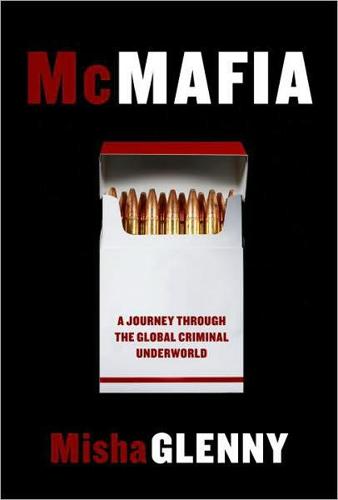
McMafia: A Journey Through the Global Criminal Underworld
by
Misha Glenny
Published 7 Apr 2008
There are several prerequisites, but three are paramount: steep levels of poverty and unemployment; a high standard of basic education for a majority of the population; and a strong presence of more traditional organized crime forms. Nobody fits the bill better than the so-called BRIC nations—Brazil, Russia, India, and China. These are the leading countries among the emerging markets, the second tier of global power after the G8 (though politically Russia straddles the two). South Africa is regarded as a reserve player in the BRIC grouping because although a regional giant like the others, it cannot compete economically. It also fails as a cybercrime center because its standards of education have yet to recover from the damage inflicted by apartheid (see chapter 12).

The Making of Global Capitalism
by
Leo Panitch
and
Sam Gindin
Published 8 Oct 2012
In the context of the Asian crisis it was widely predicted that manufacturing unemployment would soar as Korean, Thai, Indonesian, and other currencies were devalued, but this lowered consumer prices in the US without any significant impact on US production, except for the steel industry.64 China’s entry into the WTO considerably changed the overall picture, but while US manufacturing job losses were indeed heavy after 2001 (especially in auto and electrical appliances, as well as the long-suffering textile and apparel sector), the US was still producing more manufactured goods and receiving more foreign investment in 2007 than all the BRICs (Brazil, Russia, India, and China) combined.65 Rather than taking the US trade deficit as a measure of industrial decline, it is instructive to consider US exports and imports separately. The growth in the volume of US exports in the two decades up to 2007—even as the trade deficit accumulated—averaged a very robust 6.6 percent, leaving it only marginally behind Germany and China, the world’s largest exporters; it was the relative expansion of US imports that was the source of the growing deficit.66 The deficit, in other words, primarily came from increased US consumption, which grew faster than in other advanced capitalist countries.
…
This was because European governments had already been forced to move so far in the direction of austerity by the toll financial markets had exacted on the bond sales that many of them needed to cover fiscal deficits following the bailouts of their banks and decline in tax revenue. It was capitalism’s emerging market states that experienced significant inflation (ranging from 15 to 30 per cent in Brazil, Russia, India, and China in 2010–11); this was spurred by higher growth rates, and monetary policies that could not stray far from the objective of keeping currencies aligned with the dollar. Indeed, whatever grumblings were evinced, and whatever fantasies of an alternative reserve currency were concocted, the US monetary policy turn did not result in a substantive challenge to the role of the dollar and the centrality of the Federal Reserve as the world’s global banker.90 As an advisor to the People’s Bank of China put it: “It’s ironic isn’t it?
…
But criticisms such as those repeatedly heard in 2011 from Brazil—that US policy might lead to “currency wars”—amounted to nothing like a challenge to US hegemony. The notion that the G20 would effectively become the linchpin of crisis-management and policy-coordination appeared mere window dressing by the time of the Cannes summit in the fall of 2011, with the BRIC countries left to insist that whatever financial contributions they might make to the European bailout would be channeled through an IMF still dominated by the G7, and especially the US Treasury. The most significant change from the pattern of crisis-management in the 1980s and 1990s was that, whereas it had earlier been the developing states that were required to practice austerity, the prescription of a capitalist cure for this structural crisis was reversed: the G7 states now committed themselves to austerity, while encouraging the emerging market states to stimulate their economies.
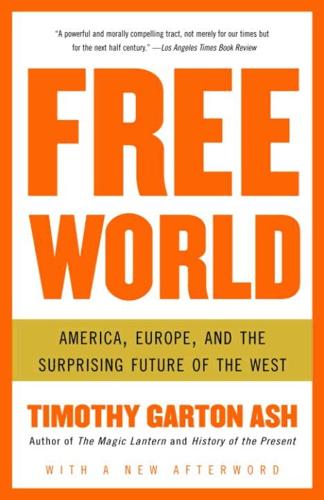
Free World: America, Europe, and the Surprising Future of the West
by
Timothy Garton Ash
Published 30 Jun 2004
When using purchasing power parities, the United States exceeds only the next five powers, with China, India, and Russia now coming before France and Britain (p. 305), but such a reckoning clearly understates its cumulative and technological advantage. I am most grateful to Marrack Goulding for drawing my attention to these careful calculations. 82. See Dana Priest, The Mission: Waging War and Keeping Peace with America’s Military (New York: Norton, 2003), p. 70. 83. See, for example, the projections in Goldman Sachs, Dreaming with BRICs: The Path to 2050, Global Economics Paper No 99, on http://www.gs.com. 84. See the British Foreign Office projections, based on Economist Intelligence Unit data, in UK International Priorities: A Strategy for the FCO (London: The Stationery Office, 2003), p. 16. 85. Thomas Jefferson writing to William Short, July 28, 1791, in The Writings of Thomas Jefferson (Washington, D.
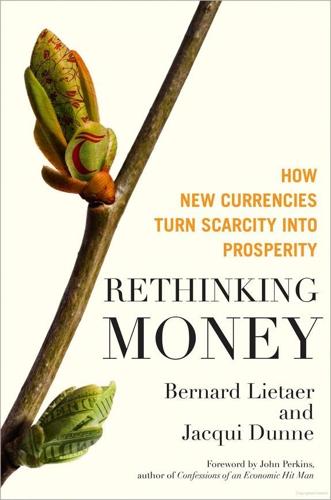
Rethinking Money: How New Currencies Turn Scarcity Into Prosperity
by
Bernard Lietaer
and
Jacqui Dunne
Published 4 Feb 2013
Currently, as infrastructure crumbles in the United States and in many other nations, and the availability of high-quality education and health care plummets, with massively underfunded liabilities, the stark statistics still don’t tell the full story of America’s sons and daughters and, indeed, the entire global family as it grapples with an uncertain future. The situation is particularly dire in Europe: Greece, Spain, Ireland, the United Kingdom, and Italy are in a credit crunch not seen in generations. Even in the countries that were up until recently considered booming, nations like the BRICs—Brazil, Russia, India, and China— development was highly uneven, with entire regions experiencing scarcity and need. Now it would appear that their economic bloom is wilting.10 Practically everywhere one finds many tales of how the highly competitive nature of the conventional money system influences our lives. REQUIEM FOR A DREAM It takes a moment to get over the initial shock of seeing Fred bagging groceries in a popular national grocery store outlet.
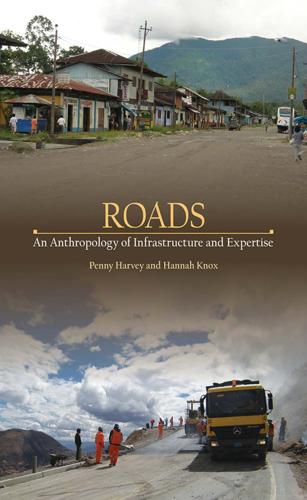
Roads: An Anthropology of Infrastructure and Expertise (Expertise: Cultures and Technologies of Knowledge)
by
Penny Harvey
and
Hannah Knox
Published 22 Jun 2015
Ocongate was not the only village facing the prospect of a new road in its midst. Across the planet, roads are being built in developing nations as part of larger projects aimed at investing in infrastructural systems to support economic growth and modernization. Leading the way have been the so-called BRIC countries—Brazil, Russia, India, and China, which economists group together because they are all deemed to be at a comparable stage of economic development—but other developing nations are also involved, thanks largely to the fact that international lenders such as the World Bank are increasingly committed to offering development support via infrastructural investment.
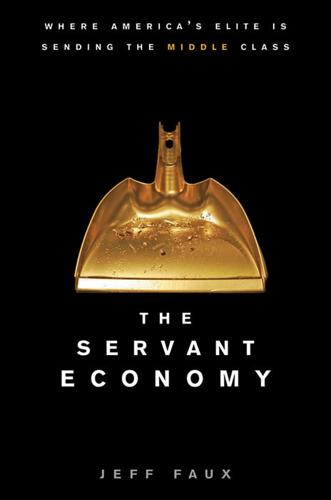
Servant Economy: Where America's Elite Is Sending the Middle Class
by
Jeff Faux
Published 16 May 2012
In the Pentagon’s, a higher valued dollar makes it less costly to maintain its bases, its foreign missions, and its wars. Sooner or later, as the U.S. economy naturally shrinks in importance, the dollar will have to give way as the world reserve currency. Already, the leaders of the BRIC nations—Brazil, Russia, India, and China—have called for a new global credit system managed by the International Monetary Fund (IMF) or a new institution and based on a basket of currencies, which would diminish the dollar’s global importance. But this would be an enormously complex process that would take at least a decade of negotiation among the world’s two hundred and some nations—starting with a commitment from the United States.
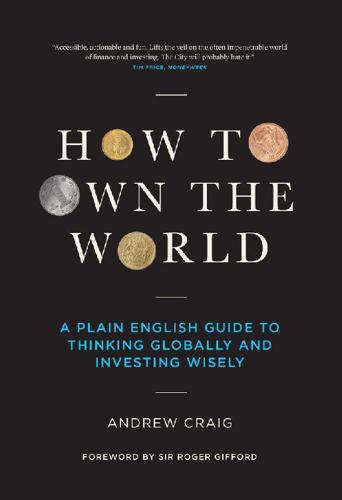
How to Own the World: A Plain English Guide to Thinking Globally and Investing Wisely
by
Andrew Craig
Published 6 Sep 2015
Today, further technological developments, primarily in telecommunications and travel, mean that a tidal wave of people from scores of different countries are now competing with Westerners for highly paid jobs in a wide range of white-collar sectors: IT, engineering, and business services such as finance and consultancy. All of this has driven very strong economic growth in the developing world, most notably in the BRIC countries – Brazil, Russia, India and China – but in many others too: the MINT countries of Mexico, Indonesia, Nigeria and Turkey; Thailand, Singapore and many other parts of Asia; multiple South and Central American countries; several parts of the Middle East; and, more recently, some of the more stable African nations.
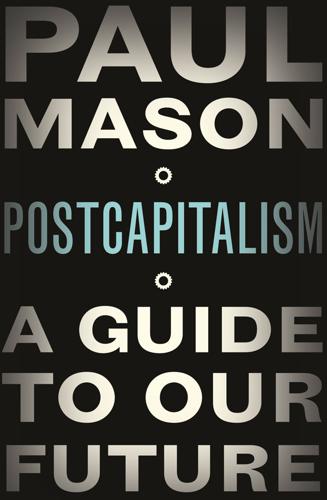
Postcapitalism: A Guide to Our Future
by
Paul Mason
Published 29 Jul 2015
This is a technique common in European speculative thought: to invent a category and apply it to everything, thus reclassifying all existing things as sub-categories of your new idea. It saves you the trouble of analysing complex and contradictory realities. It leads cognitive capitalism theorists to underestimate the importance of the rise of old-style industrial production in the BRIC (Brazil, Russia, India and China) countries, and for some to downplay the significance of the post-2008 financial crisis, or to see it as merely the teething troubles of the newborn system. In fact, the system we live in is not a new, coherent and functioning form of capitalism. It is incoherent. Its tense, febrile and unstable character comes from the fact that we’re living in an age of the network alongside the hierarchy, the slum alongside the web café – and to understand the situation we have to see it as an incomplete transition, not a finished model.
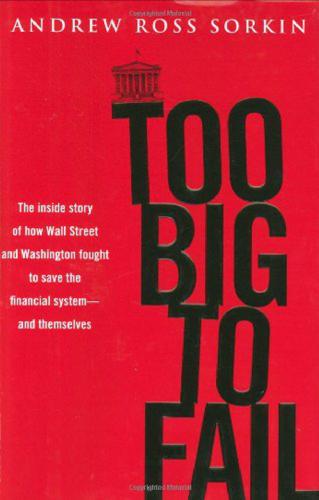
Too big to fail: the inside story of how Wall Street and Washington fought to save the financial system from crisis--and themselves
by
Andrew Ross Sorkin
Published 15 Oct 2009
Russia was pumping out millions of barrels a day: The International Energy Agency said that as of June 11, 2008, Russia was producing 9.5 million barrels of oil per day. Jason Bush, “Prime Minister Putin Primes the Pump,” BusinessWeek, June 30, 2008. who had coined the appellation for those four economies: Goldman’s chief economist Jim O’Neill, leading a team from the firm, created the acronym in 2001, when they were making growth predictions about the four emerging markets. See Dominic Elliott, “Fundamentals Drive the ‘BRIC’ Rebound,” Wall Street Journal, July 27, 2009. defaulting on the nation’s debt: “On August 13, with dollars fleeing the country, its reserves dwindling, its budget overtapped, and the price of oil, its chief commodity, down 33 percent, the government imposed controls on the ruble.”
…
For a moment, it could make anyone forget about the problems back in the United States. Every year the board of Goldman took a four-day working trip abroad, and since being handed the reins of the firm from Hank Paulson two years earlier, Blankfein had insisted that they meet in one of the new emerging economic giants, one of the BRIC nations: Brazil, Russia, India, or China. It seemed only appropriate: It had been one of Goldman’s economists who had coined the appellation for those four economies, to which the world’s wealth and power were now shifting. To Blankfein it was a matter of walking the talk. St. Petersburg was only the first part of the trip, where they’d be given an update on the firm’s finances and have a strategy-review session; it would be followed by two days in Moscow.
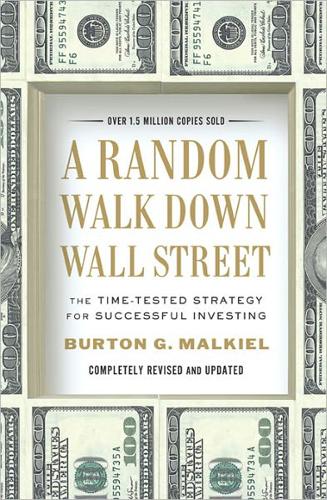
A Random Walk Down Wall Street: The Time-Tested Strategy for Successful Investing
by
Burton G. Malkiel
Published 10 Jan 2011
But over that same decade, investors who included equities from emerging markets (which were easily available through low-cost, broadly diversified emerging-market equity index funds) enjoyed quite satisfactory equity investment performance. The following graph shows that an investment in the S&P 500 actually lost money during the first decade of the 2000s. But investment in a broad emerging-market index produced quite satisfactory returns. And investment in the BRIC countries (Brazil, Russia, India, and China) produced quite generous returns. Broad international diversification would have been of enormous benefit to U.S. investors, even during “the lost decade.” DIVERSIFICATION INTO EMERGING MARKETS HELPED DURING “THE LOST DECADE”: CUMULATIVE RETURNS FROM ALTERNATIVE MARKETS Source: Vanguard, Datastream, Morningstar.
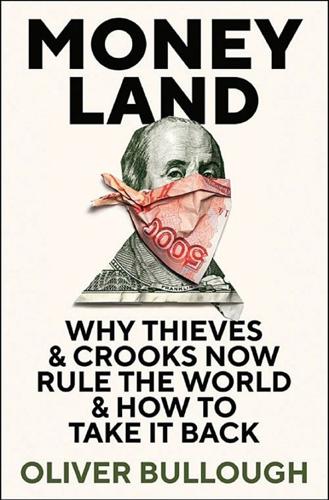
Moneyland: Why Thieves and Crooks Now Rule the World and How to Take It Back
by
Oliver Bullough
Published 5 Sep 2018
‘Like them or not, these are individuals who have only one thing in common, staggering net worth, and have become the world’s new ruling class. Typically in their first generation of wealth, they’ve made huge money in new ways … the newest of the new rich come from emerging markets such as the so-called BRIC nations of Brazil, Russia, India, and China.’ Of course, most of the apartments are owned via anonymous corporate vehicles, so the precise identity of these aristocrats remains largely hidden, but Gross still identifies properties belonging to Israelis and Koreans, as well as to Russians, Greeks, Indians, South Americans, Italians and a Senegalese mobile phone tycoon.
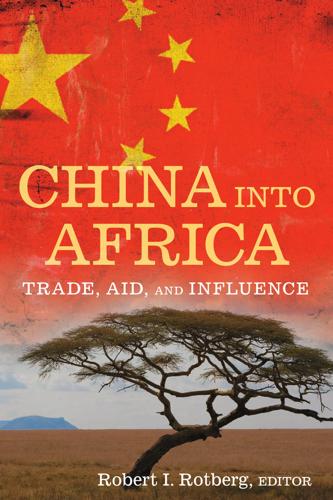
China into Africa: trade, aid, and influence
by
Robert I. Rotberg
Published 15 Nov 2008
“Zambia-China Deals on DANWEI Website,” People’s Daily (19 November 2006); interview between Chris Burke, research fellow, Centre for Chinese Studies, Stellenbosch University, and a government official, Lusaka, Zambia (16 May 2007). 22. Davies and others, How China Delivers, 53. 23. Goldman Sachs’s N-11 (Next-Eleven) report provides a list of the top eleven emerging economies in terms of investment potential and economic growth. See Jim O’Neill and others, “How Solid Are the BRICs?” Global Economics Paper 134 (1 December 2005). 24. Matthew Green, “Nigeria Banks Seek Bigger Stage,” Financial Times (30 October 2007), available at http://us.ft.com/ftgateway/superpage.ft?news_id=fto10302007 1819291105&page=2 (accessed 20 May 2008). 25. This Day (21 September 2007). 26.
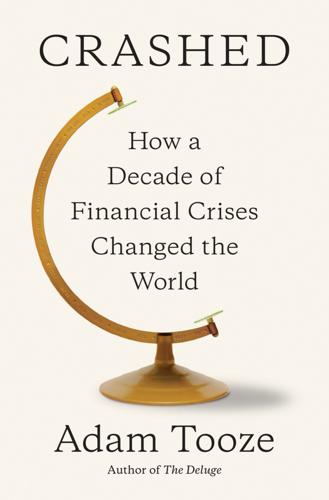
Crashed: How a Decade of Financial Crises Changed the World
by
Adam Tooze
Published 31 Jul 2018
“[T]he international landscape is so varied and changes so quickly—changes in light of the dynamic development in a whole number of countries and regions. . . . The combined GDP measured in purchasing power parity of countries such as India and China is already greater than that of the United States. And a similar calculation with the GDP of the BRIC countries—Brazil, Russia, India and China—surpasses the cumulative GDP of the EU. And according to experts this gap will only increase in the future. . . . There is no reason to doubt that the economic potential of the new centres of global economic growth will inevitably be converted into political influence and will strengthen multipolarity.”
…
Lardy, Sustaining China’s Economic Growth (New York: Columbia University Press, 2012). 33. A. Collier, Shadow Banking and the Rise of Capitalism in China (Singapore: Palgrave Macmillan, 2017). 34. N.-L. Sum, “A Cultural Political Economy of Crisis Recovery: (Trans-) National Imaginaries of ‘BRIC’ and Subaltern Groups in China,” Economy and Society 42 no. 4 (2013), 543–570. 35. Schmidt and Heilmann, “Dealing with Economic Crisis in 2008–2009.” 36. C. Wong, “The Fiscal Stimulus Program and Problems of Macroeconomic Management in China,” 2011, https://www.oecd.org/gov/budgeting/48143862.pdf; and C.

Be Your Own Financial Adviser: The Comprehensive Guide to Wealth and Financial Planning
by
Jonquil Lowe
Published 14 Jul 2010
Alternatively funds investing direct in commercial property. Income. Shares in companies across the world. Growth. Equity global Growth. Asset mix. Asset mix. Equity – specified countries Shares in companies in a specified country Growth. or geographical region, such as Europe, Asset mix. Japan, BRIC (Brazil, Russia, India and China). Equity – sector Shares in companies in particular sectors, Growth. such as pharmaceuticals or mining. Equity – smaller companies Shares in relatively young companies that are expected to grow. Growth. Equity – emerging markets Shares in companies in countries that are undergoing rapid development and expected to deliver high growth, such as India and China.
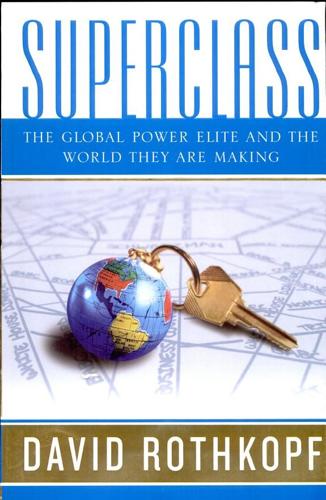
Superclass: The Global Power Elite and the World They Are Making
by
David Rothkopf
Published 18 Mar 2008
Goldman’s influence extends beyond the ability of its analysts and traders to drive stock or bond prices up and down, as they do daily with the reports they write and the decisions they make to buy or sell securities. The firm shapes new views of the world, as it did in 2003, for example, with its suggestion that Brazil, Russia, India, and China were a special class of emerging markets they called BRICs that would become especially important in the decades ahead. It creates new financial instruments that shape the global marketplace, it can make or break the CEOs and government ministers who regularly pass through its doors looking for capital and for “buy” recommendations linked to their decisions, and it serves as the hub of an international network of deal makers.
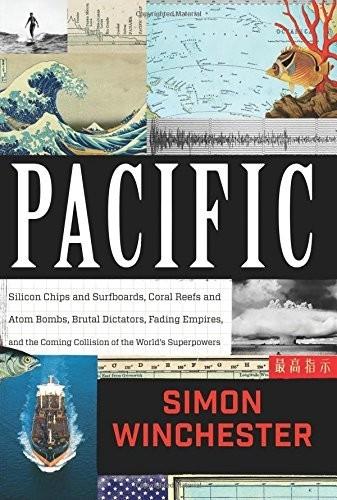
Pacific: Silicon Chips and Surfboards, Coral Reefs and Atom Bombs, Brutal Dictators, Fading Empires, and the Coming Collision of the World's Superpowers
by
Simon Winchester
Published 27 Oct 2015
How this single debate plays out over the coming years will offer some indication of just how the Pacific Ocean is going to be regarded in the future—by outsiders who see it mainly as a major resource to be exploited, and by those who live there and have long drawn their sustenance from it and wish to see it treated with proper reverence and care. The arguments are complex on many levels. To limit the professed worldwide need for copper, say (the kind of copper that Nautilus plans to claw up from one of its chosen undersea fields), the most acceptable solution seems always to be: to lean on the BRIC countries (Brazil, Russia, India, and China) and all other such developing countries to limit their use of the metal, to lower their populations’ expectations, and to wind back such standards of living as depend on the use of copper—and in today’s high-technology consumer world, that is a huge number of uses. Not unsurprisingly, the citizens of these countries cry foul.
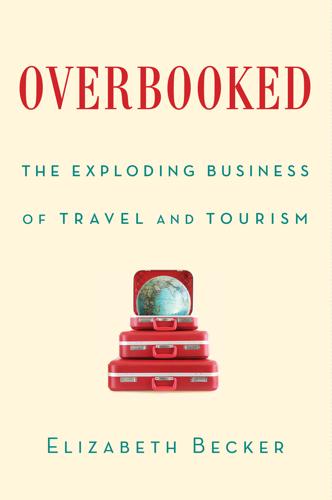
Overbooked: The Exploding Business of Travel and Tourism
by
Elizabeth Becker
Published 16 Apr 2013
A major political decision had already been taken when the now-hundred-member-strong WTTC selected Brazil as the site of the summit. It was the first time a South American country had been chosen for the prestigious gathering. Brazil, though, isn’t just a South American country. As one of the countries known collectively as BRIC (Brazil, Russia, India and China), it is one of the four major developing nations whose wealth is shifting the centers of power and influence around the world. And, with the conference’s emphasis on sustainable tourism and the environment, Brazil and its endangered Amazon Basin was an ideal choice. Grateful for this honor, Brazilian President Luiz Inácio Lula da Silva opened up the conference with a stirring address.
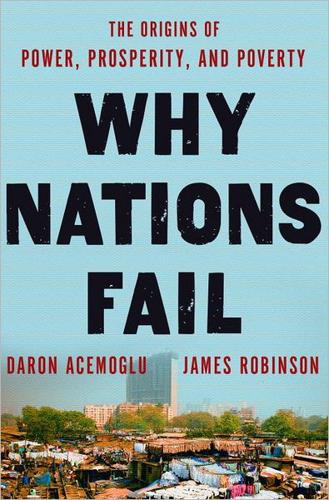
Why Nations Fail: The Origins of Power, Prosperity, and Poverty
by
Daron Acemoglu
and
James Robinson
Published 20 Mar 2012
Inequality, which rose rapidly under the military, has fallen sharply, particularly after the Workers’ Party took power, and there has been a huge expansion of education, with the average years of schooling of the population increasing from six in 1995 to eight in 2006. Brazil has now become part of the BRIC nations (Brazil, Russia, India, and China), the first Latin American country actually to have weight in international diplomatic circles. THE RISE OF BRAZIL since the 1970s was not engineered by economists of international institutions instructing Brazilian policymakers on how to design better policies or avoid market failures.
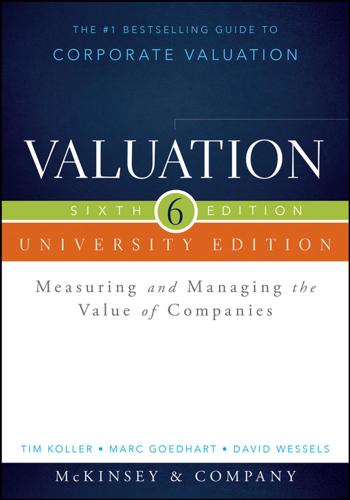
Valuation: Measuring and Managing the Value of Companies
by
Tim Koller
,
McKinsey
,
Company Inc.
,
Marc Goedhart
,
David Wessels
,
Barbara Schwimmer
and
Franziska Manoury
Published 16 Aug 2015
Some economists warn of a return to such 473 474 INFLATION EXHIBIT 22.1 Historical Inflation Rate in Developed and Emerging Economies Annual CPI-based inflation rate, % Japan Eurozone Low-inflation economies United States 30 20 10 0 1970 97 1975 1980 1985 1990 1995 2000 2005 2010 2013 –10 High-inflation economies China Russia Brazil India 30 20 10 0 1970 97 1975 75 1980 1985 1990 1995 2000 2005 2010 2013 –10 Source: World Market Monitor. levels as government deficits have risen rapidly across developed economies.1 And in many of the fast-growing economies of Latin America and Asia, such as the BRIC countries (Brazil, Russia, India, and China), inflation has been at double-digit levels for many years. In stark contrast, Japan has experienced extremely low inflation and even deflation since the early 1990s. Inflation often persists, stretching over several years as it did during the 1970s and 1980s, because suppressing it requires strict and unpopular government measures.
…
Are these benefits actually realized by companies? Part Five Special Situations 31 Emerging Markets∗ Over the past decade, emerging economies in Asia, South America, Eastern Europe, and Africa grew impressively. Many of them even recovered earlier and faster than developed economies after the 2008 recession. Brazil, Russia, India, and China all moved into the top 10 of the world’s largest economies in 2014 as measured by gross domestic product (GDP).1 As these economies become more important to the global economy and to investors, it is necessary to ensure that we have sound ways to analyze and value companies and business units in these markets.